
Home » Travel Guides » Afghanistan » 15 Best Places to Visit in Afghanistan

15 Best Places to Visit in Afghanistan
Landlocked and languishing at the crossroads of south and central Asia, Afghanistan has been carved up and altered by countless peoples. In the days of the ancients, Neolithic tribespeople arrived here from the Indus Valley. Then came the phalanxes of Alexander the Great, ranging over the greater phalanx of mountains that is the Hindu Kush to end the Persian dynasties of old. Then there were the Muslim Arabs of the Middle East, who met with the unstoppable forces of Genghis Khan. And then there were the Mughals, the Soviets, the British imperialists – the list goes on, and on.
Today, the fabric of this vast country in the depths of Asia is a palimpsest of its tumultuous past and awesome location: Cities like Mazar-e Sharif and Kandahar are filled with filigreed mosques and breathtaking madrasahs; ancient trading routes cross opium fields; the dusty desert gives way to snow-capped peaks and alpine glaciers. Of course, modern times have not been so kind, and today the war-torn territory of tribes and Taliban is pretty much out-of-bounds.
Lets explore the best places to visit in Afghanistan :
1. Kandahar

The revered home of the Mosque of the Sacred Cloak and a city steeped in history, Kandahar sits at the crossroads where southern Afghanistan meets the mountains of the country’s heartland.
The traditional seat of Pashtun power, it was the capital of the last Afghan empire during the years of Ahmad Shah Durrani.
Today, the place is filled with mosques, shrines, and mausoleums to luminaries from the national past, and folk come to see the curious inscriptions of the great Mughal invader Babur on the Chilzina View, located just on the edges of the city.
2. Mazar-e Sharif

The cobalt domes of the great Blue Mosque shoulder their way above the skyline of Mazar-e Sharif, glowing white-hot under the scorching Balkh sun.
Famed as the burial site of Ali bin Talib, the cousin of the Prophet Mohammad himself, it’s a gorgeous array of arabesque and south Asian architecture, complete with turquoise-blue domes and gold-peppered minarets.
However, the Muslim history is just one aspect of Mazar-e Sharif, because this city is also home to countless Greek relics; ones that found their way here with the coming of Alexander’s armies in the 3rd century BC!
3. Jalalabad

Founded – like so many other cities in these parts – by the emperor Akbar, Jalalabad is a place where the passage of ancient time is virtually palpable.
You can often just about make out the snowy peaks of the Safid Mountain Range on the horizon, and imagine how the Mughal armies would have felt as they contemplated them way back in the 1500s.
Closer to the city and the climate allows for citrus orchards and green parks – something Jalalabad is known for.
You can also see the mausoleum of King Amanullah Khan, join the locals for hotly-contested cricket game, or just enjoy the manicured parks and gardens.

Hailed as the epicenter of the Bactrian Empire of old, the aged town of Balkh has a history going back almost 4,000 years! In fact, it was here, high up in the gaps of the northern ridges of the Hindu Kush, that Zoroastrianism and Buddhism first flourished in these reaches.
By the time the Venetian adventurer Marco Polo arrived in the 1300s, the town would have been razed (even by Genghis Khan himself) and rebuilt many times, but memories of its great fortification walls and learning institutions would still have been ripe.
Today, the town is hardly the noble capital it once was, but there is a certain palpable history to be found amidst the buzzing bazaars and emerald-hued Green Mosque.

It’s easy to see why Herat – the third-largest city in Afghanistan – has such a Persian flavor to it: the town sits just a stone’s throw from the Iranian border, and it was once the home of the Timurid dynasty (a lineage that fused elements of Turkic, Persian and Mongol culture in their time). The great piece de resistance of the city is The Friday Mosque.
This elegant structure of turquoise-tipped minarets and shimmering tiles is sure to wow the senses – it’s thought to be more than eight centuries old! There’s also the Herat Citadel to see, and the tombs of revered Sufi poets.
6. Samangan

While the town of Samangan is an ancient caravan stop on the periphery routes of the old Silk Road, that claim to fame isn’t actually it’s major draw.
That honor goes to the mysterious cave complexes of Takht i Rostam that carve their way through the dusty ridges of the mountains nearby.
These are thought to have been built in the 4th and 5th centuries AD, and are adorned with gorgeous Buddhist inlays of lotus leaves, all focusing on an inner mud-brick stupa.
They offer an immersive glimpse into an almost-forgotten, pre-Muslim past.

For lovers of culture and religious history, the Bamiyan story is a very sad one.
In ancient times, the place was known as a hub for Hindu–Buddhist worship, and it thrived with artisans, monasteries and – especially – sculptors in the ages before the Muslim invasion.
In fact, the two giant statues of the Buddha that stood here were considered some of the most elegant 4th and 5th century carvings in all of Asia.
In March 2001, however, these great effigies were destroyed by the Taliban, causing international outrage, and even prompting UNESCO to tag their remains to prevent further destruction.
8. Faizabad

Backed by the cracked and chiseled passes of the mighty Hindu Kush, Faizabad sits hidden its very own remote enclave of the northern Afghan mountains.
The location is what defines the town: giving it that rustic, backwater feel.
You’ll see galumphing donkeys strutting the streets and beady-eyed, bearded sheep farmers wandering the bazaars.
You’ll meet local highlanders with feet worn by the trails of the great Wakhan Corridor.
You’ll find spice-scented stew houses and be able to explore the gorgeous alpine valleys of the Kokcha River.
9. Band-e Amir National Park

The breathtaking reaches of the Band-e Amir became home to the first ever national park in Afghanistan back in 2009. It’s easy to see why too! Peppered by no fewer than six individual mountain lakes, perched more than 3,000 meters up in the rugged peaks of the Hindu Kush, and forged by millennia of fascinating geological movements, the whole area is a wondrous place to behold.
Hikers come in the spring and summer (when the temperatures are not an unbearable 20 Celsius below!), to wonder at the cobalt-blue waters of Band-e Panir and the Band-e Gholaman.

Kabul has been plunged in chaos since the takeover of the Mujahedeen and al-Qaeda, the Taliban insurgents and other factions after the start of the country’s modern wars.
Despite the presence of peacekeeping forces, insurgents lurk in the shadows of the city, striking with bombs and attacks every now and then.
It’s a sad state of affairs for a capital with so much to offer.
Kabul was once a cultural hotpot of Zoroastrianism and Buddhism.
Later there were Hindus here and even Alexander the Great.
Today, this rich past can be explored at the Kabul Museum – that is, if you deem it safe to enter.

Kunduz is actually little more than a transportation hub for travelers eager to cross the tristate border in the north, where Tajikistan meets Uzbekistan meets Afghanistan.
However, it does come enfolded in great swathes of verdant farmlands, and has a down-to-earth, rustic ambience that’s lost on the larger cities on this list.
Unfortunately, more recent times have seen the tumult of the Afghan wars flair up again near Kunduz, and there have been pitched battles between the Taliban, the army, and various insurgent groups.
In other words, come here expecting to enter a war zone.
12. Khyber Pass

The Khyber Pass certainly falls into that wide category of places not currently on the menu for the traveler in Afghanistan – since at least 2007, the whole region here has been dominated by Taliban guerrillas, with western aid and military convoys targeted specifically.
However, once the tensions lift and the war subsides, this high-perched stretch of land in the heights of the Spin Ghar will certainly be worth the visit.
Why? Well, because for centuries it’s hosted armies and traders.
They came on the Silk Road from China and the east, or they came in the form of awesome military leaders like Alexander the Great and Genghis Kahn.
13. Panjshir

Carving its way into the foothills of the Hindu Kush from the eastern provinces of Afghanistan, the Panjshir Valley is tipped to become one of the newfound industrial powerhouses of the nation.
With American investment taking the lead, talk of everything from emerald mining to hydroelectric generation is being floated for these parts.
However, for the time being, Panjshir remains the glorious medley of snow-topped mountains and winding rivers, verdant fields and rustic hamlets its always been – except, that is, when the Soviets rolled this way during their invasion in the 1980s.

Although the small eastern city of Bagram, located just a stone’s throw from both Kabul – the capital – and the rises of the Hindu Kush, is perhaps best known to modern onlookers as the sight of the largest allied military base in the country, this one’s story actually goes a lot deeper than that.
For starters, the town was conquered in the 300s BC by none other than Alexander the Great, who subsequently made changes to its layout in the Grecian manner.
And later, the place passed to the Mauryan Empire, who brought their Indian artistic traditions to bear on the region.
15. Taloqan

Taloqan sits in the shadow of the colossal Hindu Kush, just over the mountains from the Pashtun regions of southern Afghanistan.
It’s thought that the surrounding valleys have been occupied for more than a millennium; a fact revealed by the narrations of one Marco Polo, who passed this way in 1275. However, the Taloqan of today is a more modern place, with markets bustling with shoppers and mules meeting purring tuk-tuks in the streets.
The memory and brutal reality of the 2001 war remains raw here, so it’s a subject certainly best avoided.
15 Best Places to Visit in Afghanistan:
- Mazar-e Sharif
- Band-e Amir National Park
- Khyber Pass
Top Things to Do in Afghanistan
Places to visit in afghanistan.
- 5.0 of 5 bubbles
- 4.0 of 5 bubbles & up
- 3.0 of 5 bubbles & up
- Budget-friendly
- Good for Big Groups
- Good for a Rainy Day
- Good for Adrenaline Seekers
- Good for Kids
- Hidden Gems
- Adventurous
- Good for Couples
- Honeymoon spot
- Things to do ranked using Tripadvisor data including reviews, ratings, photos, and popularity.
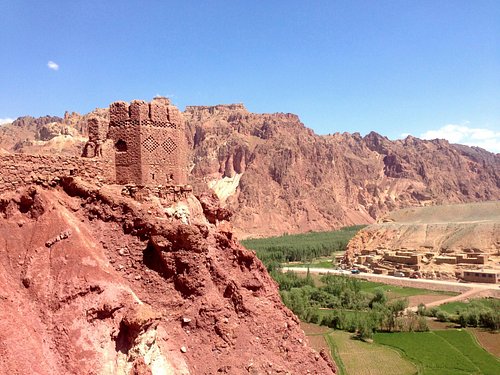
1. Cultural Landscape and Archaeological Remains of the Bamiyan Valley

2. Babur Tomb
3. Band-e-Amir National Park
4. Qargha Lake
5. Blue Mosque
6. Panjshir Mountains
7. Friday Mosque

8. Kabul Museum
9. Khwaja Abd Allah Ansari Shrine
10. Christian Cemetery
11. Darul Aman Palace
12. Herat Citadel

13. Bagh-e Babur

14. National Museum of Afghanistan
15. Gawhar Shad Madrasa and Mausoleum
16. Green Mosque
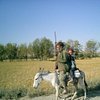
17. Shahr-e-Zahak (Red City)

18. Khawaja Ghaltan Shrine

19. Shah-e Doh Shamshira Mosque
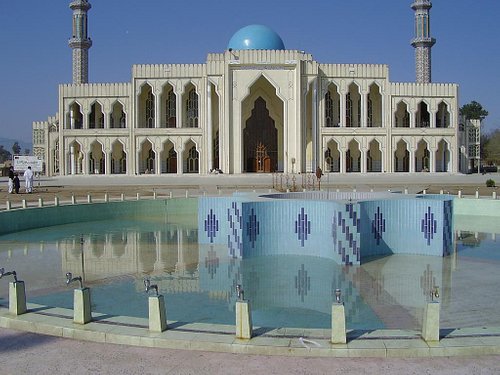
20. Khost Mosque
21. Jami's Tomb

22. Buddhas Of Bamiyan

23. Babur Gardens Mosque

24. Minaret and Archaeological Remains of Jam

25. Faizabad Chowk
26. Musalla Minarets of Herat

27. Red Mosque
28. Ziarat-e Sakhi

29. Pul-e Kheshti Mosque

30. Malan Bridge
What travellers are saying.
Travel in Afghanistan: The Ultimate Backpacker’s Guide
March 23, 2020.
Everything you need to know about travelling in Afghanistan. Where to visit, how to get around, safety, and more are covered in this comprehensive travel guide.
Wondering what it’s like to travel in Afghanistan? You’ve come to the right place.
I’ve spent over 5 weeks independently solo travelling all over the country – from the bazaars of Herat to the remote Wakhan Corridor. I absolutely adore Afghanistan and it’s people and would love for more travellers to be able to experience it for themselves.
In this Afghanistan travel guide, you’ll find all of the practical info you need to know about travel in Afghanistan. Let’s get right into it!
- 1 Why travel to Afghanistan?
- 2.1 Is Afghanistan safe?
- 2.2 Travel Insurance for Afghanistan
- 2.3 Money in Afghanistan
- 2.4 Languages of Afghanistan
- 3.1 How to get a visa for Afghanistan
- 3.2 Flying into Afghanistan
- 3.3 Overland into Afghanistan
- 4.2 Mazar-e-Sharif
- 4.4 Bamiyan
- 4.5 Wakhan Corridor
- 5 When to visit Afghanistan
- 6 Internet in Afghanistan
- 7 Female Travel in Afghanistan
- 8 Solo Travel in Afghanistan
- 9 How much does travel in Afghanistan cost?
- 10 Couchsurfing in Afghanistan
- 11 Resources for travel to Afghanistan
- 12 Afghanistan Travel Guide Wrap-up
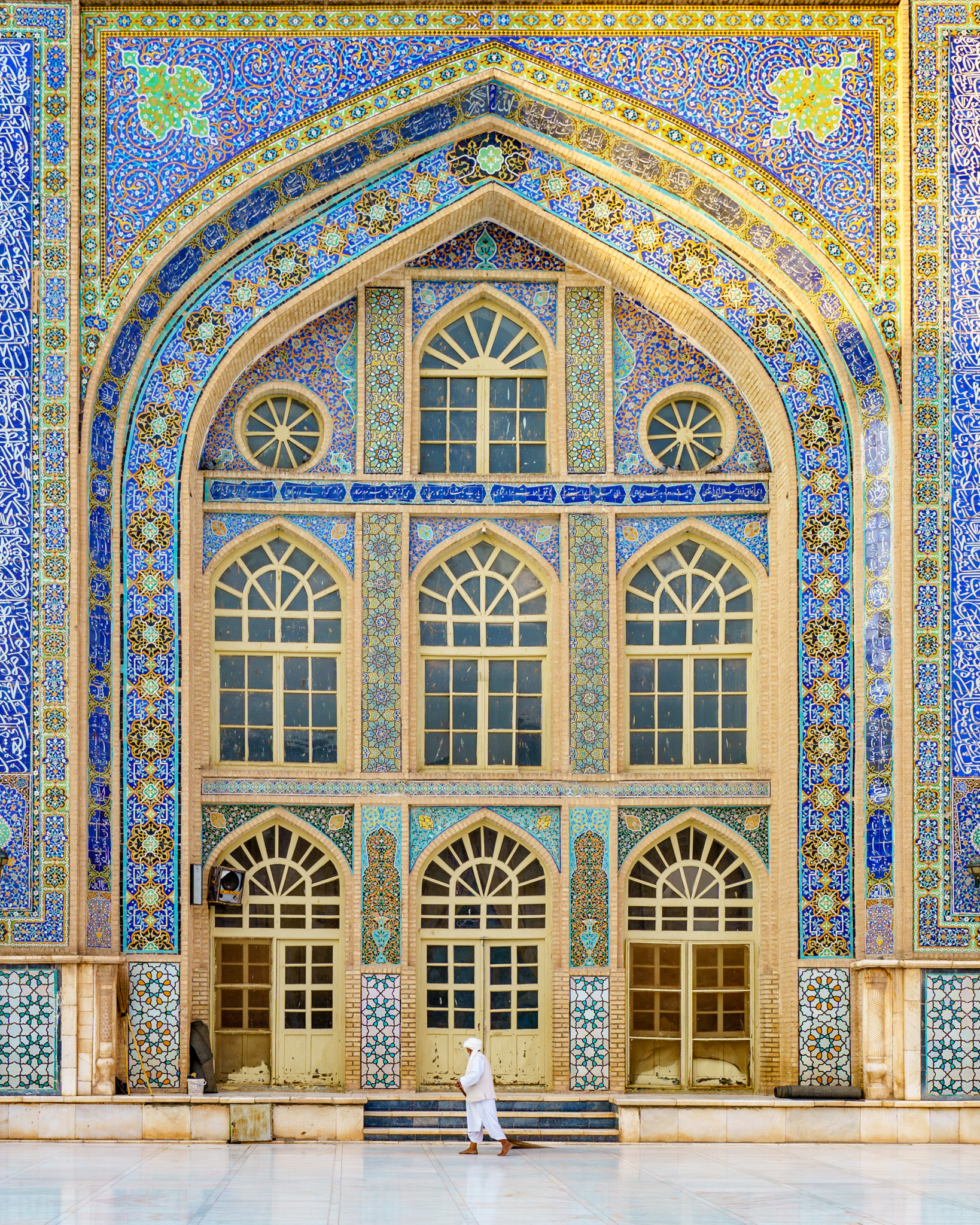
Why travel to Afghanistan?
This is a question that I’ve been asked a lot, and I understand why.
Western media only portrays Afghanistan as a poor and war-torn nation. While they’re not wrong, Afghanistan is so so so much more than that.
Afghanistan is a land where cultures, languages, and people collide – it’s where the Middle East, the Indian Subcontinent, and Central Asia blend together. When you visit Afghanistan, you’ll get to taste Persian food, hang out with Pashto speakers, and smoke hash with Uzbeks.
Afghanistan is also insanely beautiful . The Hindu Kush mountains run through the heart of the nation and offer scenery that you can’t find anywhere else. Further east in the Wakhan Corridor are some massive 7,000-meter peaks that tower above the villages at their feet.
I don’t recommend Afghanistan as a travel destination for everyone. It’s a challenging country to travel in, and it is not safe.
But if you’re up for it, then a visit to Afghanistan will be unforgettable. I promise.
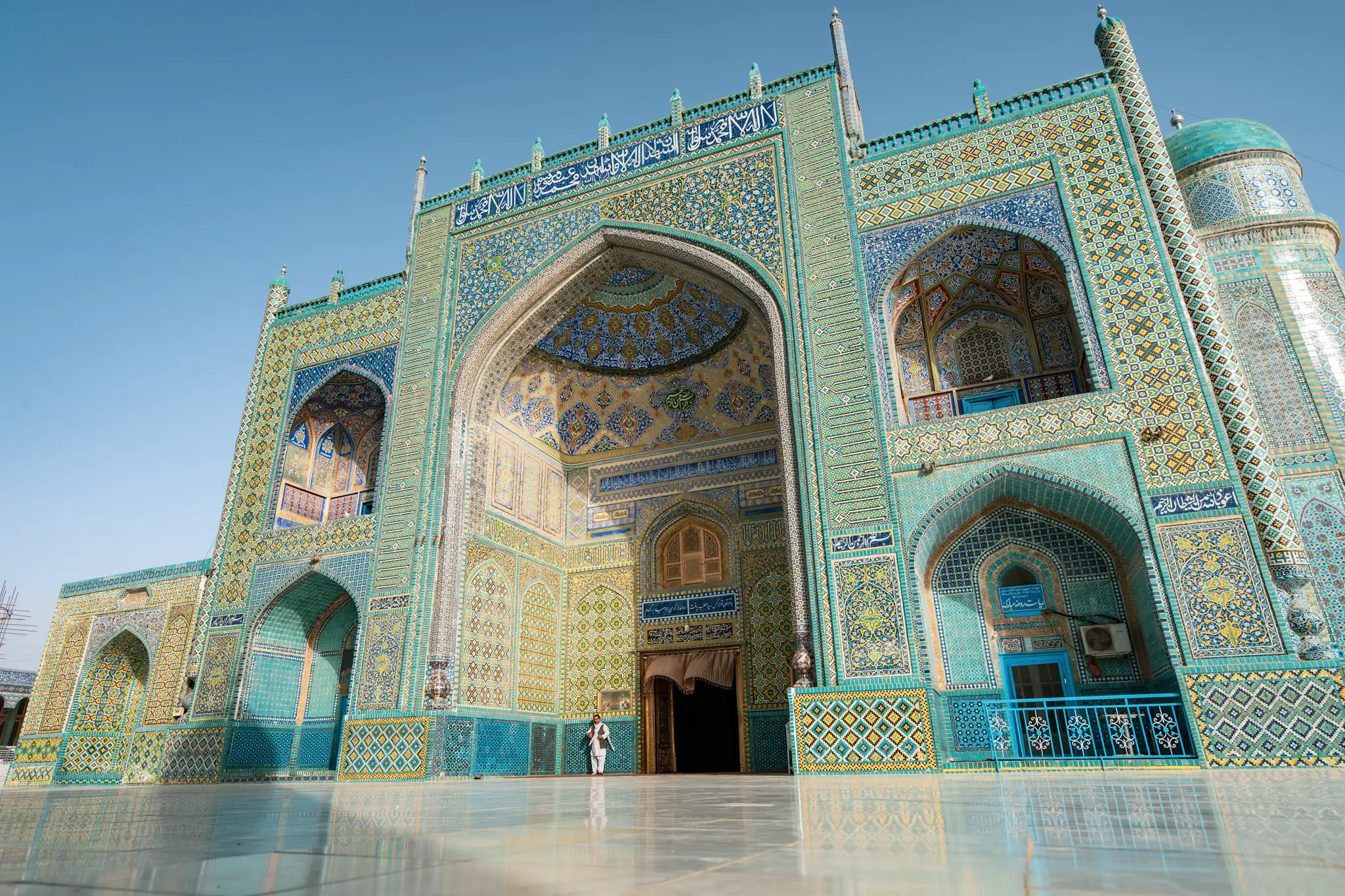
Before you visit Afghanistan
Here are a few things that you need to know about Afghanistan before your visit.
Is Afghanistan safe?
This is probably one of the first things on your mind when you think about heading to Afghanistan.
Afghanistan is not a safe country – and it would be foolish for me to say otherwise. Large areas of Afghanistan are under Taliban control, which means that travelling there is basically suicidal.
Here are the places that are currently relatively safe to visit in Afghanistan:
- Kabul (including Panjshir)
- Mazar-e-Sharif (including Balkh and Samagan)
Wakhan Corridor
While it’s possible to visit these places somewhat safely, certain precautions still need to be taken. They’re certainly not as safe as destinations such as Europe or SEA, but they’re also not on the same level as Yemen.
When visiting the above destinations, your main risks are kidnapping, robbery, and random attacks (wrong place at the wrong time).
You’ll need to decide for yourself if your risk tolerance is high enough to visit Afghanistan. Travel to Afghanistan is not something I can recommend (at this time), although if you’re an experienced traveller, then it is possible.
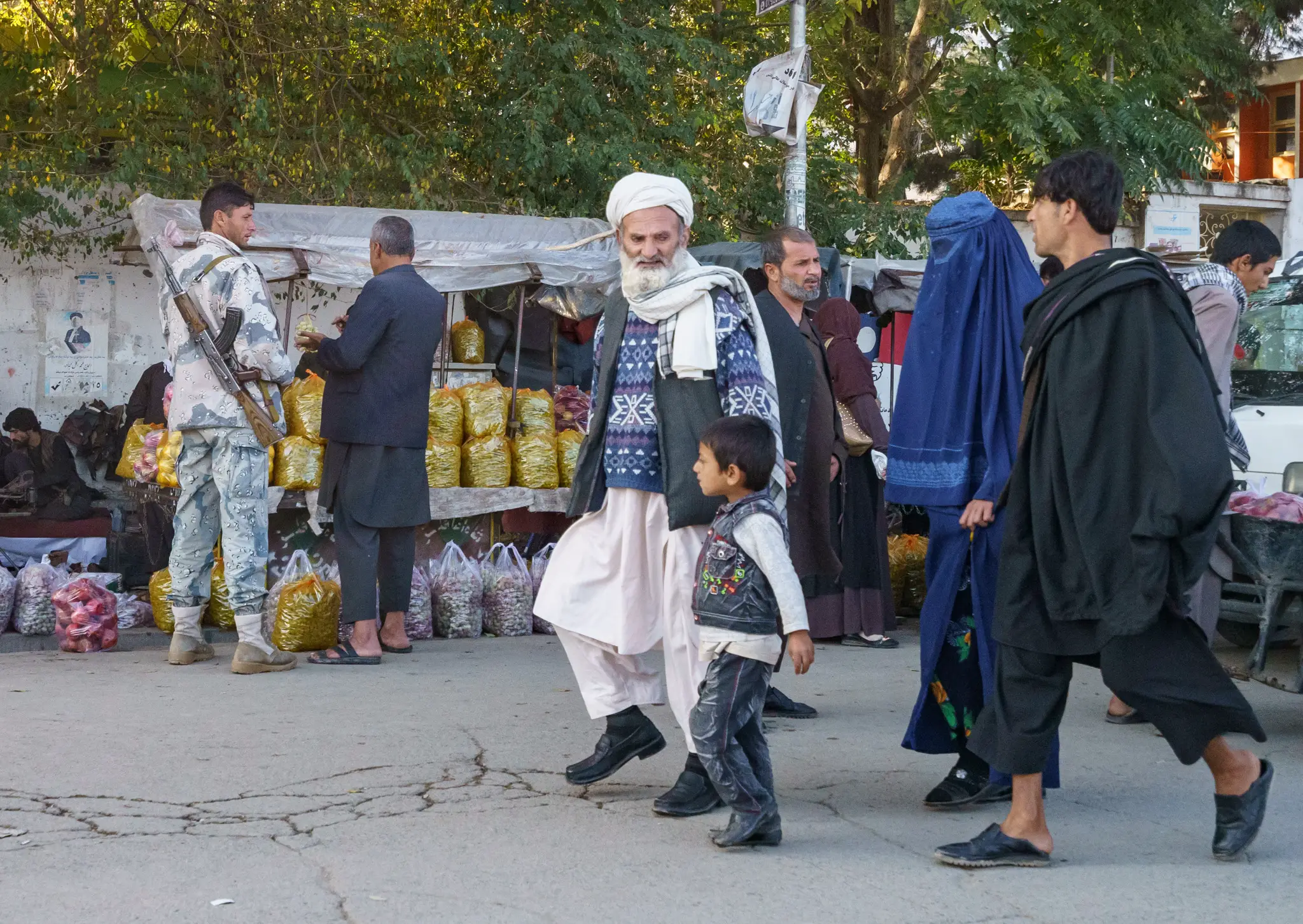
Travel Insurance for Afghanistan
Travel insurance is extremely important if you’re going to visit Afghanistan. Unfortunately, finding travel insurance that will cover Afghanistan is difficult. While I normally use World Nomads when travelling, they don’t cover Afghanistan (understandably).
I’ve been searching for an insurance provider to recommend to my readers, but I haven’t found the ideal one yet. Check out this thread for some discussion on travel insurance in Afghanistan.
Money in Afghanistan
Afghanistan’s official currency is the Afghani (AFN).
The current exchange rate is $1 = 76 Afghani as of March 2020. Check out XE.com for the latest rates.
US dollars are widely accepted in Afghanistan, and you’ll be able to find money changers all over the place. Money changers usually offer very fair rates to change USD to AFN, although be sure to bring crisp US bills.
Credit cards are basically useless in Afghanistan, outside of high-end hotels in Kabul. There are some ATMs in Kabul and other cities that accept foreign debit cards, but I wouldn’t count on the reliability of these things. Instead, try to bring enough USD to last your entire trip.
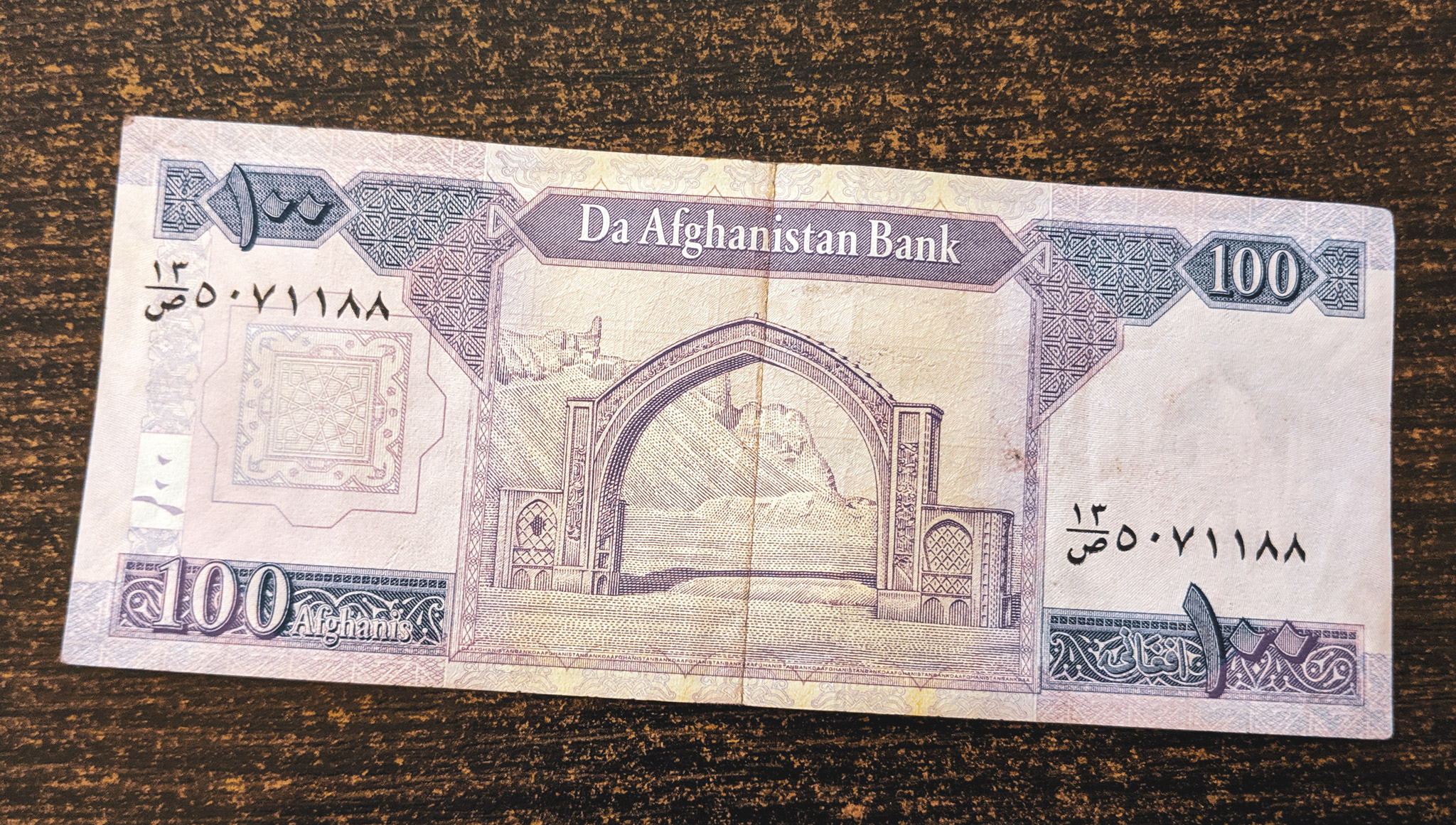
Languages of Afghanistan
Afghanistan is a multilingual country, with it’s two official languages being Dari (Afghan Farsi) and Pashto.
In certain parts of the country, you’ll also find Uzbek, Turkmen, Balochi, Pashai, Nuristani, Wakhi, and Kyrgyz being spoken.
English is hard to come by in Afghanistan, especially outside of Kabul. Learning basic Dari and carrying a phrasebook will be very helpful if you plan on travelling in Afghanistan.
People working in the tourism industry often have a basic grasp of English, especially guesthouse owners.
Travelling with a local is another good idea, as they’ll be able to help translate for you. There are quite a few locals on Couchsurfing who would be happy to take you around.
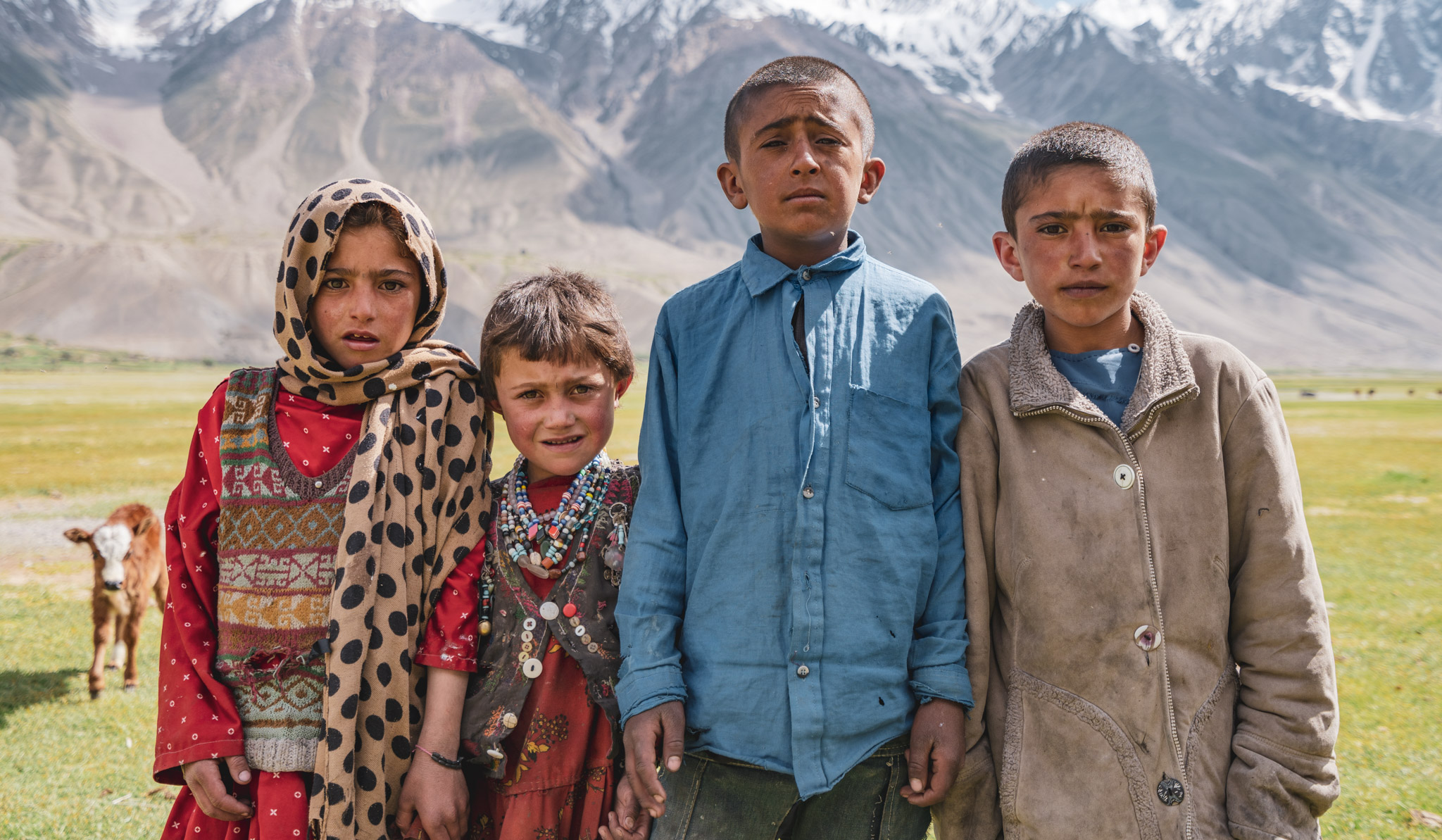
Getting to Afghanistan
Getting to Afghanistan can be a challenge. Tourist visas are hard to come by, and many land borders aren’t safe for foreigners.
Let’s go over what you need to know to get into Afghanistan:
How to get a visa for Afghanistan
All nationalities need a visa to visit Afghanistan, and getting a tourist visa is a challenge. Most Afghan embassies don’t want to issue tourist visas due to the security risks for travellers in Afghanistan.
If you are planning on visiting Afghanistan with a licensed tour operator, they’ll be able to provide you with an invitation letter. With an invitation letter, the Afghan embassy in your home country shouldn’t have any problem issuing your visa.
Things get complicated if you want to visit independently. Tour operators won’t issue an invitation letter if you aren’t travelling with them (understandable).
There are a couple of Afghan embassies that will issue tourist visas without an invitation letter. Currently, they are Khorog , Islamabad , Bishkek , Almaty . Requirements are constantly changing, and this list is only based on the latest information I have available.
I’ve had success in getting Afghan tourist visas in both Islamabad and Bishkek without a letter of invitation.
Afghan tourist visas are always valid for 30-days and are single-entry. They are valid for a 3-month period that is stated on the visa.
For more information, see my guide to getting an Afghanistan tourist visa. ( Coming Soon )
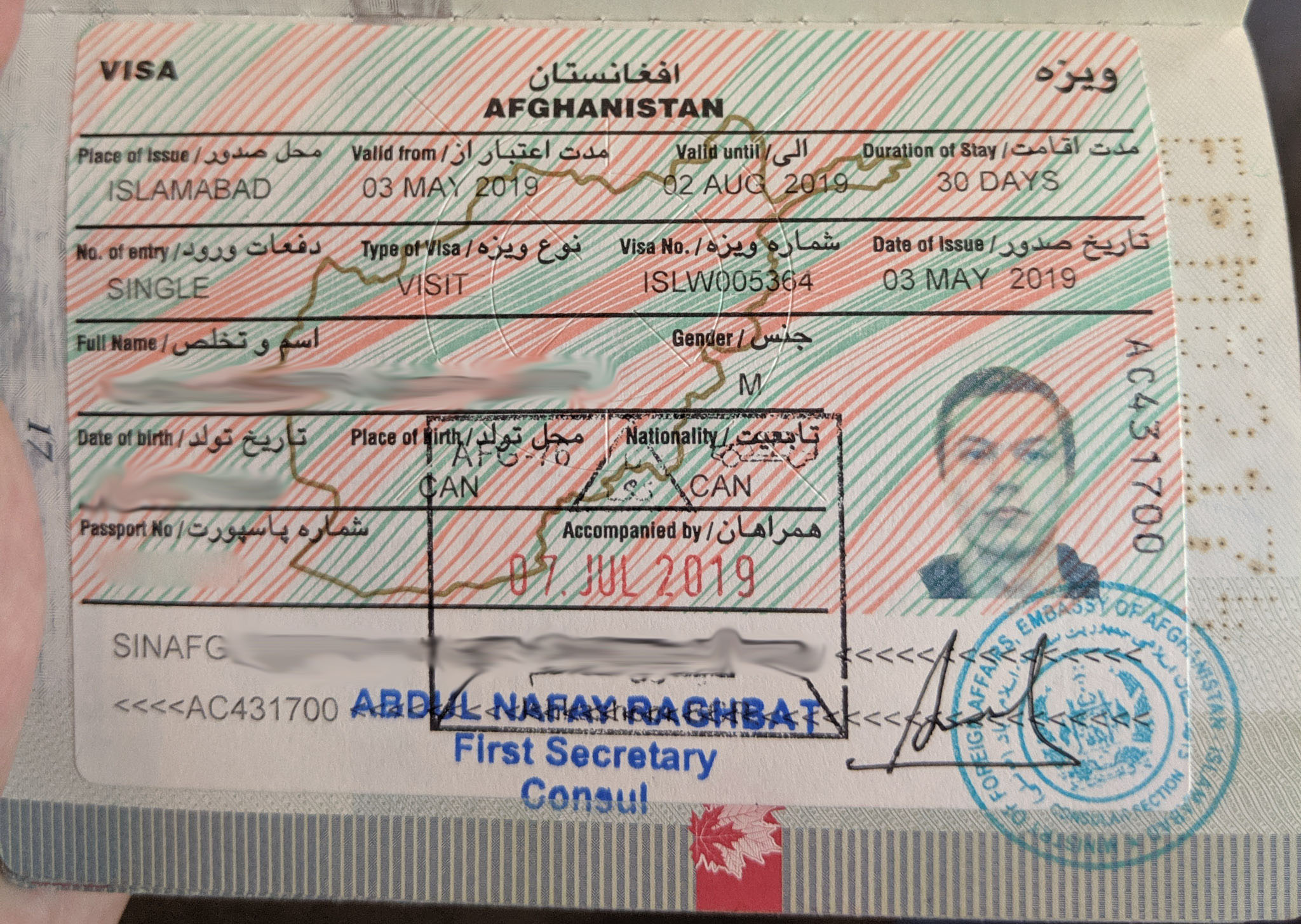
Flying into Afghanistan
Flying into Afghanistan is a good idea if you want to avoid an overland border crossing.
Afghanistan is reasonably well connected to nearby countries by air.
Kabul is the largest international airport, with daily flights from Istanbul, Dubai, Islamabad, and Delhi. There are also frequent flights from Tashkent, Dushanbe, Tehran, Jeddah, and Ankara.
Mazar-e-Sharif has flights to Istanbul, Delhi, and Moscow (once per week).
Herat has flights to Delhi, and Kandahar has flights to Delhi, Dubai, and Jeddah.
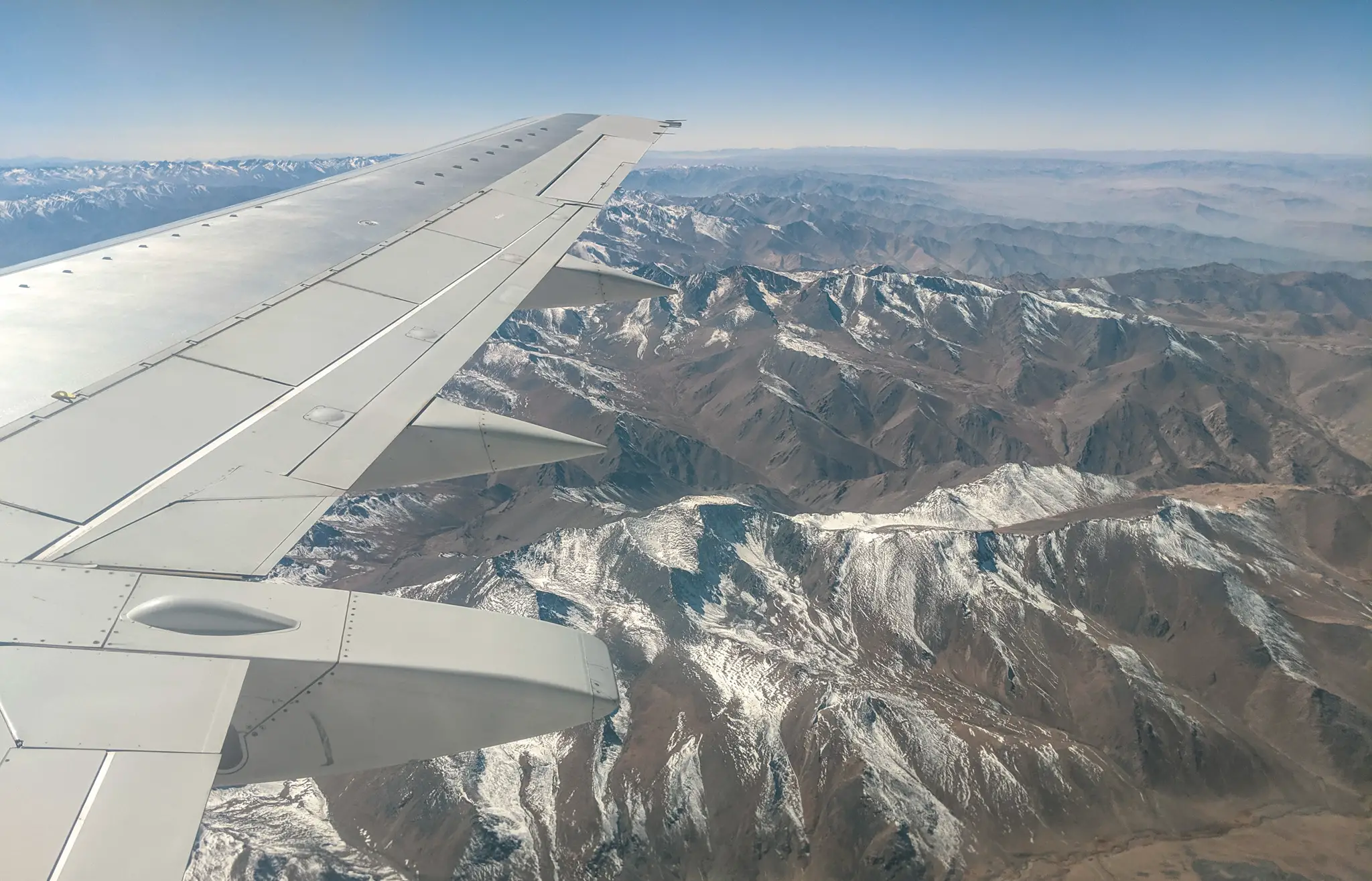
Overland into Afghanistan
There are a few different ways to travel overland into Afghanistan.
Uzbekistan to Afghanistan
The Hairatan border crossing between Termez and Mazar-e-Sharif is one of the safest Afghan border crossings.
Provided your visas are in order, this is a great way to enter Afghanistan overland.
Check out my guide to the Hairatan border crossing for more info.
Tajikistan to Afghanistan
Crossing from Tajikistan to the Afghan Wakhan Corridor at Ishkashim is safe and straightforward.
See my Wakhan Corridor guide for more info on this border crossing.
There is also a border crossing between Southern Tajikistan and Kunduz, but this border is not safe right now.
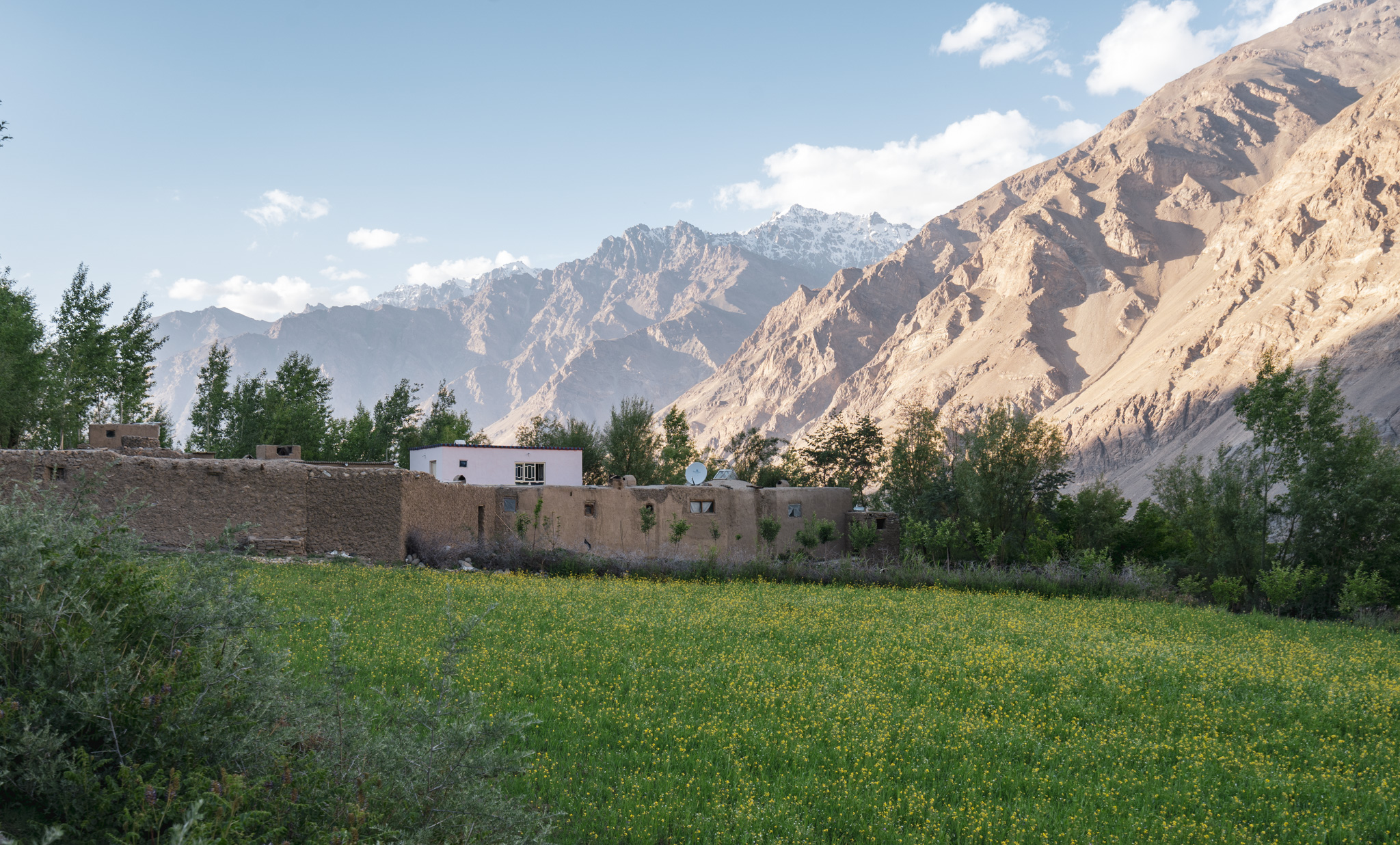
Pakistan to Afghanistan
The Khyber Pass connecting Peshawar and Jalalabad is one of the most famous border crossings in the world.
Foreigners have successfully crossed this border, but it’s not recommended.
Here’s a report from someone who attempted to cross the Khyber Pass in 2018.
Iran to Afghanistan
It is possible to travel between Mashhad and Herat safely. After entering Afghanistan, a shared taxi should cost about 250 Afghani from the border to Herat.
Turkmenistan to Afghanistan
The border between Merv and Herat is reportedly open, although not so easy to cross. You’ll need to arrange a tour to Turkmenistan if you wish to enter this way, as it’s not possible to get a transit visa for Turkmenistan in/to Afghanistan (I tried).
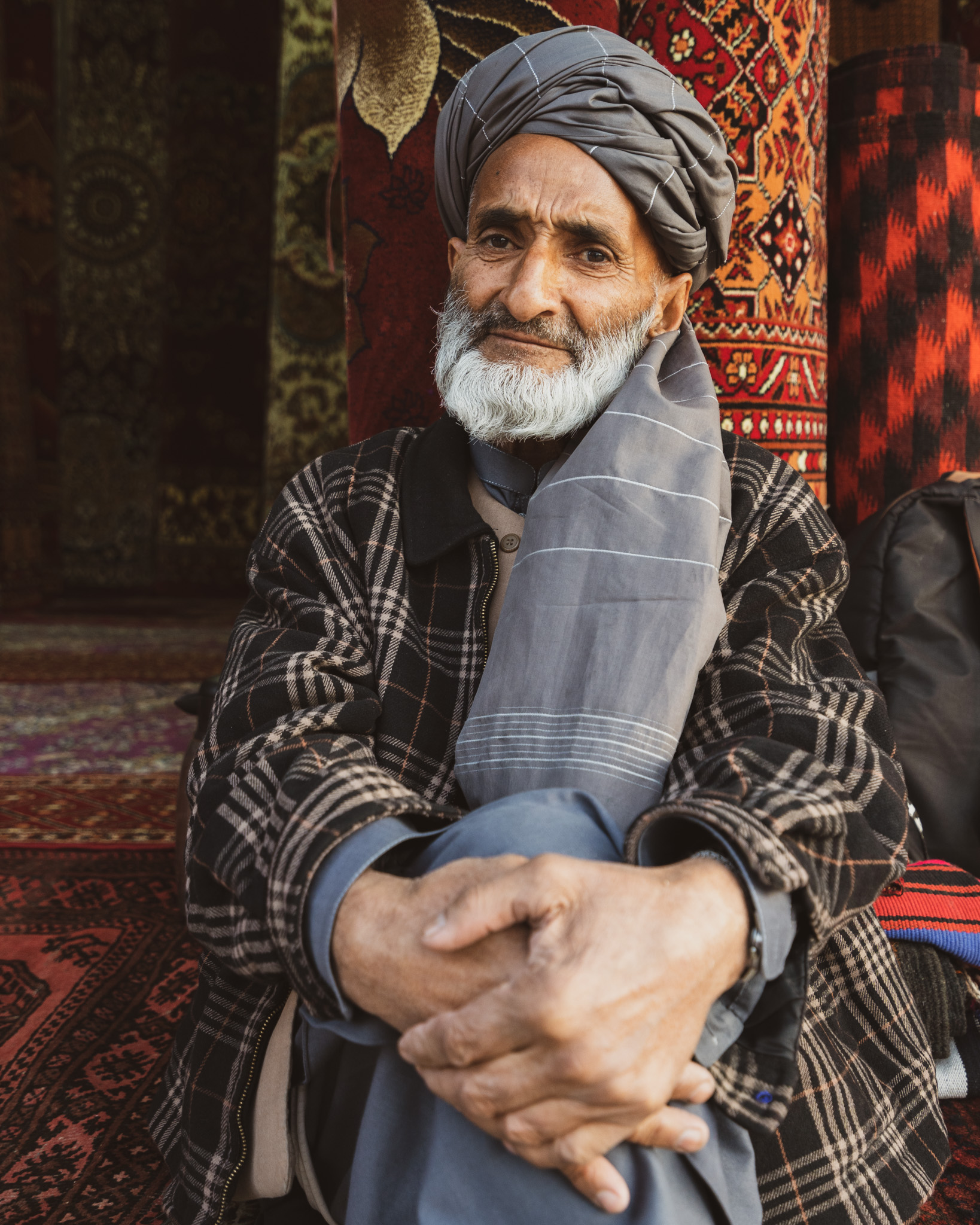
Places to visit in Afghanistan
At the moment, it’s only possible to visit certain parts of Afghanistan. Here’s everything you need to know about travelling to the safe parts of Afghanistan.
Kabul is the heart of Afghanistan. As the nation’s capital, it’s been through a lot – over time it has hosted the British, Soviets, and most recently, the Americans.
Kabul sits at about 1,800 meters above sea level and is surrounded by the high Hindu Kush mountains on all sides.
The city is currently home to over 5 million people and is one of the world’s fastest-growing cities . Kabul is home to people from all over Afghanistan looking to work in the big city.
Things to do in Kabul
There’s of things to do in Kabul, here are some of the ones I recommend:
- Gardens of Babur – Laid out by the Mugal ruler Babur sometime in the 16th century, these beautiful gardens are the perfect way to escape the crowded streets of Kabul for some relaxation time. The entrance fee is 250 Afghani for foreigners.
- Kart-e-Sakhi – A beautiful Shia shrine and mosque that is full of locals in the afternoons (especially on Fridays).
- Shah-e-Doh Mosque – Another beautiful mosque in Kabul. Unfortunately, it was closed for renovations when I was in the city.
- Darul Aman Palace – King Amanullah’s Palace. It was destroyed by the Taliban but has recently been restored to its former glory.
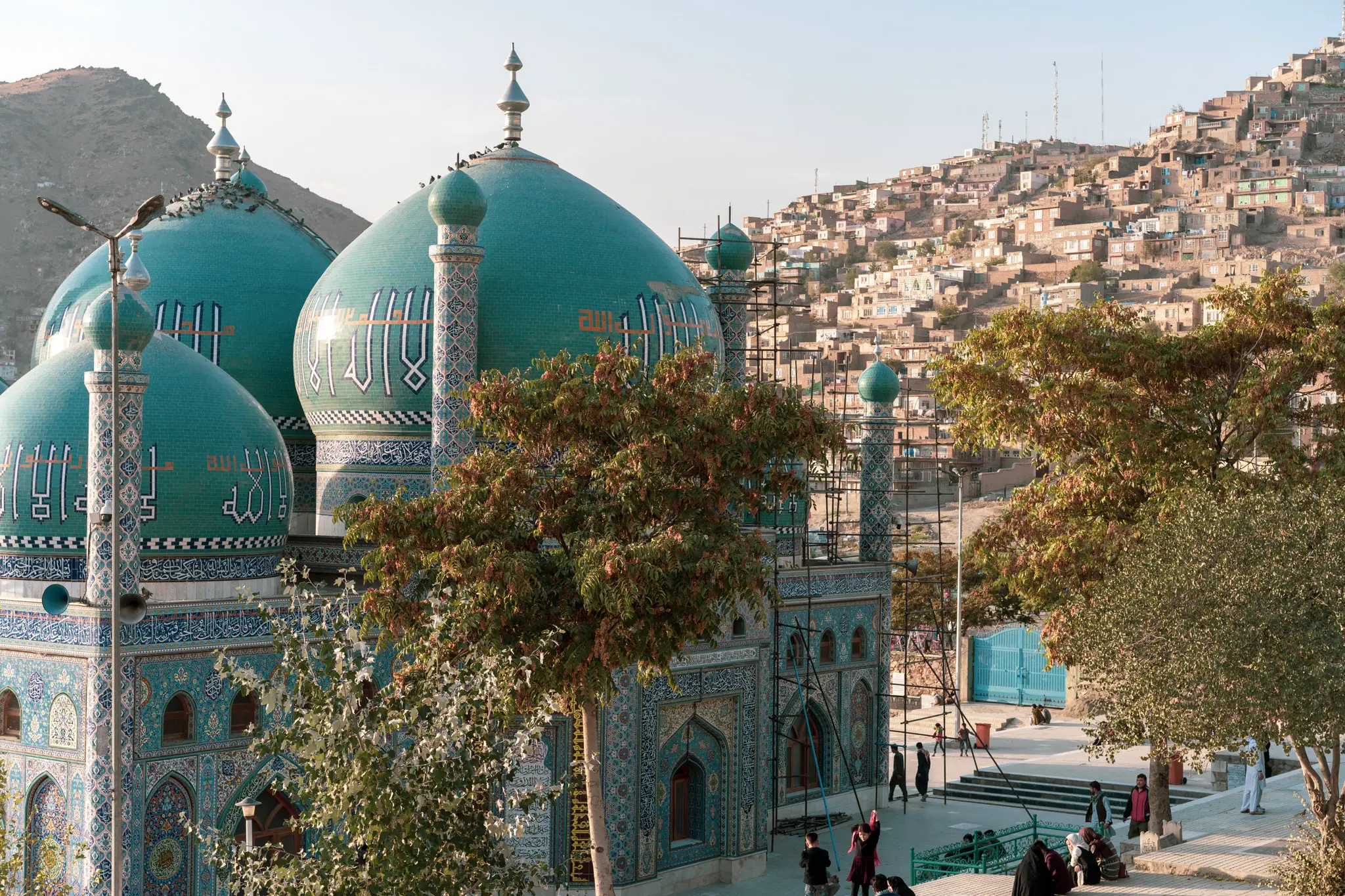
Where to stay in Kabul
- Salsal Guesthouse – A decent budget option in the center of town. No single rooms, but a double with a shared bathroom should cost 1000 Afghani. Not particularly clean.
Getting to Kabul
There are daily flights to Kabul from Mazar-e-Sharif, Herat, and Kandahar. These will typically cost about $100 one-way and can be booked on fairly short notice.
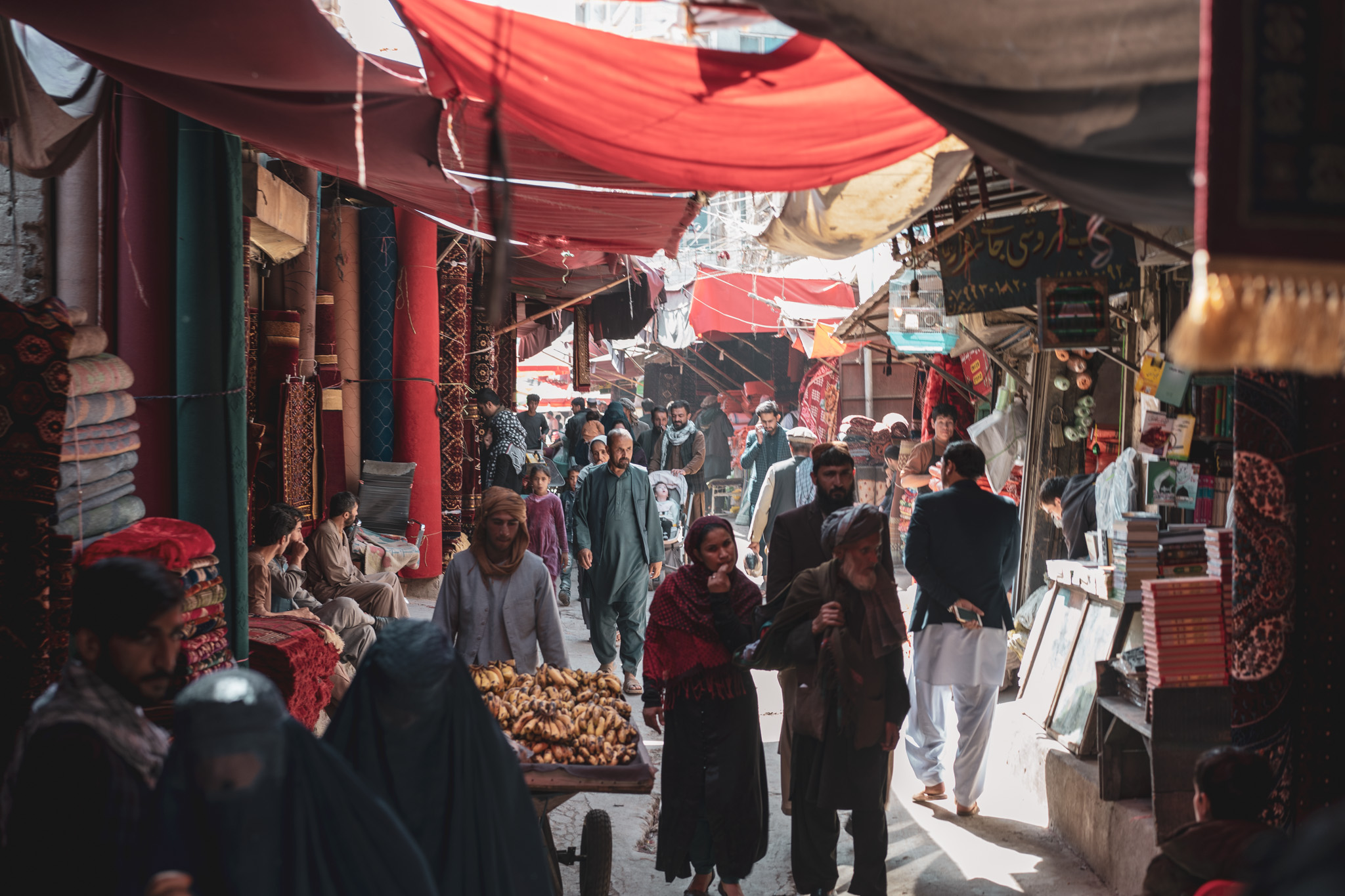
Mazar-e-Sharif
Located in Northern Afghanistan near the border with Uzbekistan, Mazar-e-Sharif is Afghanistan’s fourth-largest city and a must-visit place if you’re planning on travelling to mainland Afghanistan.
Mazar-e-Sharif is most famous for its incredible Shrine of Hazrat Ali (or Blue Mosque). I ended up visiting the mosque on three different occasions, and I’d say it’s one of the most beautiful buildings I’ve ever seen.
Things to do in Mazar-e-Sharif
Here’s what I recommend doing if you make it to Mazar-e-Sharif:
- Shrine of Hazrat Ali – One of the most stunning buildings in the world. Visit in the late afternoon for the best lighting. Entry is free.
- Day trip to Old Balkh – Balkh was the former capital of the Bactrian Kingdom and has existed since as early as 500BC. Alexander the Great, Genghis Khan, Timur, and Marco Polo all passed through this city that nowadays isn’t much more than a large ring of dirt. It’s fairly simple to visit Old Balkh as a day trip from Mazar-e-Sharif. However, the security situation in Balkh is unstable, so get in touch with some locals to find out the latest news before you go.
- Day trip to Samangan – Another awesome day trip, Samangan was once a Buddhist kingdom and is filled with ancient Stupas and other Buddhist relics.
- Roam the bazaars – The bazaars surrounding the Shrine of Hazrat Ali are full of life, and a great place to pick up some local Afghan clothes to help you blend in.
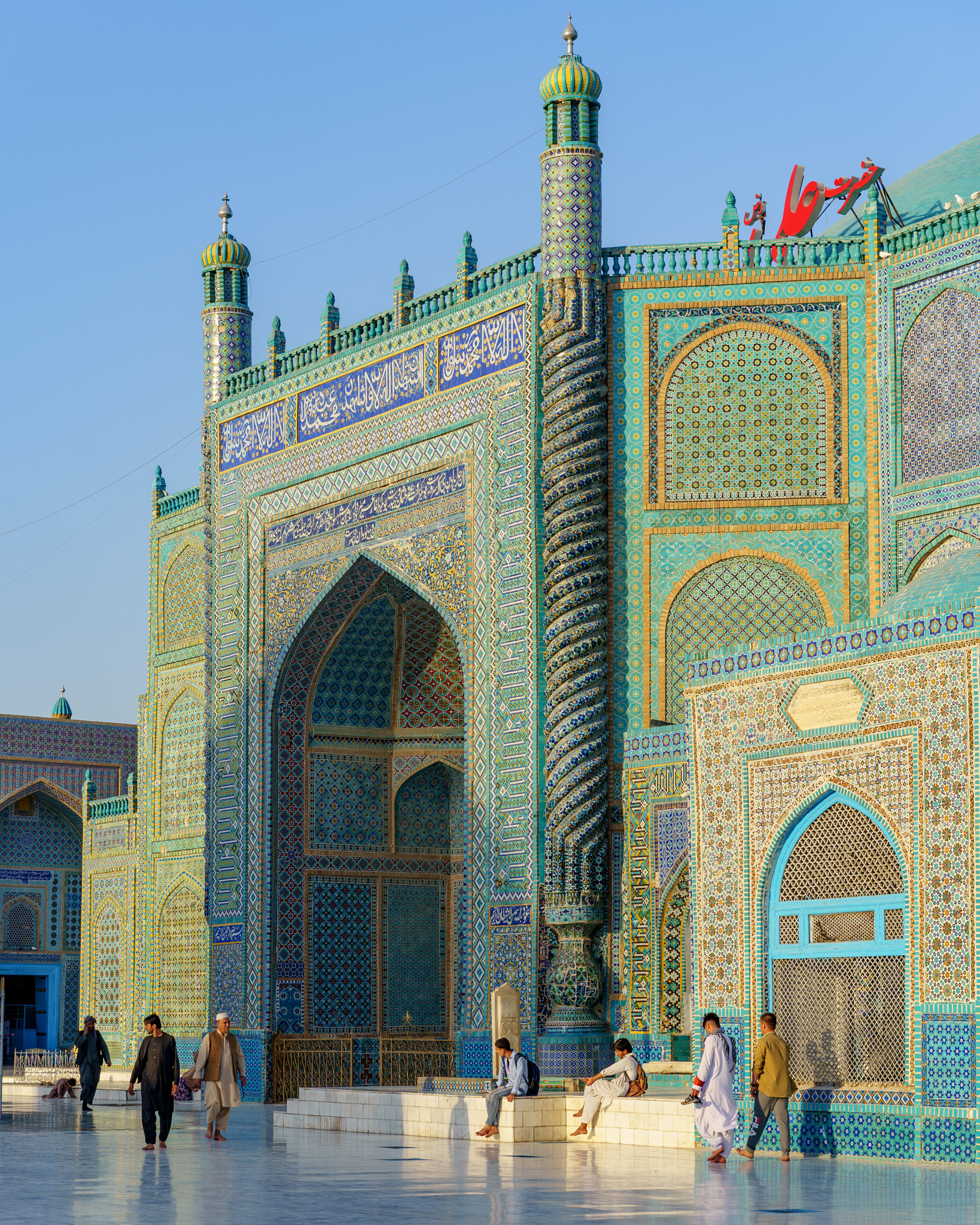
Where to stay in Mazar-e-Sharif
I had a bit of trouble finding a budget place to stay in Mazar-e-Sharif. Barg-e-Sabs was mentioned online as the best budget option, but when I managed to find it there were a bunch of random people hanging out in the “lobby” and it didn’t seem as though it was operating as an official hotel anymore (no staff were there).
I checked out a few other places, so here’s what I found:
- Karwan Balk Guesthouse – This is where I ended up staying. $25 a night for a nice single room on the 7th floor with a great view of the city and including breakfast. The staff were very friendly although didn’t speak any English.
- Barat Hotel – Right next to the Blue Mosque, they wanted $40 a night for a single room and wouldn’t budge any lower. A good option if you want to stay in the center of town.
There are some great people on Couchsurfing in Mazar-e-Sharif, so be sure to see if you can find anyone to host you.
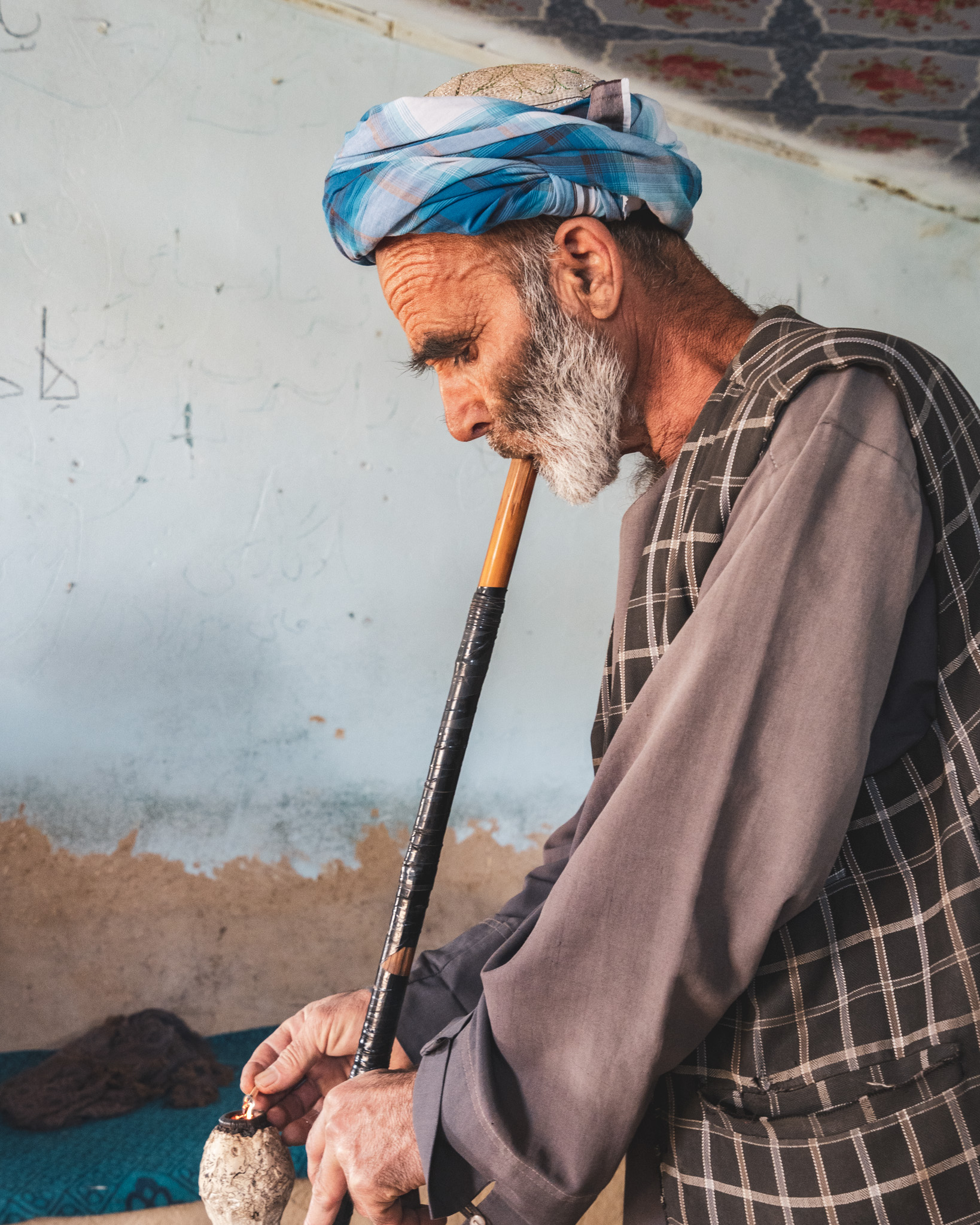
Getting to Mazar-e-Sharif
The easiest way to get to Mazar-e-Sharif is to use the Hairatan border crossing from Uzbekistan .
There are also daily flights between Kabul and Mazar-e-Sharif.
Overland travel between Kabul and Mazar-e-Sharif via the Salang Pass is not advised . The security situation along this road changes rapidly, and even if it was safe 24 hours ago it could be under Taliban control now.
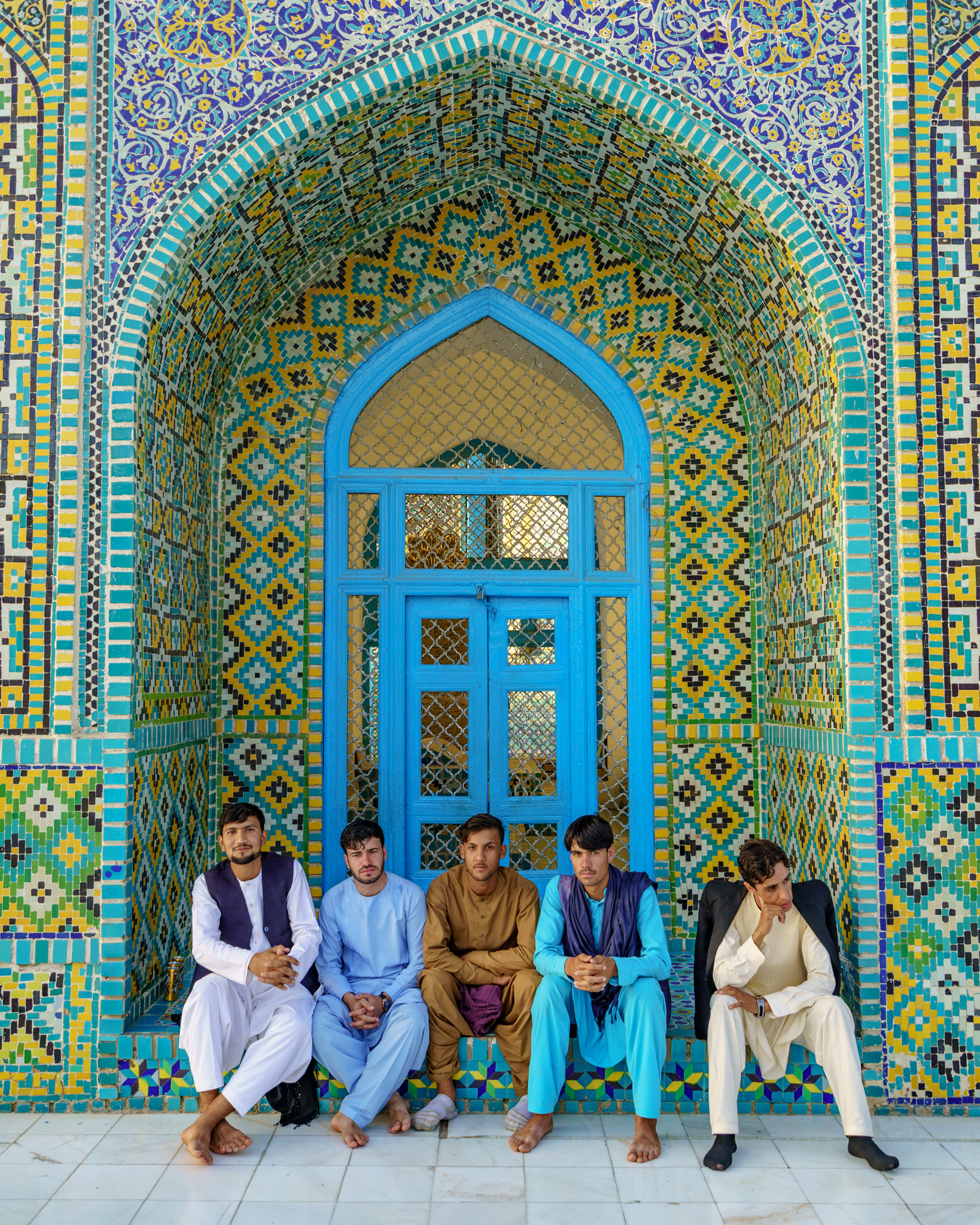
Herat another major city in Afghanistan located near the Iranian border. It’s a historically Persian city and has a very unique Persian-Afghan culture blend.
Wandering around Herat’s Old City feels like travelling back in time, and it’s Friday Mosque will leave even the most well-travelled in awe.
Things to do in Herat
- The Great Mosque of Herat – Another one of Afghanistan’s stunning mosques. This building is absolutely beautiful, and you could spend hours roaming around and watching worshippers pray.
- Musalla Complex – Once upon a time, this was the largest mosque in Herat. unfortunately, it was destroyed by the British in 1885 and today only five massive minarets remain.
- Herat Citadel – A massive fortress that was recently restored. It’s a great place to spend an afternoon wandering around.
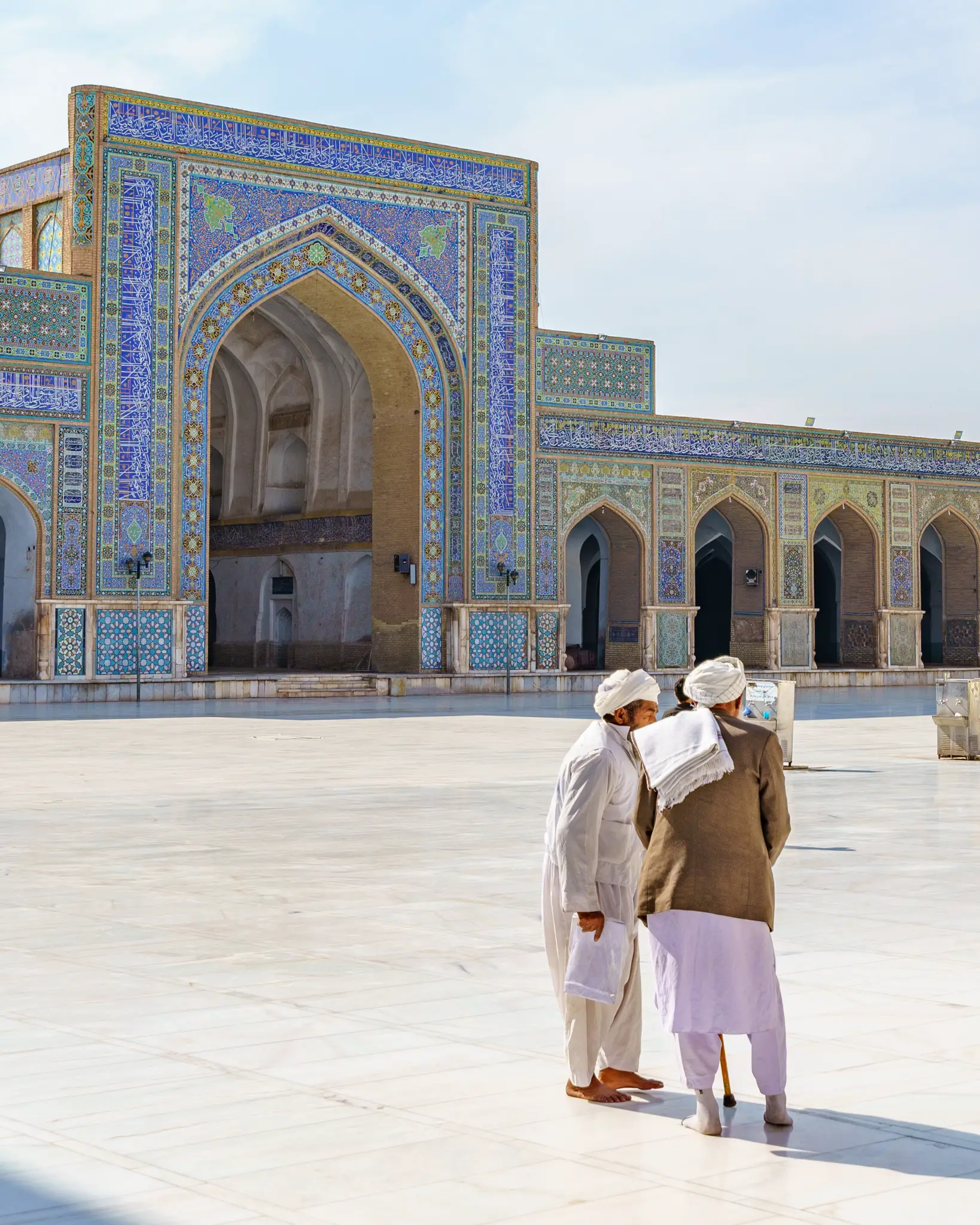
Where to stay in Herat
You’ve got a few different options for places to stay in Herat.
- Hotel Darya – This is where I ended up staying. $20 a night for a basic single room with a private bathroom. It is located right near the Grand Mosque and the staff were friendly.
- Marco Polo Hotel – A slightly more expensive option, rooms here will run you $40 to $50 a night for a single.
Getting to Herat
The only way to safely get to Herat from other parts of Afghanistan is by air. There are daily flights from Kabul on Kam Air for around $90.
The only alternative way to get to Herat is from Mashad, Iran – although you will still need to fly to get to anywhere else in Afghanistan.
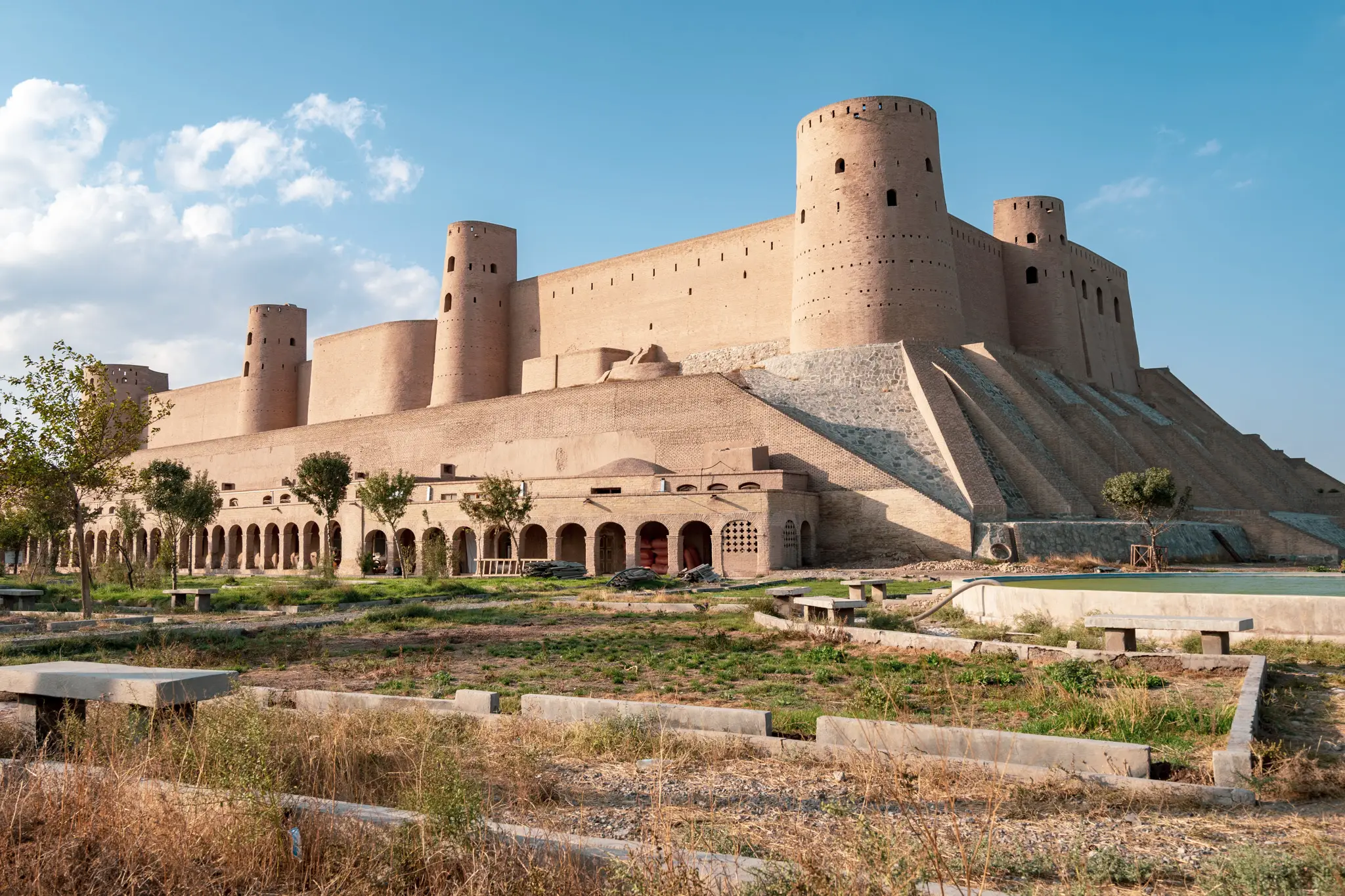
Bamiyan is one of my favourite places I’ve ever been – it’s a peaceful oasis located high in Afghanistan’s Hindu Kush mountains.
I could have spent weeks exploring this place, there’s just so many picturesque villages and valleys filled with warm, hospitable people. I hope to be back soon to see more.
When you are in Bamiyan, you’ll need to purchase a 300 Afghani entrance ticket which will allow you to enter most sights (other than Band-e-Amir which is a separate ticket). The main ticket can be purchased near the base of the largest Buddha.
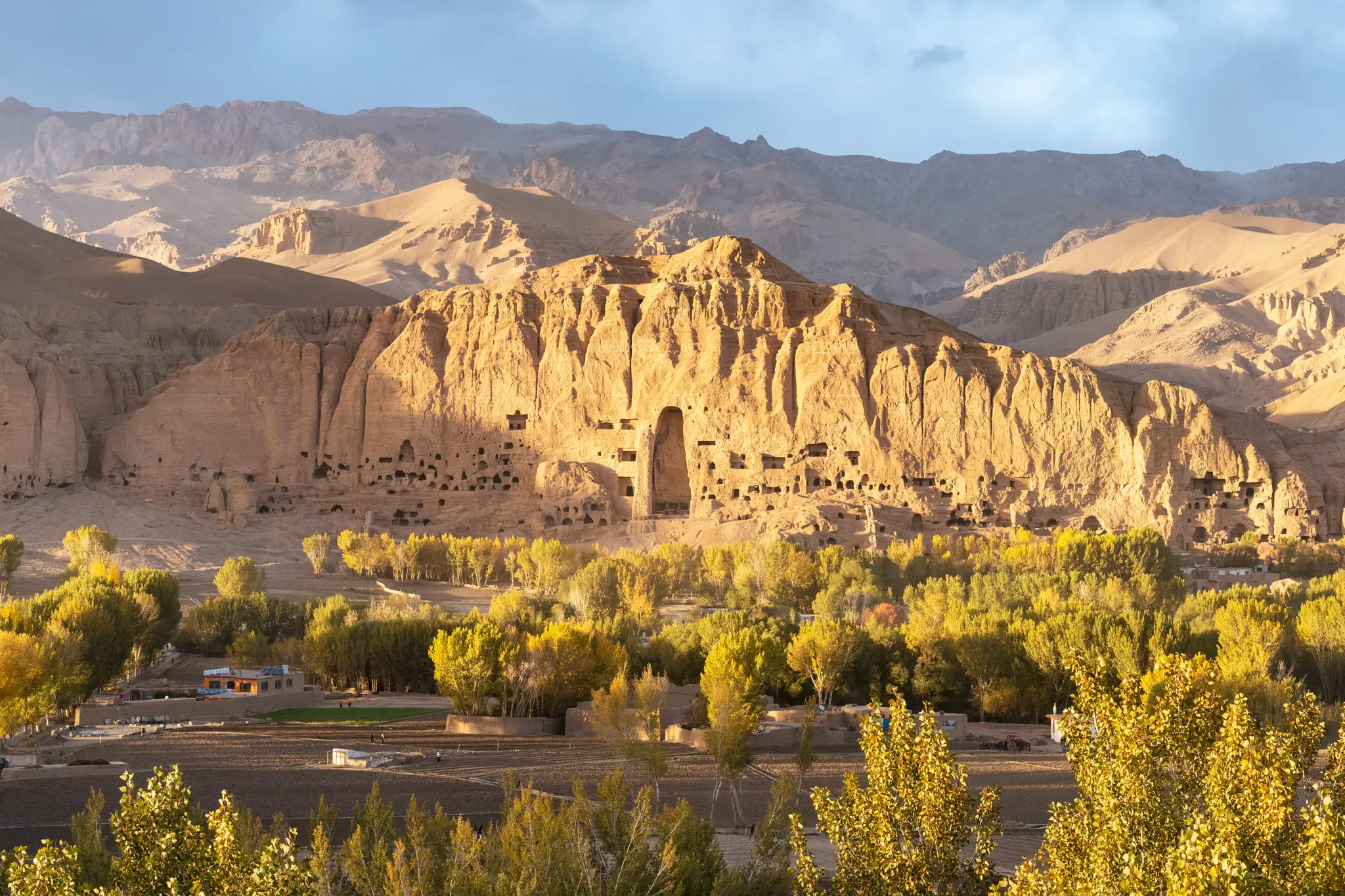
Things to do in Bamiyan
- Band-e-Amir National Park – Band-e-Amir is Afghanistan’s crown jewel. It’s located at 3,000 meters above sea level about 1.5 hours outside of Bamiyan Town. Band-e-Amir is home to six gorgeous blue lakes and is perfect for photography. The entrance fee is 250 Afghani.
- Buddhas of Bamiyan – Probably the most famous sight in all of Afghanistan. The Buddhas of Bamiyan were tragically destroyed by the Taliban in 2001, but the remains are still a stunning sight to see. It’s hard to miss these when you visit Bamiyan, they can be seen from all over town.
- Shahr-e Gholghola – An imposing fortress was the location of the Ghorid Bamiyan’s final battle against the Mongol hordes of Genghis Khan. Located in the center of Bamiyan town, you’ll be able to see it rising above as soon as you arrive.
- Shahr-e Zohak – This is another fortress, but it is located near the entrance to the Bamiyan Valley. It’s perched on cliffs high above the valley and is a great half-day trip from town.
- Dara-e Ajdahar – Also known as the Dragon Valley. Once upon a time, legend has it that Ali, the son of Prophet Mohammad, slew a dragon here. You can take a taxi here (or walk) from Bamiyan town and spend a couple of hours walking around taking in the views.
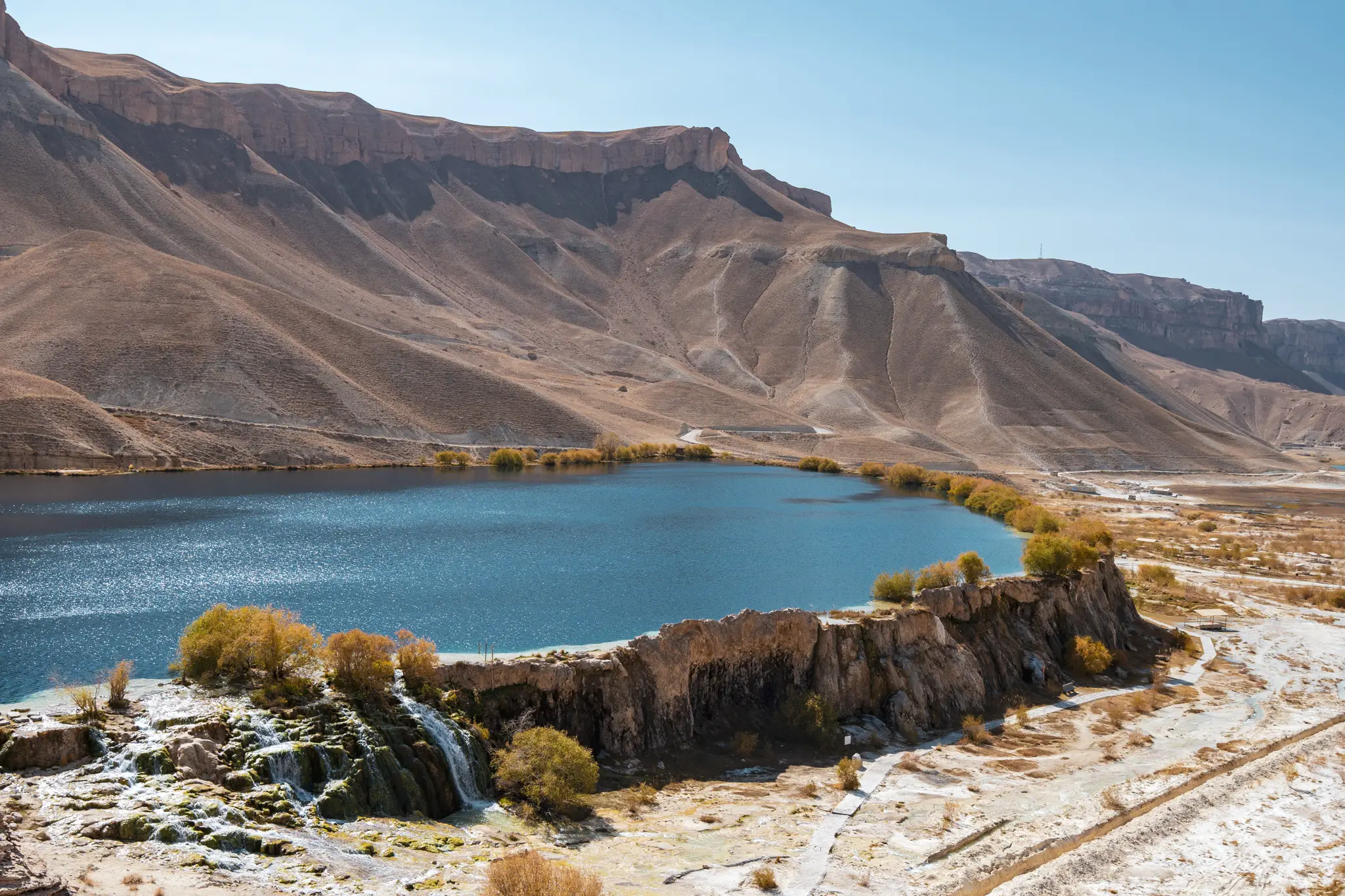
Where to stay in Bamiyan
Bamiyan has quite a few decent places to stay:
- Cheelhil Burg Hotel – This is where I stayed and I liked it! It’s located a bit far from the town center (closer to Ajdahar village), but is a nice place and is run by a friendly family. It costs 2000 Afghani per night for a double room ($26).
- Chaikhanas – These are your cheapest option. They’re scattered throughout the main bazaar and are basically just a room with cushions on the floor. They cost between 400 and 500 Afghani per night (~$6).
- Highland Hotel – A higher-end option, the Highland has a great view of the Bamiyan Valley and is run by a great guy. Prices are around $50 – 90 depending on the season and your negotiation skills.
Getting to Bamiyan
Getting to Bamiyan is a challenge because the road there passes through dangerous Taliban territory. Flying is a better option, although flights are sporadic.
To learn more about travelling in Bamiyan, check out my detailed Bamiyan Travel Guide .
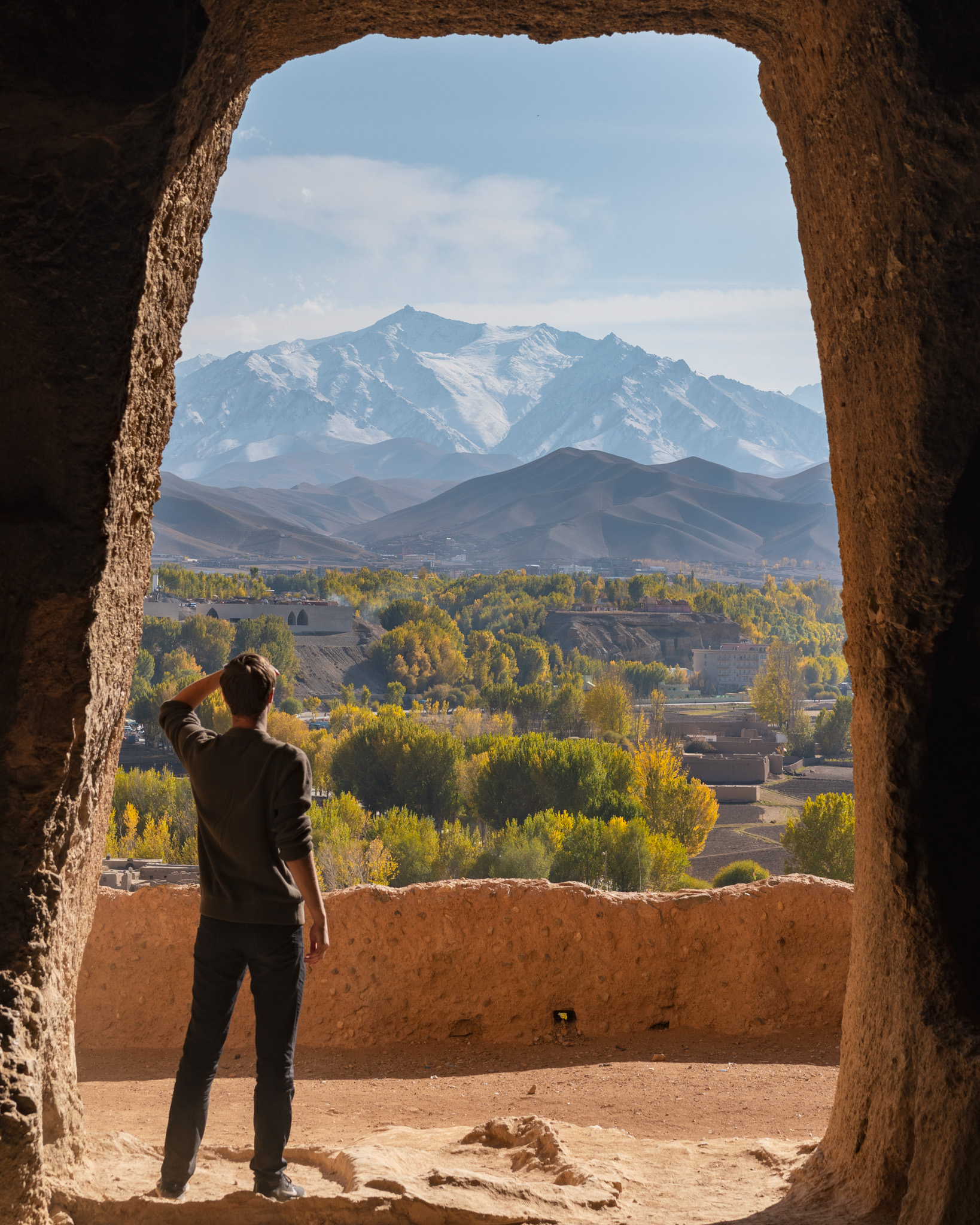
The Wakhan Corridor is far different from the Afghanistan that most people know. It is a remote and mountainous strip of land bordered by Tajikistan, Pakistan, and China. The Wakhan Corridor separates the Pamir and Karakorum mountains and is home to the source of the Amu Darya (Oxus).
It’s one of the safest parts of the country (only Bamiyan could be considered slightly safer) and is the perfect place for nature lovers who want to experience Afghanistan.
Things to do in the Wakhan Corridor
- Ishkashim Bazaar – If you’ve only got a bit of time then your best bet is to spend it in Ishkashim, checking out its bazaar and getting a feel for life in Afghanistan.
- Trekking – By far the most popular activity in the Wakhan Corridor is trekking, and if you’ve got a decent amount of time in the Wakhan then you definitely should go on a trek. Popular treks include the one to the Little Pamir or the one to Noshaq Base Camp.
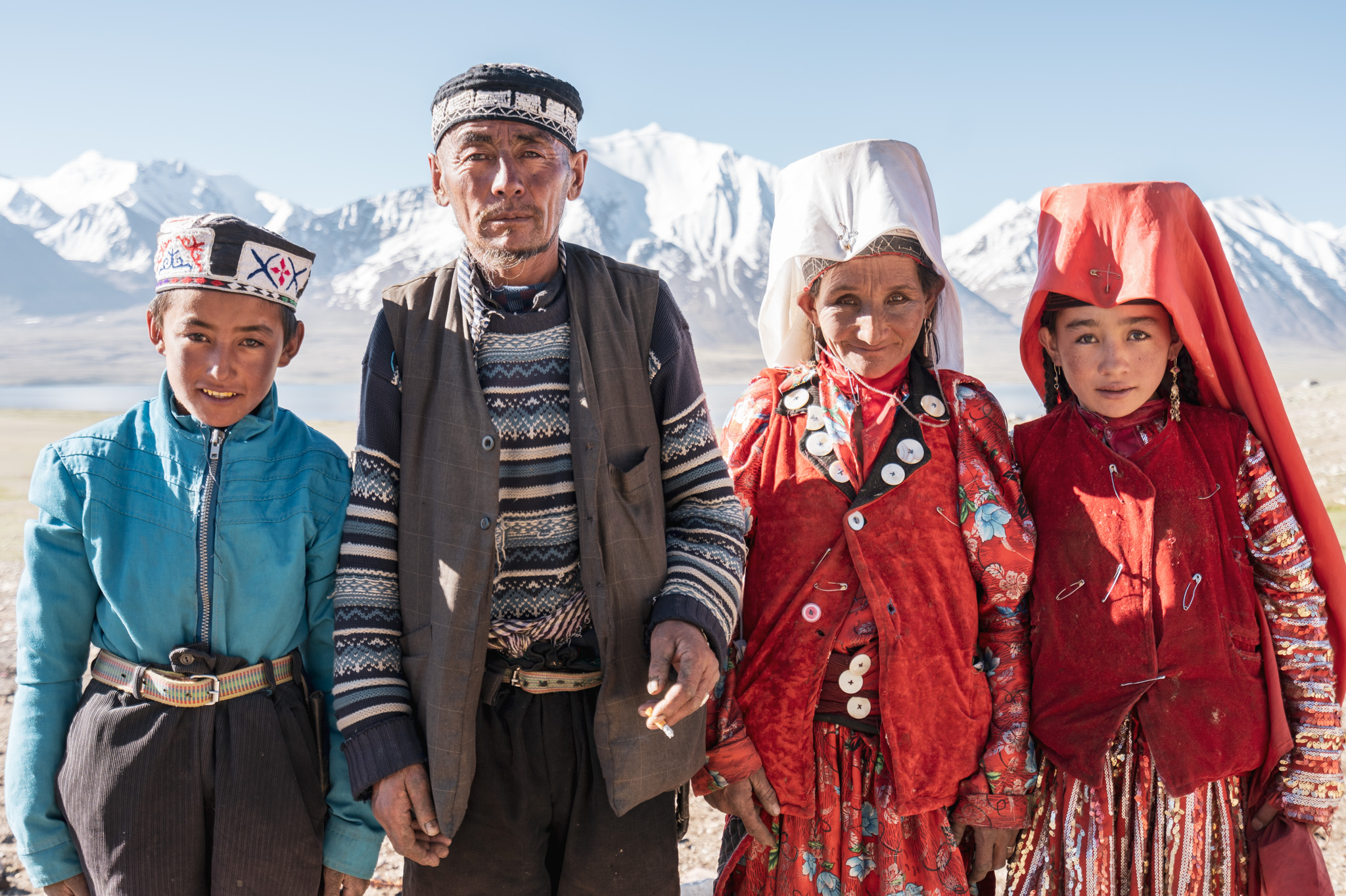
Where to stay in the Wakhan Corridor
Accommodation in Wakhi villages in the Wakhan Corridor comes in the form of basic guesthouses that are usually run by the only English speakers in town.
When trekking to the Little Pamir, you’ll be required to do a bit of camping until you reach the Kyrgyz nomads who you can stay with.
Getting to the Wakhan Corridor
Currently, the only safe way to get to the Wakhan is via Tajikistan. You’ll need to cross the border at Ishkashim, a town 3 hours south of Khorog. Be sure to have a second Tajik visa for your return trip, otherwise, you’ll be stuck.
The road connecting Ishkashim with the rest of Afghanistan goes through Taliban territory and is not safe for travel.
To learn more, check out my in-depth Wakhan Corridor travel and trekking guide .
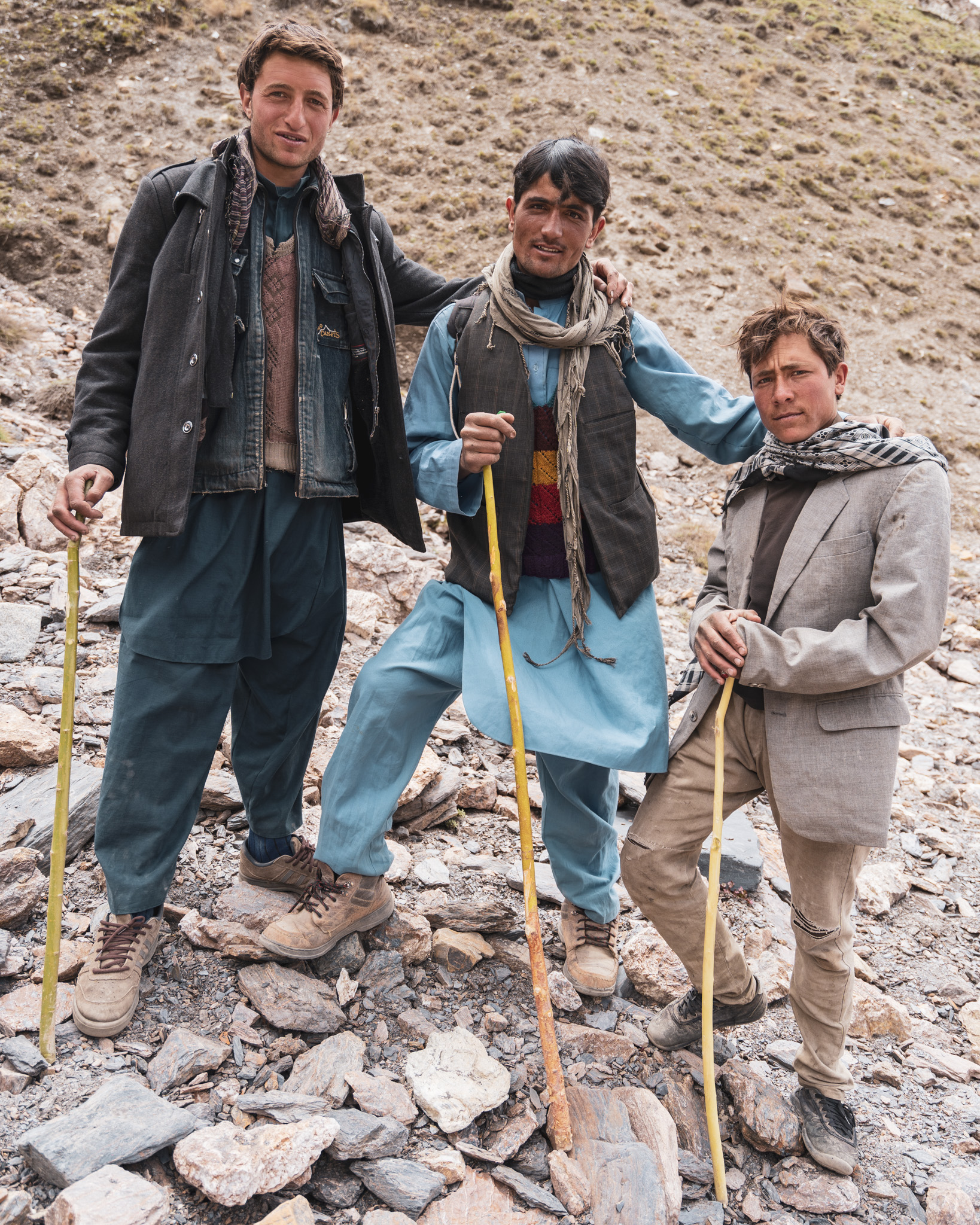
When to visit Afghanistan
The best time to visit Afghanistan depends on which part of the country you want to visit. In general, spring and autumn are the best times of the year to visit, as cooler (but not freezing) temperatures cover most of the country.
Autumn is extra beautiful, as the grasses and trees all over the country turn beautiful shades of orange and yellow.
Summertime in mainland Afghanistan is very hot – low elevation cities such as Mazar-e-Sharif and Herat can reach close to 50 degrees. I don’t advise visiting these places during the summer, as it will make your trip pretty uncomfortable. However, the Wakhan Corridor is a great summer destination due to its high altitude.
Winter covers Afghanistan in a blanket of snow, and temperatures will be very cold. I’ve seen photos from some of my Afghan friends, and the country does look beautiful at this time of year (although you better pack a decent jacket).
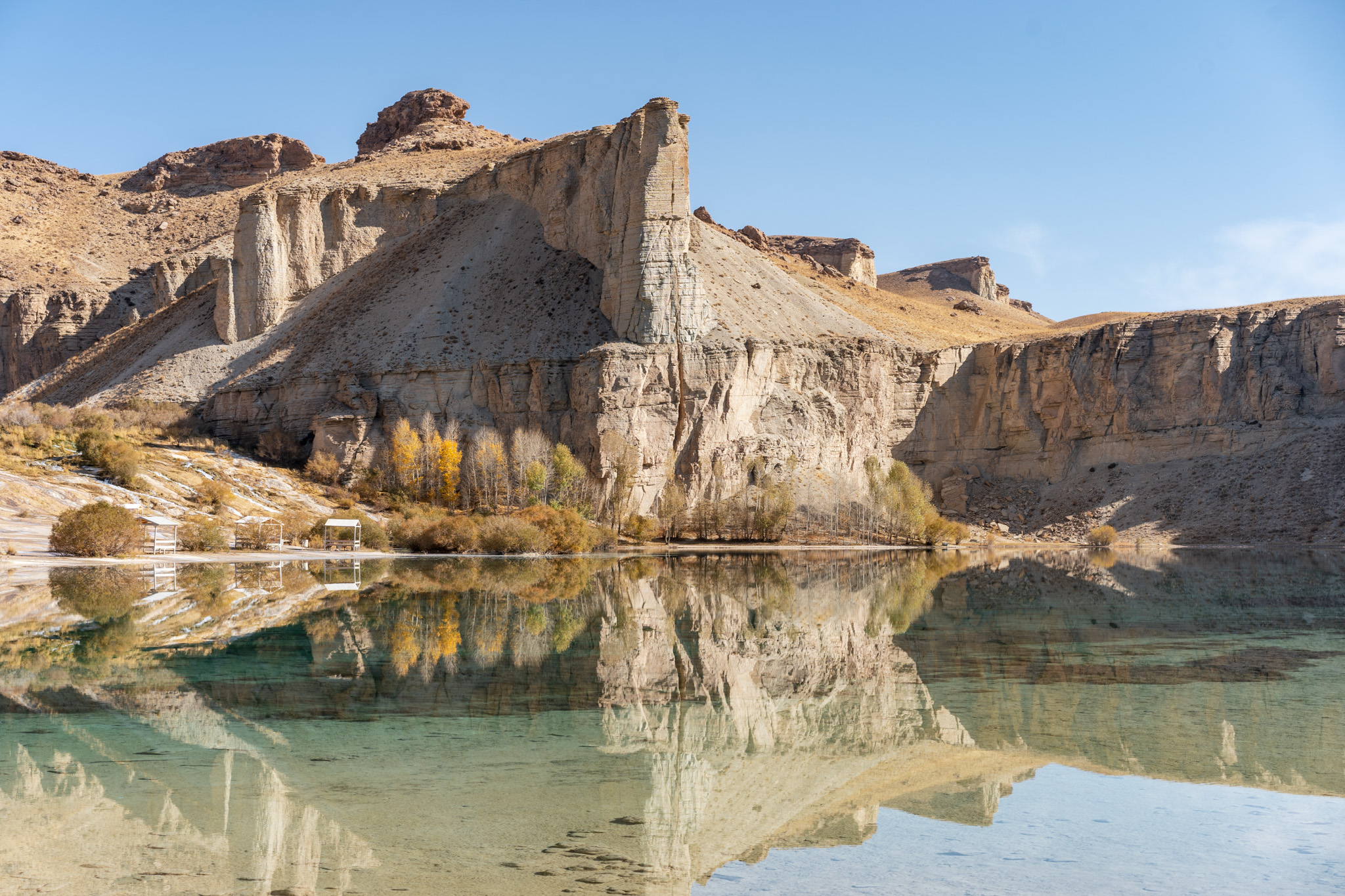
Internet in Afghanistan
Internet access in Afghanistan isn’t great.
In the mainland, you can pretty easily pick up a SIM card from one of the major telecoms with a few gigabytes of data for about 500 Afghani.
Unfortunately, I found that this internet rarely worked in Kabul due to huge amounts of people overloading the towers. Mobile data connection speeds tended to be higher in lesser-populated areas such as Bamiyan. Herat and Mazar-e-Sharif were somewhere in the middle.
There isn’t any way to buy an Afghan SIM card in the Wakhan Corridor, and there are no towers to provide you with a signal anyways. If you purchase a Tajik SIM before leaving Tajikistan, it’s possible to connect to the Tajik cell towers on the opposite side of the Wakhan Valley. See my Wakhan Corridor guide for more info on this.
WiFi is available in some cafes in Kabul, although it’s always extremely slow. In general, don’t count on doing much photo/video uploading while in Afghanistan – sending emails and browsing the web will work alright though.
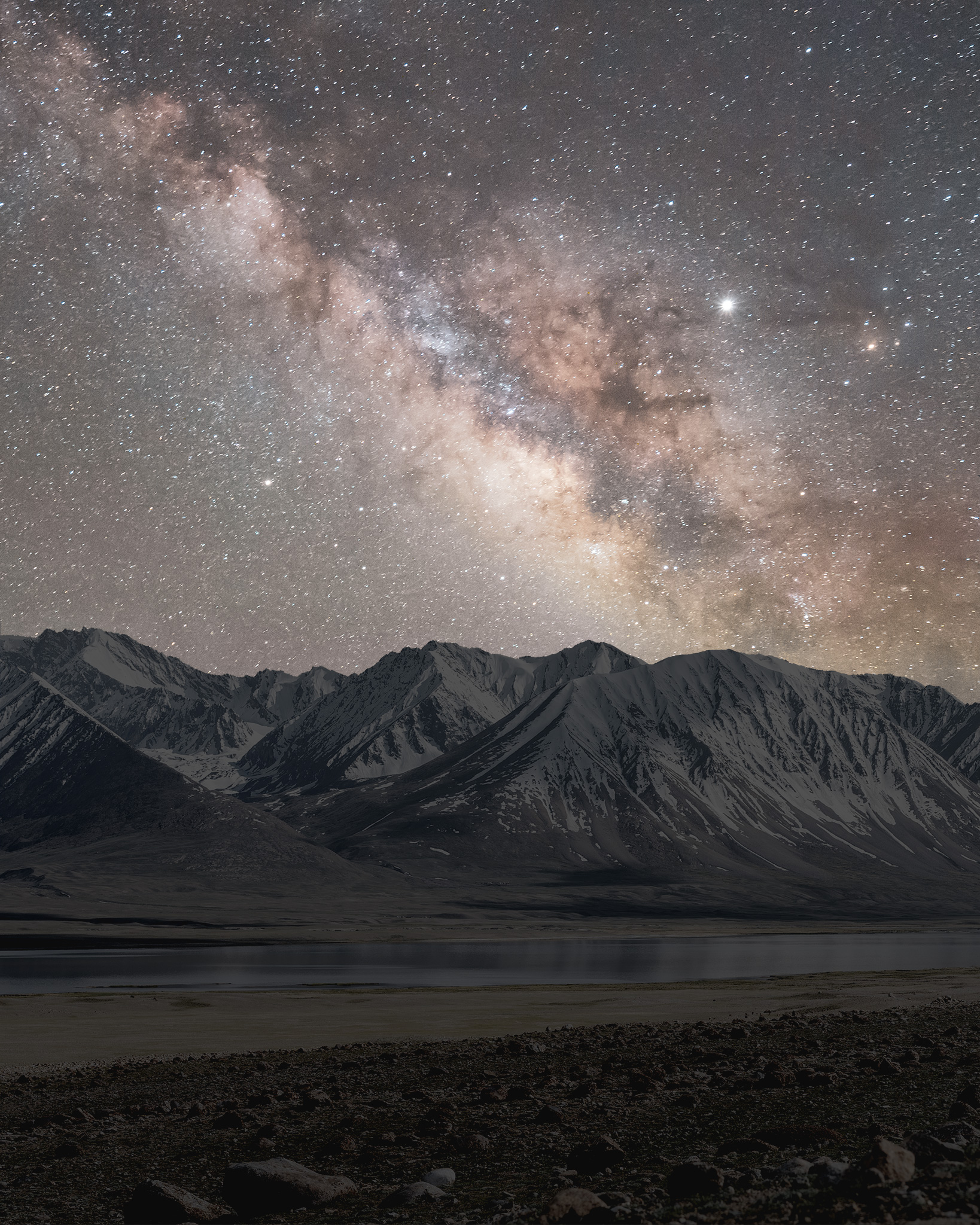
Female Travel in Afghanistan
Female travel in Afghanistan comes with its own unique set of challenges on top of the ones that men experience.
Afghanistan is still an extremely religious and conservative country (although not quite on the level of Saudi Arabia ). Here are a few things you need to know:
- You should always wear a hijab – Most local women wear a full burqa, so it’s at least expected that you wear the more “moderate” hijab.
- If you’re travelling with a guy, you will be ignored – While it may seem disrespectful, Afghan men are actually attempting to show you respect by not interacting with you. This isn’t an issue when the local men are liberal and educated.
- Restaurants are segregated – Every restaurant has a family and singles section, and the singles section is filled entirely with men. You can sit in either section, but be prepared for a lot of stares if you sit in the single section.
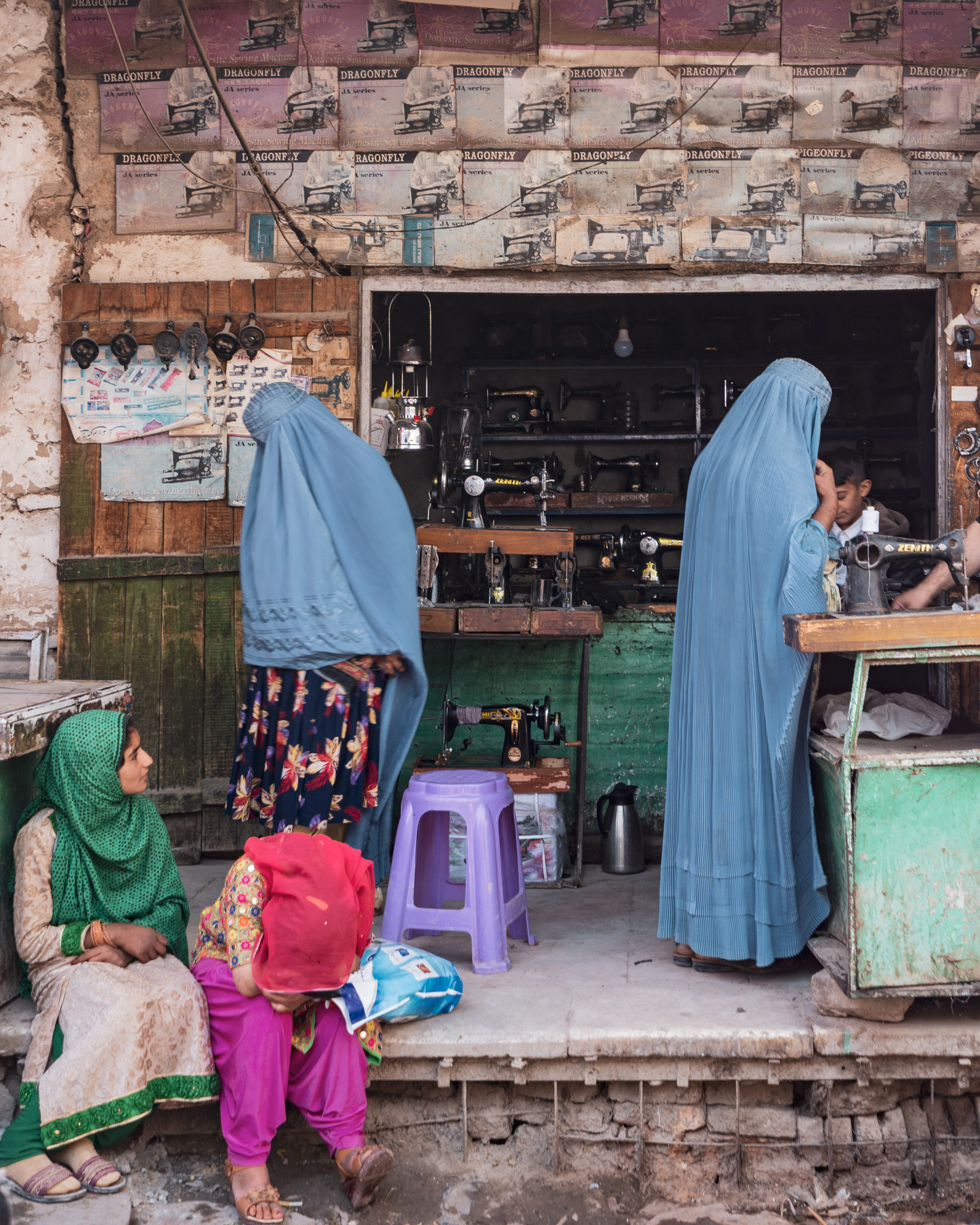
Solo Travel in Afghanistan
It’s totally possible to solo travel in Afghanistan. In fact, all five of my weeks in Afghanistan were solo (although I did go to Bamiyan with a friend from Kabul).
If you’re planning to travel solo, my best advice is to keep in touch with a family member or friend back home and always let them know what your plans for the day are (and check-in at the end of every day).
For certain things (overland travel, visiting Old Balkh), I recommend travelling with a local friend. Unless you speak Dari, it’s not a wise idea to be all alone in parts of rural Afghanistan where there is little government presence.
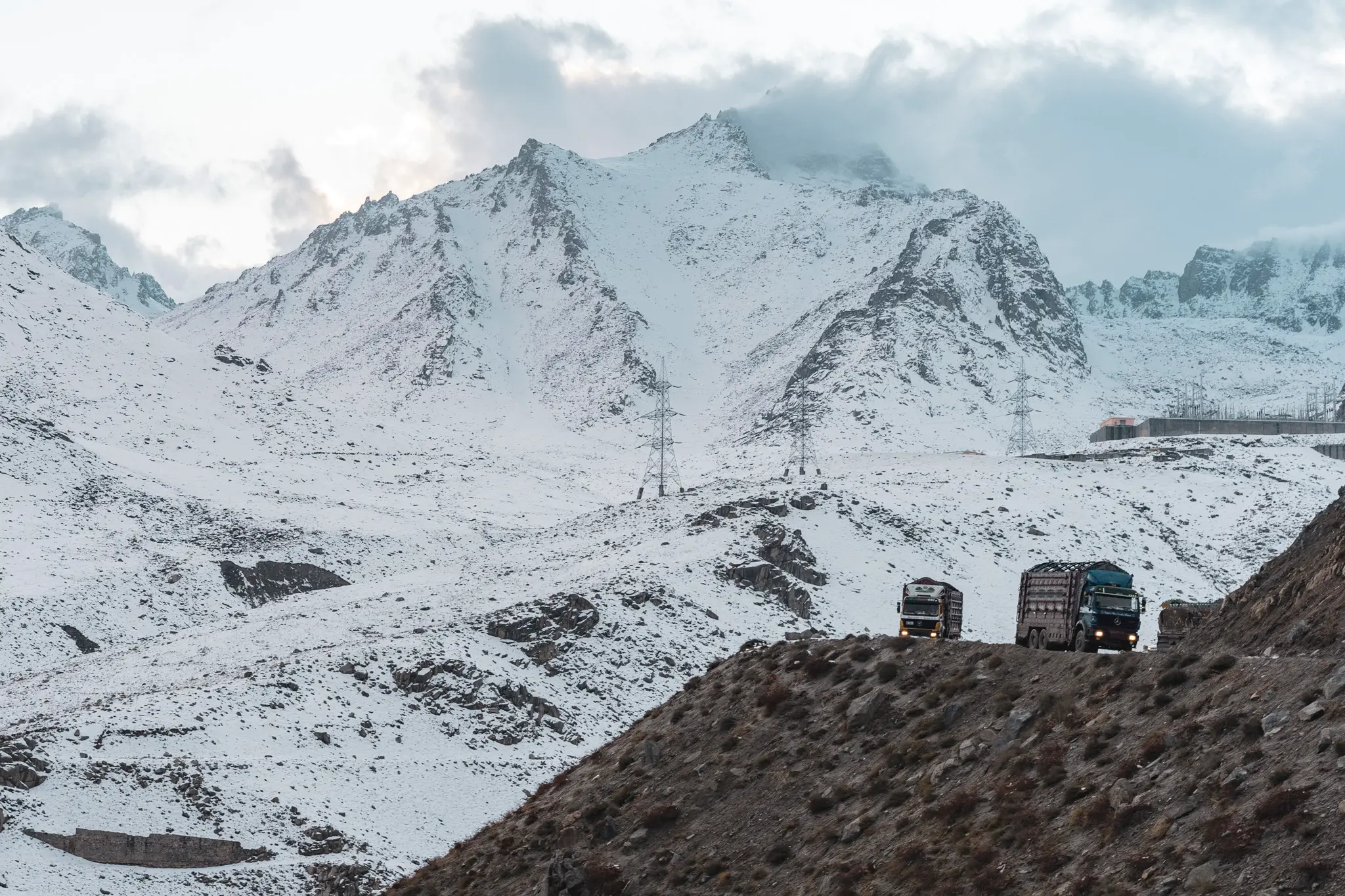
How much does travel in Afghanistan cost?
While Afghanistan is one of the poorest countries in the world , it certainly isn’t one of the cheapest to travel to.
There is very little travel infrastructure in Afghanistan, and almost all of it is geared towards employees of NGOs. Overland travel is unsafe, so expensive flights are often the only option to get around.
Because of this, travel in Afghanistan tends to cost anywhere from $40 to $70 per day .
Here are some sample costs:
- Accommodation – $15-25 per day for a single or double room is the standard rate throughout Afghanistan. If you’re looking for a place with a lot of security, costs can increase to a couple hundred a night.
- Food – $5 – $15 per day. Local street food is very cheap, although there are nicer international restaurants in Kabul where you can spend a bit more.
- Taxis – You’ll need to use taxis to get around Kabul, as well as to/from the airport in other cities. A 15-minute ride in Kabul will usually cost around $4-6. You’ll need to negotiate.
- Flights – If you want to visit more than one city, you will need to take a domestic flight at some point. On most main routes (Kabul -Herat or Kabul – Mazar-e-Sharif), tickets are about $100 each way. Flights are one of the biggest expenses when travelling in Afghanistan.
- Entrance tickets – Usually fairly cheap. The most expensive ones are in Kabul, and these are usually around $3-4 for foreigners.
- Visas – Afghan visas cost anywhere from $80 to $250 depending on your nationality and where you apply. If visiting the Wakhan Corridor, add another $140 for two Tajikistan e-visas.
Remember, these costs are for independent travel in Afghanistan. If you choose to travel with a tour operator, you’ll likely have all these things included and only need to worry about the up-front cost.
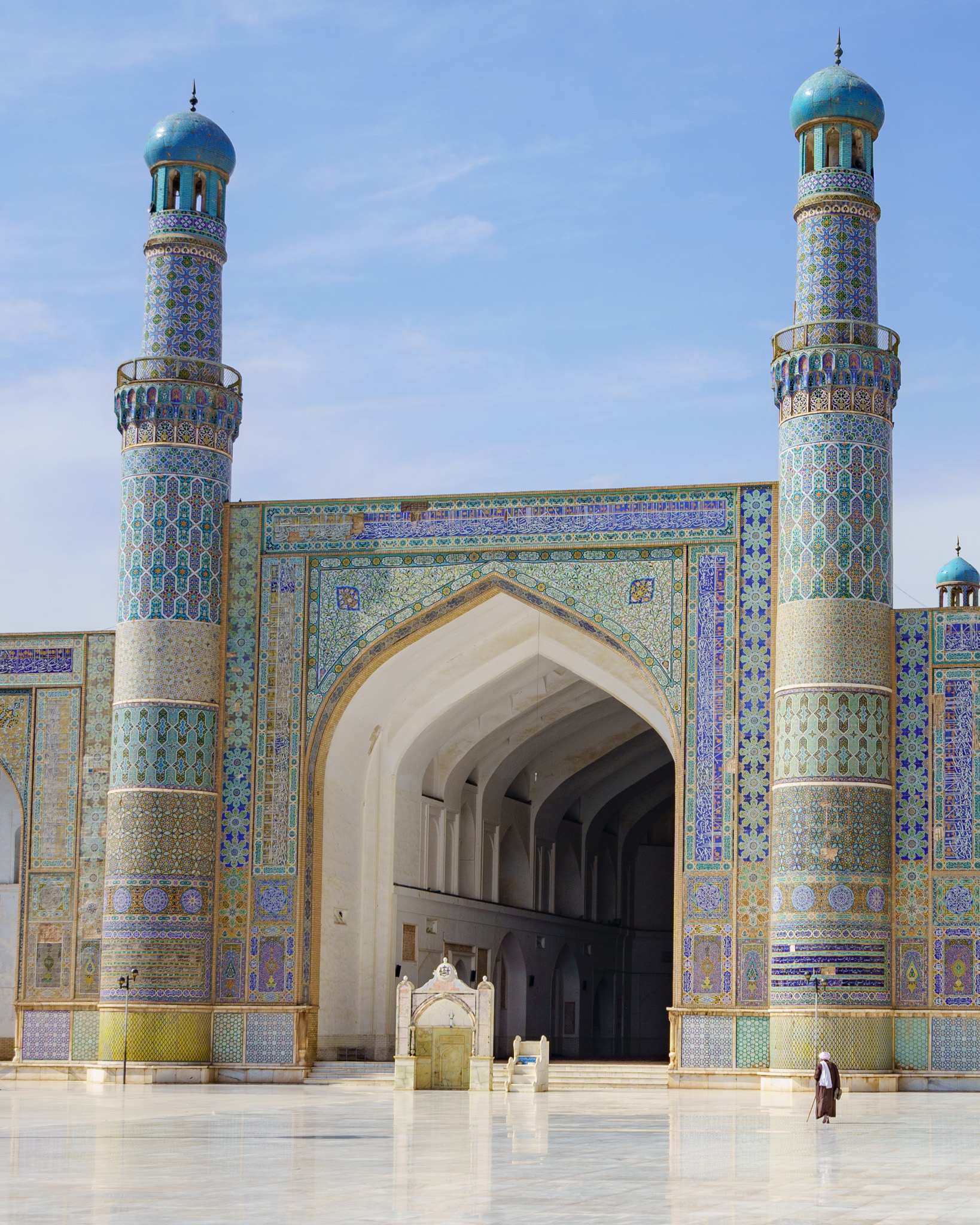
Couchsurfing in Afghanistan
Couchsurfing is a fantastic way to meet locals all over the world, and you should really try to use it when you’re in Afghanistan.
I met some amazing friends on it and they really helped answer any questions I had about their country. Afghanistan has an active Couchsurfing community and it’s one of the best places to find local insider knowledge about the latest situation in the country.
Resources for travel to Afghanistan
Before travelling to Afghanistan, I did a crap ton of research – and I highly suggest that you do too. You need to be prepared and understand what you’re getting yourself in to.
Here are some of my favourite resources for travel in Afghanistan (other than this guide, of course!):
- Lost With Purpose – My friend Alex has a wonderful guide on travel in Afghanistan and it helped me out a lot when I was planning my trip.
- UnchartedBackpacker – Steven has some great photos and info about Afghanistan.
- WikiVoyage – A ton of detailed info about visiting Afghanistan, although some is a bit out of date.
- Wakhan Corridor Guide – My travel guide to the Wakhan Corridor. Check it out for a bunch of information on travel & trekking in the Wakhan.
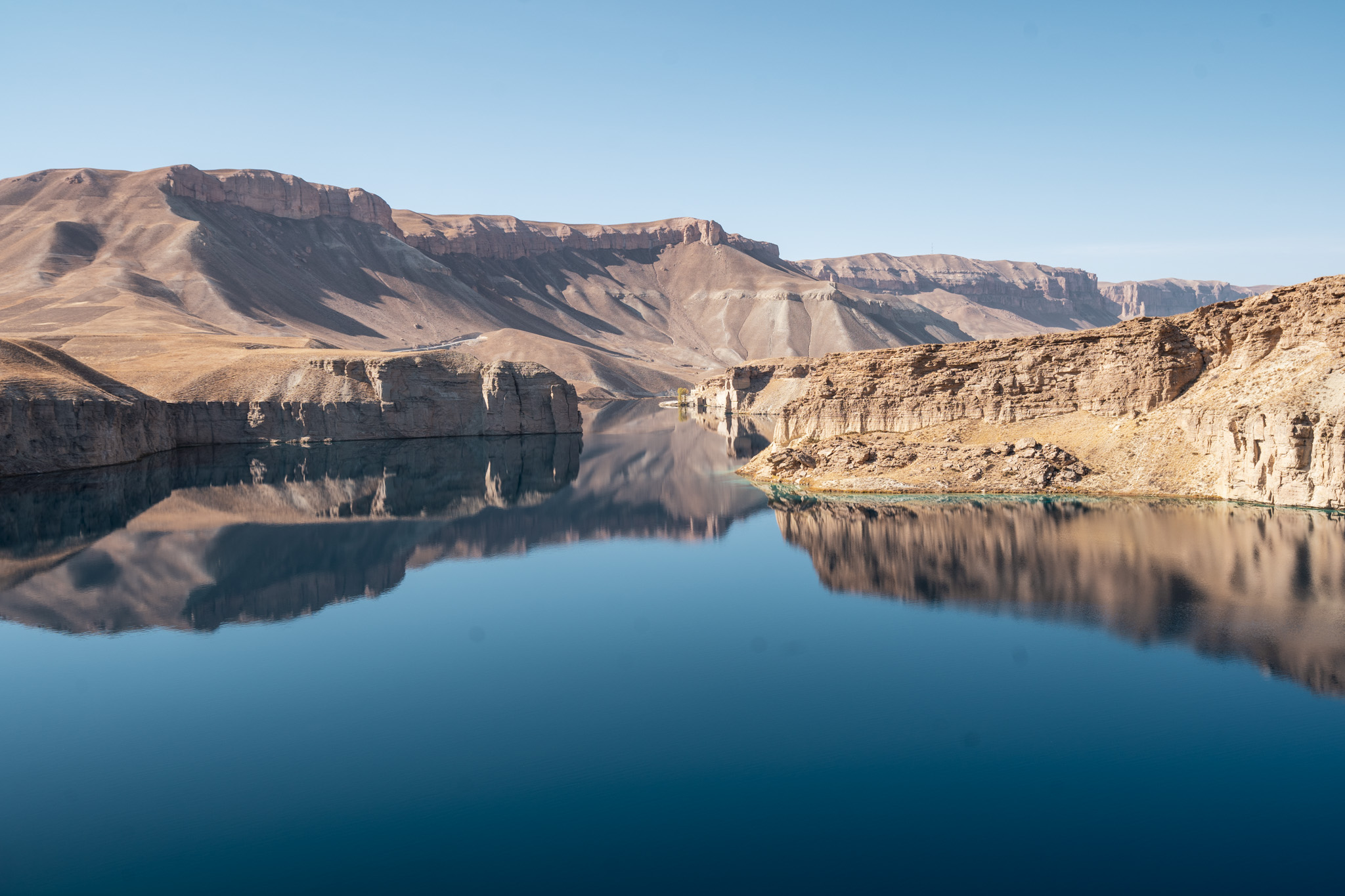
Afghanistan Travel Guide Wrap-up
I hope this post has helped you learn more about what it’s like to travel in Afghanistan! It’s an incredible country, and I only hope that one day the security situation improves enough so that more people get the chance to visit.
Feel free to ask me any questions about travelling in Afghanistan in the comments below.
Safe travels!
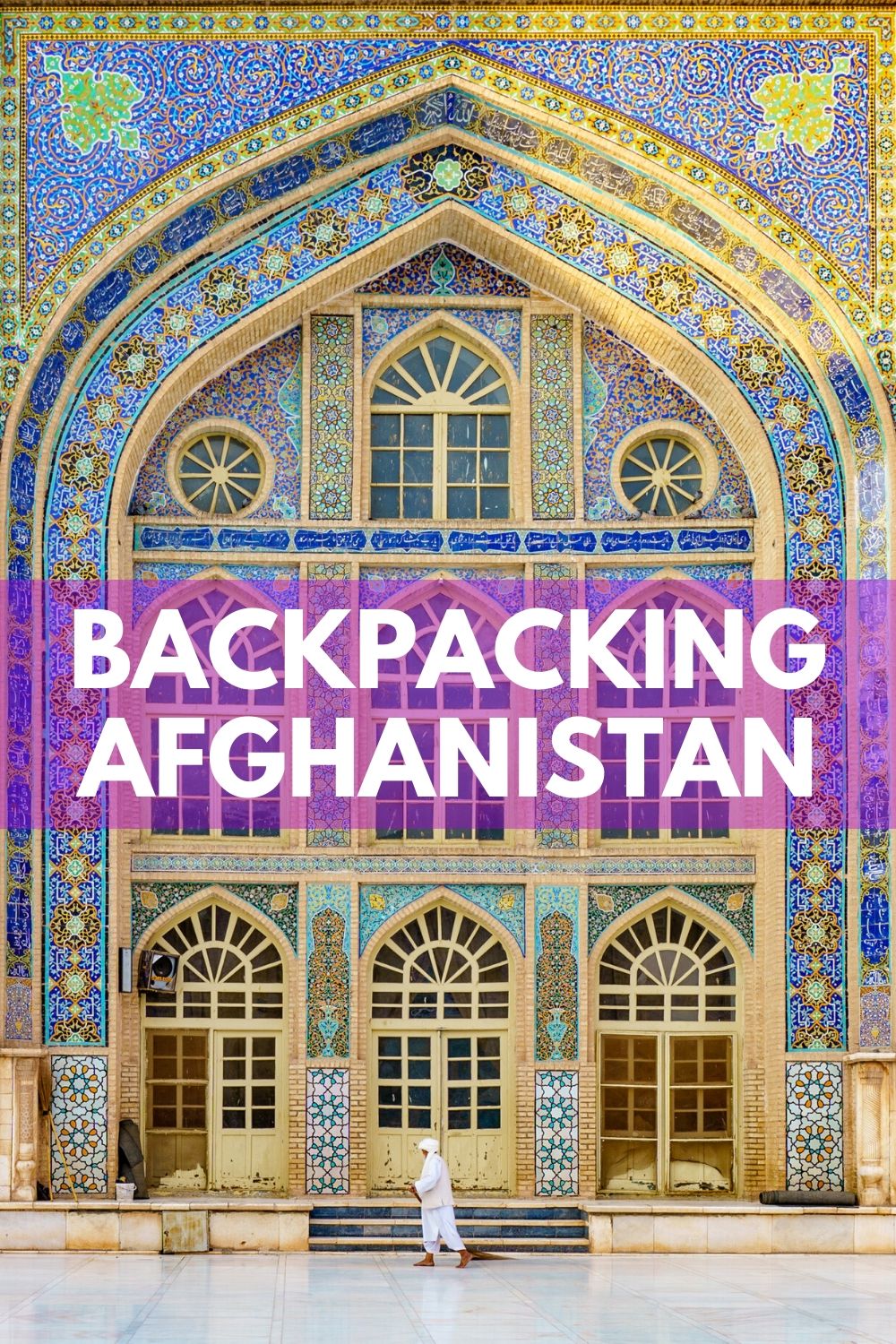
21-year old Canadian dude who loves to visit off-the-beaten-path places, climb tall mountains, and try delicious foods.
Read more about me
Want more like this?
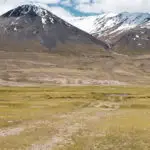
2 thoughts on “ Travel in Afghanistan: The Ultimate Backpacker’s Guide ”
amazing !!!! it’s one of my dreams to travel to Afghanistan (one day!!!!!!) your blog is really amazing and your pictures are gorgeous too, great article 🙂
Thank you! Glad you like the blog 🙂
Leave a Reply Cancel reply
Your email address will not be published. Required fields are marked *
Winter is here! Check out the winter wonderlands at these 5 amazing winter destinations in Montana
- Travel Destinations
The Ultimate Afghanistan Travel Guide
Published: September 12, 2023
Modified: December 27, 2023
by Nert Frechette
- Plan Your Trip
- Travel Essentials & Accessories
- Travel Guide
Introduction
Afghanistan, nestled in the heart of Asia, is a country steeped in rich history, captivating landscapes, and vibrant culture. From the rugged mountains of the Hindu Kush to the ancient cities such as Kabul and Herat, Afghanistan offers a truly unique and authentic travel experience.
Despite its turbulent past, Afghanistan is gradually emerging as a tourist destination, welcoming adventurous travelers who are keen to explore its hidden gems. This ultimate Afghanistan travel guide aims to provide you with an in-depth understanding of this fascinating country, offering valuable insights into its history, geography, visa requirements, top tourist destinations, local cuisine, cultural etiquette, and more.
As you navigate through this guide, you will discover the diverse beauty of Afghanistan – from the towering peaks of the Pamir Mountains to the picturesque lakes and rivers that dot the landscape. You will gain an appreciation for the country’s rich cultural heritage, influenced by both its ancient roots and its interactions with neighboring nations.
Whether you are a history enthusiast eager to explore the remnants of ancient civilizations, an adventure seeker looking to hike through rugged terrains, or a food lover eager to savor the traditional Afghan cuisine, this guide will provide you with all the essential information and tips to make your journey to Afghanistan a memorable one.
Before setting foot in this captivating country, it is important to familiarize yourself with its history, geography, and cultural background. Understanding Afghanistan’s past will help you appreciate the significance of its landmarks, while having knowledge of its culture will enable you to navigate the country with respect and sensitivity.
Now, let us delve into the depths of this remarkable country, as we embark upon the ultimate Afghanistan travel guide.
History of Afghanistan
Afghanistan has a rich and storied history that stretches back thousands of years. Its strategic location at the crossroads of Central Asia has made it a melting pot of cultures and a sought-after prize for conquerors throughout history.
The earliest known civilization in Afghanistan dates back to the Bronze Age, with the Indus Valley Civilization being one of its prominent inhabitants. Over the centuries, Afghanistan’s location along the Silk Road brought it into contact with various empires and kingdoms, including the Persian Achaemenid Empire, the Maurya Empire, and the Greco-Bactrian Kingdom.
In the 7th century, Islam was introduced to the region, forever shaping the culture and religious landscape of Afghanistan. The arrival of the Arab armies brought about the Islamic conquest of the area, leading to the establishment of various Islamic dynasties and the spread of Persian and Turkic influences.
One of the most significant periods in Afghanistan’s history was the reign of the Ghaznavid Empire in the 10th and 11th centuries. Under the leadership of Sultan Mahmud of Ghazni, the empire became a center of Persian and Islamic culture, fostering flourishing intellectual and artistic advancements.
In the following centuries, Afghanistan saw the rise and fall of several dynasties, including the Ghurids, the Timurids, and the Mughals. The country also faced numerous invasions from outside forces, including the Mongols, the Safavids, and the British Empire.
In the 19th century, Afghanistan’s strategic location became a focal point for the “Great Game” between the British and Russian empires, as both vied for control over the region. The country successfully maintained its independence, but not without significant political and territorial changes.
In the early 20th century, Afghanistan embraced a period of modernization under King Amanullah Khan, who sought to modernize the country and establish diplomatic relations with other nations. However, his reforms faced internal opposition and external pressure, ultimately leading to the end of his reign and political instability.
The latter half of the 20th century saw a series of political upheavals in Afghanistan. The country became a battleground during the Soviet-Afghan War in the 1980s, as Afghan resistance fighters, known as the Mujahideen, fought against the Soviet Union’s occupation.
In the aftermath of the Soviet withdrawal, Afghanistan faced a series of civil wars and the rise of the Taliban, an extremist militant group. The Taliban’s oppressive regime and support for international terrorism led to international intervention, most notably the U.S.-led invasion in 2001.
Today, Afghanistan is in the process of rebuilding and recovering from decades of conflict. While security concerns remain, the country possesses a resilient spirit and a cultural heritage that continues to inspire visitors from around the world.
Understanding Afghanistan’s history provides valuable context to appreciate its cultural landmarks, ancient cities, and the resilience of its people. As you explore this fascinating country, remember that each site and city you encounter has its own unique story to tell, forming a tapestry of Afghanistan’s rich and complex past.
Geography and Climate
Afghanistan is a landlocked country in Central Asia, bordered by Iran to the west, Pakistan to the east and south, Turkmenistan, Uzbekistan, and Tajikistan to the north, and China to the northeast. Its diverse geography encompasses towering mountain ranges, arid deserts, fertile valleys, and lush river basins.
The most prominent geographical feature of Afghanistan is the Hindu Kush mountain range, which extends across the country from northeast to southwest. These rugged mountains are part of the larger Himalayan system and are home to some of the highest peaks in the world, including Mount Noshaq, reaching a height of 7,492 meters (24,580 feet).
Afghanistan’s geography is also characterized by vast deserts, such as the Dasht-e Kavir and Dasht-e Margo, which cover large areas in the central and southwestern parts of the country. These arid regions are known for their extreme temperatures and sparse vegetation.
Within the mountainous terrain, there are several fertile valleys and river basins that provide agricultural opportunities. The Amu Darya and Hari Rud rivers are the major waterways, sustaining agricultural activities and serving as crucial resources for the region.
The climate in Afghanistan varies significantly depending on the geographical location and elevation. In the low-lying southern and southwestern regions, including cities like Kandahar and Herat, the climate is hot and arid. Summers are scorching, with temperatures frequently exceeding 40°C (104°F), while winters are relatively mild.
In the central and eastern highlands, including Kabul, the capital city, the climate is characterized by chilly winters and moderate summers. Snow is common during the winter months and temperatures can drop below freezing, especially in the higher elevation areas.
In the northern regions, such as Mazar-i-Sharif and Balkh, the climate is more continental, with distinct seasons. Summers are warm, with temperatures averaging around 30°C (86°F), while winters are cold, with temperatures often falling below freezing and snowfall occurring regularly.
It is essential to consider the diverse geography and climate of Afghanistan when planning your visit. Whether you are exploring the mountainous regions, traversing the deserts, or visiting the fertile valleys, it is important to pack accordingly and be prepared for the specific weather conditions of the area you are visiting.
Overall, Afghanistan’s stunning geography, with its rugged mountains, expansive deserts, and fertile valleys, offers a unique and dynamic landscape that is sure to captivate nature lovers and adventure enthusiasts.
Cultural Background
Afghanistan has a rich and diverse cultural heritage that is influenced by a multitude of ethnic groups, languages, and traditions. The country serves as a crossroads between different civilizations and has been shaped by its location along ancient trade routes.
The majority of the Afghan population is composed of various ethnic groups, each with their distinct cultural practices and languages. The Pashtuns and Tajiks are the two largest ethnic groups in Afghanistan, followed by Hazaras, Uzbeks, Aimaks, and many others.
Despite the differences among ethnic groups, Islam plays a central role in Afghan culture. The majority of Afghans practice Sunni Islam, with a small percentage practicing Shia Islam. Islamic customs, traditions, and values are integrated into daily life, influencing everything from family structures to social interactions.
Community and family are highly valued in Afghan culture. The concept of honor (nanawati) is crucial, and Afghans place great importance on maintaining strong family ties and upholding their honor through hospitality and respect for elders.
Art and music are also integral parts of Afghan culture. Traditional Afghan music often features instruments such as the rubab, tabla, and harmonium. Poetry and storytelling are highly regarded forms of artistic expression, with the works of renowned poets like Rumi and Khushal Khan Khattak having a significant impact on Afghan literature.
Afghanistan is famous for its traditional crafts, including intricate carpet weaving, pottery, calligraphy, and jewelry-making. These crafts showcase the skill and creativity of Afghan artisans and are often passed down through generations.
One of the most well-known aspects of Afghan culture is its cuisine. Traditional Afghan food is flavorful and hearty, with dishes like kebabs, pilaf, and various types of bread being staples. Afghan cuisine is influenced by Persian, Indian, and Central Asian flavors, resulting in a unique blend of spices and ingredients.
It is important to note that Afghan society remains conservative, and it is essential to respect local customs and norms. Dress modestly, especially when visiting religious sites or rural areas. Women should cover their heads with a scarf in public, and it is polite to ask for permission before taking photographs of local people.
When interacting with Afghans, it is customary to greet others with a friendly “salaam alaykum” (peace be upon you) and respond with “wa alaykum salaam” (and upon you be peace). Respectful behavior, such as using hand gestures instead of pointing, being mindful of personal space, and showing gratitude for hospitality, is highly appreciated.
As you immerse yourself in Afghan culture, you will witness the vibrancy and warmth of its people. By embracing the customs and traditions of Afghanistan, you will forge meaningful connections and gain a deeper understanding of this remarkable country.
Visa Requirements
Before traveling to Afghanistan, it is essential to familiarize yourself with the visa requirements to ensure a smooth entry into the country. Afghanistan requires most foreign visitors to obtain a valid visa before arrival.
Visa applications for Afghanistan can be made at Afghan embassies or consulates in your home country. It is recommended to apply well in advance of your planned travel date, as processing times may vary. You will need to submit a completed visa application form, a valid passport with at least 6 months of validity remaining, and supporting documents such as a letter of invitation or a hotel reservation.
It is important to note that the process and requirements for obtaining an Afghan visa can be subject to change, so it is advisable to contact the nearest Afghan embassy or consulate for the most up-to-date and accurate information.
It is worth mentioning that due to security concerns, some areas in Afghanistan may have additional restrictions and require special permits for travel. These permits can be obtained through the Afghan Ministry of Interior or the appropriate authorities in the specific region you plan to visit.
When you arrive in Afghanistan, you will be required to present your valid passport with the visa stamp to the immigration authorities. It is crucial to carry a printed copy of your visa approval letter or invitation letter in case it is requested.
It is highly recommended to check the travel advice and safety guidelines issued by your government or embassy before planning your trip to Afghanistan. Due to ongoing security concerns, it is important to exercise caution and avoid travel to certain areas.
Travelers should also consider obtaining comprehensive travel insurance that covers medical expenses, trip cancellation, and emergency evacuation, as healthcare facilities in Afghanistan may be limited in some areas.
Lastly, it is advised to register with your embassy or consulate upon arrival in Afghanistan. This will ensure that you receive relevant safety and security updates during your stay in the country.
By planning ahead and familiarizing yourself with the visa requirements and travel regulations, you can enjoy a hassle-free journey to Afghanistan and fully immerse yourself in the unique experiences the country has to offer.
Safety and Security
When planning a trip to Afghanistan, it is crucial to prioritize safety and be well-informed about the security situation in the country. While Afghanistan has made progress in terms of security and stability in some areas, it is important to be aware of the ongoing security concerns.
Due to the complex security landscape, it is strongly advised to check the latest travel advisories and security warnings issued by your government or embassy before traveling to Afghanistan. These advisories provide up-to-date information regarding areas to avoid, potential risks, and recommended safety precautions.
It is essential to maintain a high level of personal security awareness at all times. Avoid traveling alone, especially in remote or isolated areas, and consider joining organized tours or hiring reputable local guides for added safety. Stay informed about local events, demonstrations, and gatherings, and avoid participating in or being in close proximity to any potential unrest or conflict.
Be cautious of your surroundings, safeguard your personal belongings, and keep important documents, such as your passport and visa, in a secure place. Keep emergency contact numbers and the contact information of your embassy or consulate readily available.
Ensure that you have adequate travel insurance that covers medical emergencies, trip cancellations, and evacuation. The healthcare facilities in Afghanistan may be limited in some areas, so it is advisable to carry any necessary medications and seek medical advice before your trip.
It is also important to respect the local customs and traditions and dress modestly, especially when visiting religious sites or rural areas. Women should cover their heads with a scarf in public, and it is advisable to seek permission before taking photographs of local people.
Avoid discussing sensitive topics, such as politics or religion, and be mindful of cultural sensitivities. Show respect for the local culture and customs, and be aware that certain activities that are acceptable in your home country may be considered disrespectful or offensive in Afghanistan.
Finally, it is recommended to register with your embassy or consulate upon arrival in Afghanistan. This will ensure that you receive relevant safety and security updates during your stay in the country.
While it is important to be cautious and aware of the security situation in Afghanistan, thousands of tourists visit the country each year and have memorable experiences. By staying informed, following the necessary safety precautions, and respecting local customs, you can enjoy a safe and enriching visit to Afghanistan.
Transportation in Afghanistan
Getting around Afghanistan can be an adventure in itself, as the country offers various transportation options to suit different travel preferences and budgets.
One of the most common modes of transportation in Afghanistan is the shared taxi, known as a “Toyota” or “Saracha”. These are typically older-model sedans or SUVs that operate on set routes between cities and towns. Shared taxis can be a cost-effective option for shorter journeys, but it is important to negotiate the fare in advance.
For longer distances, there are also private taxis available. These taxis offer a more comfortable and convenient option, and you can negotiate the fare directly with the driver. It is advisable to ask for recommendations from reliable sources or your hotel for reputable taxi services.
Public buses are another popular means of transportation within and between major cities in Afghanistan. These buses can be crowded and less comfortable compared to private taxis, but they are often more affordable. Keep in mind that schedules may not always be strictly adhered to, so it is recommended to check the departure times in advance.
If you prefer a more flexible and independent mode of transportation, renting a car or hiring a driver is an option. Car rentals are available in major cities like Kabul, and hiring a driver can provide peace of mind, especially if you are unfamiliar with the local roads and traffic conditions.
In urban areas such as Kabul, there are also rickshaws, known as “qaraqa” or “tuk-tuks”, which are three-wheeled vehicles used for shorter trips within the city. These vehicles are an affordable and convenient way to navigate congested city streets.
It is important to note that road conditions in Afghanistan can vary greatly. While major highways are generally well-paved, rural and mountainous roads may be challenging, with potholes and rough surfaces. It is advisable to exercise caution, drive defensively, and adhere to local traffic rules at all times.
Another consideration when traveling in Afghanistan is the availability of domestic flights. There are several domestic airlines that operate flights between major cities, providing a quicker and more comfortable option for long-distance travel. However, it is important to check for updated flight schedules and availability.
When using any mode of transportation in Afghanistan, it is advisable to plan your journeys during daylight hours whenever possible. The security situation can vary, and traveling at night may pose additional risks.
As always, it is essential to stay informed about the latest security updates and travel advisories. This will help you make informed decisions regarding transportation options and ensure a safe and enjoyable journey in Afghanistan.
Accommodation Options
When visiting Afghanistan, you will find a range of accommodation options to suit various budgets and preferences. From luxury hotels to guesthouses and homestays, there are choices available in major cities and tourist destinations.
In urban areas like Kabul, you will find a selection of international chain hotels that offer comfortable rooms, modern amenities, and professional services. These hotels provide a high level of security and convenience for travelers. For those seeking a more luxurious experience, there are also boutique hotels and resorts that offer unique settings and personalized services.
If you prefer a more authentic and local experience, guesthouses and budget hotels are available in many areas. These accommodations provide a comfortable stay at a more affordable price and can be found in major cities and popular tourist destinations. They often offer basic amenities such as Wi-Fi, hot water, and clean rooms.
In addition to traditional hotels and guesthouses, you may also have the opportunity to stay in a local homestay or guesthouse run by Afghan families. This provides a chance to experience the warmth and hospitality of the local culture firsthand. Homestays offer a unique insight into Afghan traditions and are a great way to connect with the local community.
It is important to note that the level of accommodation and available facilities may vary in different areas of Afghanistan. While major cities like Kabul, Herat, and Mazar-i-Sharif offer a wider range of options, smaller towns and rural areas may have limited choices.
Before finalizing your accommodation, consider factors such as location, safety, and proximity to attractions or transportation hubs. It is advisable to read reviews and gather recommendations from trusted sources to ensure a comfortable and secure stay.
Regardless of the type of accommodation you choose, it is important to exercise caution and maintain general safety practices. Lock your doors and windows, store your valuables securely, and follow any additional security measures advised by the staff.
Remember that hospitality is a cornerstone of Afghan culture, and the staff at your chosen accommodation will likely go above and beyond to ensure your comfort and satisfaction. Take the time to engage with them, ask for recommendations, and immerse yourself in the local hospitality.
By selecting the right accommodation option for your needs and preferences, you can enjoy a restful and enjoyable stay in Afghanistan, making your visit all the more memorable.
Top Tourist Destinations
Afghanistan is a country with a plethora of captivating destinations, each offering a unique glimpse into its rich history, stunning landscapes, and vibrant culture. Here are some of the top tourist destinations to consider when planning your visit to Afghanistan:
- Kabul: The capital city of Afghanistan, Kabul is a bustling metropolis where ancient traditions intertwine with modern developments. Visit the National Museum of Afghanistan to discover its collection of ancient artifacts, explore the historic Bala Hissar fortress, or stroll through the vibrant streets of the old city.
- Bamiyan: Located in the central highlands, Bamiyan is famed for its iconic Buddha statues that were sadly destroyed by the Taliban. Although the statues are no longer standing, the site remains a symbol of Afghanistan’s rich Buddhist heritage. The Bamiyan Valley is also a UNESCO World Heritage Site, offering breathtaking natural beauty.
- Herat: Known as the cultural capital of Afghanistan, Herat boasts stunning Islamic architecture, including the famous Herat Citadel, the historic Herat Grand Mosque, and the enchanting 15th-century Musalla Complex. Don’t miss the Friday Mosque, adorned with intricate tile work.
- Mazar-i-Sharif: Home to the magnificent Blue Mosque, an architectural marvel adorned with stunning blue-tiled mosaics, Mazar-i-Sharif is a vibrant city with a rich spiritual and historical heritage. Visit the Shrine of Hazrat Ali, a revered pilgrimage site for Muslims.
- Band-e-Amir National Park: Located in the stunning Bamyan Province, Band-e-Amir National Park is a series of crystalline lakes surrounded by towering cliffs. Explore the lakes and witness their mesmerizing blue-green hues against the dramatic backdrop of the Hindu Kush mountains.
- Panjshir Valley: Nestled in the heart of the Hindu Kush mountains, the Panjshir Valley is known for its natural beauty and legendary history. The valley offers opportunities for hiking, trekking, and exploring picturesque villages.
- Khyber Pass: This historical mountain pass spans the border between Afghanistan and Pakistan and has served as a major trade route for centuries. Explore the rugged landscapes and delve into the region’s rich history.
- Chakhcharan: Located in the central region of Afghanistan, Chakhcharan is a city surrounded by striking mountains. Discover its ancient citadel and explore the nearby villages, where you can experience the traditional rural Afghan way of life.
These are just a few highlights of the many remarkable destinations that Afghanistan has to offer. It is important to check the latest travel advisories and seek up-to-date information before traveling to ensure a safe and enjoyable visit to these enchanting sites.
As you explore these top tourist destinations, you will witness the splendor of Afghanistan’s cultural heritage, immerse yourself in its majestic landscapes, and be embraced by the warm hospitality of its people. Prepare to be captivated by the wonders that await you in this extraordinary country.
Local Cuisine and Dining
Afghan cuisine is a delightful melding of flavors and culinary traditions from various regions, influenced by Persian, Indian, and Central Asian cuisines. Known for its aromatic spices, tender meats, and hearty dishes, Afghan cuisine offers a rich and satisfying dining experience.
One staple of Afghan cuisine is rice, and one of the most popular rice dishes is Kabuli Pulao. This fragrant dish is made with long-grain rice, raisins, carrots, and tender pieces of meat, usually lamb or chicken. It is often garnished with almonds and served with yogurt or a side of salad.
Mantu is another beloved Afghan dish, consisting of steamed dumplings filled with ground meat, onions, and spices. These dumplings are typically topped with a savory tomato-based sauce and drizzled with garlic yogurt.
Kebabs are a ubiquitous part of Afghan cuisine and are made from succulent pieces of grilled meat, such as lamb or chicken, seasoned with aromatic spices. These flavorful skewers are often served with bread, rice, and a side of chutney or yogurt.
Afghan bread, known as naan, is a staple in every Afghan meal. It is a flatbread that comes in various shapes and sizes and is typically baked in a tandoor oven. The bread is soft and pillowy, perfect for scooping up dips, stews, or kebabs.
Another traditional Afghan dish is Ashak, which consists of delicate dumplings filled with leeks or chives, topped with a tangy tomato sauce and drizzled with yogurt. It is a popular vegetarian option and is bursting with flavors.
Afghanistan is also known for its refreshing drinks. Try a glass of Doogh, a traditional yogurt-based drink mixed with water and flavored with mint or dried herbs. For coffee lovers, Afghan qahwa, a strong cardamom-infused coffee, is a must-try.
When dining in Afghanistan, you will often find shared meals, with everyone gathering around a communal platter. This communal style of dining fosters a sense of togetherness and allows for lively conversations and connections.
It is important to note that Afghan dining customs emphasize hospitality. Guests are greeted warmly and generously offered tea, fruits, and nuts as a sign of welcome. It is customary to eat with your right hand, using bread to scoop up food, as utensils are not commonly used.
Afghanistan has a growing number of restaurants and eating establishments, especially in major cities like Kabul and Herat. You can find a range of dining options, from traditional Afghan restaurants to international cuisines. It is advisable to choose well-established and reputable establishments for a safer dining experience.
Immersing yourself in Afghan cuisine allows you to savor the diverse flavors and experience the warm hospitality that is deeply rooted in Afghan culture. Be open to trying new dishes, engage with the locals, and embrace the culinary delights that Afghanistan has to offer.
Shopping in Afghanistan
Shopping in Afghanistan offers a unique and vibrant experience, allowing you to discover traditional crafts, exquisite textiles, and precious gems. From bustling bazaars to specialty shops, you’ll find a variety of items that showcase the country’s rich cultural heritage.
One of the most popular shopping destinations in Afghanistan is the bustling Chicken Street (Istiqlal Avenue) in Kabul. Here, you’ll find a plethora of shops and stalls offering a wide range of traditional Afghan crafts and souvenirs. From colorful carpets and intricate textiles to hand-carved woodwork and copperware, Chicken Street is a treasure trove for unique finds.
The Kabul New City Center and City Center Mall in Kabul are modern shopping complexes that offer a mix of local and international brands. These shopping centers provide a convenient option for those seeking a more modern shopping experience.
For those interested in traditional Afghan clothing, the Kandahar Cloth Market in Kandahar City is a must-visit. You will find a variety of beautifully embroidered and embellished garments, including Pashtun dresses and turbans, as well as traditional Afghan jewelry.
Afghanistan is renowned for its exquisite gemstones, particularly lapis lazuli. The gemstone market in Kabul is a great place to explore and purchase lapis lazuli jewelry, which is often intricately incorporated into necklaces, bracelets, and pendants.
When shopping in Afghanistan, it is customary to engage in friendly bargaining, as it is expected in the local culture. Negotiating the price is part of the shopping experience, so approach it with patience and a sense of humor.
It is important to note that certain items, such as antiques and archaeological artifacts, require proper documentation and permits to be legally exported from Afghanistan. Familiarize yourself with the regulations and guidelines to ensure a legal and ethical shopping experience.
When shopping for souvenirs or gifts, it is also worth considering supporting local artisans and small businesses. By purchasing handicrafts directly from the artisans or from fair trade shops, you can contribute to sustaining traditional crafts and empowering local communities.
As with any travel destination, it is advisable to exercise caution and be mindful of your surroundings while shopping in Afghanistan. Keep an eye on your belongings, be aware of your environment, and avoid crowded places.
Shopping in Afghanistan allows you to immerse yourself in the rich craftsmanship and cultural heritage of the country. With a keen eye and a sense of adventure, you’re sure to discover unique treasures and bring a piece of Afghanistan’s vibrant culture back home with you.
Cultural Etiquette
When visiting Afghanistan, it is important to be aware of and respectful of the local cultural etiquette. Understanding and adhering to these customs will help you navigate social interactions with grace and ensure a positive experience during your time in the country.
Respect for elders is highly valued in Afghan culture. When addressing someone older or of higher rank, use formal titles such as “Agha” for men and “Khanum” for women, followed by their last name. It is customary to greet elders with a handshake or a slight bow.
Modesty is an essential aspect of Afghan culture. Dress modestly, especially when visiting religious sites or more traditional areas. Women should have their shoulders and knees covered and may consider wearing a headscarf. Men should avoid wearing shorts and sleeveless shirts in public.
Afghans are known for their warm hospitality and generosity. If invited to someone’s home, removing your shoes upon entering is customary. It is customary to bring a small gift, such as sweets or fruits, as a gesture of appreciation for the host’s hospitality.
When dining with Afghans, it is important to show respect for the food and customs. Use your right hand to eat, as the left hand is considered unclean. Accept offers of food and drinks, as refusing may be seen as a rejection of the host’s hospitality.
In Afghan society, modesty extends to public displays of affection. It is preferable to refrain from overt displays of affection in public, as such behavior is generally considered inappropriate. It is essential to be mindful of cultural norms and behave respectfully in public.
When engaging in conversations, maintain a polite and respectful tone. Avoid discussing sensitive topics, such as politics or religion, unless the other person initiates the discussion. It is important to listen actively and show genuine interest in the conversation.
Show respect for Afghan traditions and customs by being aware of and following local customs. For example, it is customary to remove your shoes or cover your head when entering places of worship.
Photography is a sensitive issue in Afghanistan. Always ask for permission before taking photographs of individuals, religious sites, or sensitive locations. Respect the privacy and sacredness of the places you are visiting.
Finally, be patient and understand that time operates at a different pace in Afghanistan. Expectations of punctuality may be different, and schedules may not always be strictly followed. Embrace the relaxed pace and use this as an opportunity to immerse yourself in the local culture.
By being respectful, observant, and understanding of Afghan cultural etiquette, you will create positive connections with the locals and have a more enriching and memorable experience in Afghanistan.
Language and Communication
The official languages of Afghanistan are Dari (a dialect of Persian) and Pashto. While most Afghans have some level of proficiency in one or both of these languages, there are also numerous regional languages spoken throughout the country.
English is not widely spoken in Afghanistan, especially outside of major cities. However, in tourist areas and among some professionals, you may encounter individuals who have a basic understanding of English. It is still highly recommended to learn a few basic phrases in Dari or Pashto to facilitate communication and show respect for the local culture.
When greeting someone, the expression “Salam Alaikum” (peace be upon you) is commonly used. A polite response is “Alaikum Salam” (and upon you be peace). These greetings are used both in casual encounters and more formal situations.
Using simple greetings and basic courtesy phrases in the local language can go a long way in engaging with the local population and showing your interest in their culture. Phrases such as “Tashakor” (thank you) and “Khuda Hafez” (goodbye) are universally understood and appreciated.
If you find yourself in need of assistance or directions, you can ask “Lotfan, komak konid” (Excuse me, please help) or “Lotfan, rahnamai konid” (Excuse me, please guide me). Locals are generally friendly and willing to assist visitors, even if there may be a language barrier.
When communicating with Afghans, it is important to be patient and respectful. Avoid speaking loudly or using aggressive body language, as these can be perceived as rude or confrontational. Take the time to listen actively, as it demonstrates your interest and respect for the person you are conversing with.
Using hand gestures is a common way to enhance communication when words fail. However, it is advisable to use common gestures and be mindful that certain gestures may have different meanings in Afghan culture. To avoid any misunderstanding, it is best to rely on simple and universally recognized gestures when necessary.
Keeping a small notebook or a translation app on your phone can be helpful for overcoming language barriers. You can write down key phrases or use the app to translate words or sentences. This can facilitate communication and make interactions smoother.
Afghans appreciate and respect individuals who make an effort to learn their language and understand their culture. By attempting to communicate in Dari or Pashto, you will likely receive a warm response and build a deeper connection with the local people during your time in Afghanistan.
Overall, while language barriers may exist in some situations, approaching communication with patience, openness, and a willingness to learn will help you navigate through interactions and foster meaningful connections with the people you encounter in Afghanistan.
Useful Phrases
Learning a few useful phrases in Dari or Pashto can greatly enhance your experience when communicating with locals in Afghanistan. While English is not widely spoken, making the effort to learn a few key phrases will show respect for the local culture and help you navigate daily interactions more smoothly. Here are some essential phrases to get you started:
- Salam Alaikum – Hello (literally, “Peace be upon you”)
- Alaikum Salam – Hello in response to “Salam Alaikum” (literally, “And upon you be peace”)
- Tashakor – Thank you
- Khuda Hafez – Goodbye
- Lotfan – Please
- Na – Yes
- Na Manam – No
- Bale – Okay
- Man Dari / Pashto Balad nemi-konam – I don’t speak Dari / Pashto
- Mumkin ast, lotfan? – Is it possible, please?
- Behtar ast – It’s better
- Khodahafez – Goodbye (informal)
- Beborid be manzil – Take me to [destination]
- Az kojaa ast bathroom? – Where is the bathroom?
When greeting someone, it is customary to use “Salam Alaikum” as a general greeting. If you are comfortable, you can engage in basic conversations using these phrases. However, keep in mind that the level of English proficiency may vary, so simple and clear communication is key.
Remember to approach conversations with patience and respect, and be prepared to use gestures and basic English when needed. Locals appreciate the effort to learn their language and will likely be helpful and understanding.
Carrying a small phrasebook or a translation app on your phone can be handy for quick reference during your travels in Afghanistan. It is also worth noting that there may be regional variations in dialects, so certain phrases might have slight differences depending on the area you are in.
By learning a few key phrases, you will be able to navigate basic interactions more confidently and effectively connect with locals in Afghanistan. Your efforts will foster goodwill and enrich your experience in this fascinating country.
Must-Try Experiences
When visiting Afghanistan, there are certain experiences that should not be missed. From immersing yourself in the rich cultural heritage to exploring the breathtaking natural landscapes, here are some must-try experiences to make the most of your time in this enchanting country:
- Explore the Ancient City of Kabul: Wander through the historic streets of Kabul, visiting landmarks like the National Museum of Afghanistan or the Darul Aman Palace. Absorb the vibrant atmosphere and gain an appreciation for the city’s rich history.
- Hike in the Hindu Kush Mountains: Embark on a trek through the picturesque Hindu Kush mountains, experiencing the awe-inspiring beauty of Afghanistan’s wilderness. The Panjshir Valley and Band-e-Amir National Park offer stunning trails for outdoor enthusiasts.
- Visit the Buddhas of Bamiyan: Journey to Bamiyan to witness the remnants of the ancient Buddha statues that stood tall for centuries. Explore the surrounding caves and marvel at the stunning Bamiyan Valley.
- Discover the Cultural Delights of Herat: Immerse yourself in the cultural capital of Afghanistan, exploring the stunning Islamic architecture of Herat’s historic landmarks, such as the Herat Citadel and the Friday Mosque.
- Experience Afghan Hospitality: Stay in a traditional Afghan guesthouse or homestay and experience the warm hospitality of the Afghan people. Engage with locals, share meals, and learn about their unique traditions.
- Enjoy Afghan Cuisine: Indulge in the flavors of Afghan cuisine, savoring dishes such as Kabuli Pulao, Mantu, and flavorful kebabs. Visit local restaurants or try street food stalls for an authentic culinary experience.
- Attend a Local Festival or Event: If the opportunity arises, participate in a local festival or event, such as Eid al-Fitr or Nowruz (Afghan New Year). These celebrations offer a chance to witness traditional customs, music, and dance.
- Visit Historical Sites: Explore the rich historical sites of Afghanistan, including the ancient city of Balkh, the archaeological ruins of Ai-Khanoum, or the majestic Ghazni Citadel. Delve into the country’s long and storied past.
- Witness the Natural Beauty of Band-e-Amir: Marvel at the azure lakes and towering cliffs of Band-e-Amir National Park. Take in the serenity of this natural wonder and enjoy hiking, swimming, or simply basking in the stunning scenery.
- Engage with Local Artisans: Visit marketplaces and workshops to meet local artisans and witness traditional crafts being created. From beautiful carpets to intricate jewelry, support local artisans by purchasing handmade souvenirs.
As you embark on these must-try experiences, remember to immerse yourself in the local culture, show respect for traditions, and embrace the warmth and hospitality of the Afghan people. These experiences will offer a glimpse into the rich tapestry of Afghanistan’s history, culture, and natural beauty, leaving you with lasting memories.
Outdoor Activities
Afghanistan’s breathtaking landscapes and rugged terrain offer a wide range of outdoor activities for adventure enthusiasts and nature lovers. From hiking through mountain trails to exploring ancient valleys, here are some exciting outdoor activities to experience in Afghanistan:
- Trekking and Hiking: Lace up your hiking boots and explore the stunning trails and mountain ranges of Afghanistan. The Hindu Kush mountains offer diverse options for all skill levels, from challenging multi-day treks to leisurely walks through picturesque valleys.
- River Rafting and Kayaking: Experience the thrill of white-water rafting or kayaking in Afghanistan’s scenic rivers. The Panjshir and Kunar rivers provide exhilarating opportunities for water sports, surrounded by stunning mountainous landscapes.
- Climbing and Mountaineering: Challenge yourself by scaling the impressive peaks of the Hindu Kush mountains. With Mount Noshaq, the highest peak in Afghanistan, and other towering summits, Afghanistan offers an array of opportunities for climbers of various skill levels.
- Cycling and Mountain Biking: Embark on two wheels to explore Afghanistan’s rugged landscapes. Whether it’s cycling through the scenic valleys, mountain biking on dirt trails, or navigating the challenging mountainous terrains, Afghanistan offers thrilling adventures for cyclists.
- Birdwatching: Afghanistan is home to a wide variety of bird species, making it a paradise for birdwatchers. From the common hoopoe to the elusive Afghan snow finch, the country’s diverse ecosystems provide ample opportunities to spot unique and rare bird species.
- Skiing and Snowboarding: During the winter months, the snowy slopes of the Hindu Kush mountains transform into a winter playground for skiing and snowboarding enthusiasts. The slopes near Kabul and Bamyan are popular destinations for winter sports.
- Paragliding: Soar through the skies and take in aerial views of Afghanistan’s stunning landscapes. Paragliding is becoming increasingly popular in the country, allowing you to experience the thrill and freedom of flying while enjoying panoramic vistas.
- Camping and Stargazing: Escape the hustle and bustle of city life and immerse yourself in the tranquility of Afghanistan’s natural beauty. Set up camp in scenic spots, gaze at clear night skies, and be mesmerized by the twinkling stars above.
- Fishing: Cast your line and enjoy the peacefulness of fishing in Afghanistan’s rivers and lakes. The Amu Darya River and Band-e-Amir lakes are popular spots for angling, where you can try your luck at catching trout and other fish species.
- Photography: Capture the beauty and essence of Afghanistan through your lens. From the majestic mountain ranges to the vibrant local markets, the country offers endless opportunities for photography enthusiasts to capture captivating images.
It is crucial to consider safety and security when engaging in outdoor activities in Afghanistan. Consult with local guides, travel agencies, or reputable tour operators who are familiar with the region and can provide guidance on the best locations, equipment, and safety precautions.
Whether you are seeking adrenaline-pumping adventures or serene moments in nature, Afghanistan offers a myriad of outdoor activities that will leave you with unforgettable experiences and a deeper appreciation for its natural wonders.
Festivals and Events
Afghanistan boasts a rich cultural tapestry, and its festivals and events play a significant role in showcasing its traditions, customs, and history. Attending these vibrant celebrations offers a unique opportunity to immerse yourself in Afghan culture and create lasting memories. Here are some of the notable festivals and events in Afghanistan:
- Eid al-Fitr: This joyous festival marks the end of Ramadan, the Islamic holy month of fasting. Families come together to celebrate with feasts, prayers, and exchange of gifts. It is a time of joy, generosity, and community bonding.
- Nowruz: Celebrated on the vernal equinox (March 21st), Nowruz is the Afghan New Year and a cherished cultural tradition. The festivities include fire jumping, family gatherings, music, dancing, and feasting on special dishes like Samanak and Haft Mewa (seven fruits).
- Jashn-e Afghan (Afghan Festival): Held in Kabul, Jashn-e Afghan is a cultural extravaganza that celebrates Afghanistan’s unique heritage. The festival showcases traditional music, dance performances, handicraft exhibitions, and culinary delights.
- Mawlid al-Nabi: This festival commemorates the birth of the Prophet Muhammad. It is marked by special prayers, sermons, and recitations from the Quran. Communities come together to honor the Prophet’s teachings and spread messages of peace and unity.
- Kite Flying Festival: Taking place during spring, kite flying is a popular activity in Afghanistan. The skies are filled with colorful kites, and friendly competitions are held. The festival is a symbol of joy, freedom, and the arrival of the warmer season.
- Independence Day: Celebrated on August 19th, Afghanistan’s Independence Day commemorates the country’s liberation from British influence in 1919. The day is marked with parades, cultural performances, and patriotic displays of national pride.
- Buzkashi: This traditional Afghan sport involves horse-mounted players competing to grab a goat carcass and carry it to a scoring area. Buzkashi tournaments attract large crowds and provide an adrenaline-fueled spectacle that showcases the country’s equestrian heritage.
- Ashura: Observed by the Afghan Shia Muslim community, Ashura marks the martyrdom of Imam Hussein, the grandson of Prophet Muhammad. This solemn occasion involves processions, prayers, and reenactments of historical events.
- Afghan Film Festival: Held in Kabul and other major cities, the Afghan Film Festival celebrates the country’s emerging film industry. It showcases local and international films, documentaries, and animated works, providing a platform for Afghan filmmakers to showcase their talent.
- International Women’s Day: Celebrated on March 8th, International Women’s Day recognizes the achievements and contributions of women. Various events and activities are organized across the country to promote gender equality and empowerment.
It is important to stay informed about the dates and locations of these festivals and events, as they may vary from year to year. Additionally, given the current security situation, it is advisable to check the latest travel advisories before planning your attendance at any public gatherings.
Attending these festivals and events in Afghanistan provides a unique opportunity to celebrate alongside the local community, witness traditional customs and performances, and gain a deeper understanding of Afghan culture and values.
Travel Tips and Advice
Traveling to Afghanistan requires careful planning and consideration. To ensure a safe and enjoyable visit, here are some essential travel tips and advice:
- Research and Stay Informed: Stay updated on the latest travel advisories and security situations. Check with your government or embassy for any specific guidelines or warnings before planning your trip.
- Obtain the Necessary Documentation: Ensure your passport is valid for at least six months beyond your planned departure date. Obtain the required visa and permits well in advance, and carry photocopies of important travel documents.
- Plan Ahead: Research your destinations and accommodations thoroughly. Make reservations in advance, especially during peak travel seasons. Familiarize yourself with local customs, etiquette, and cultural sensitivities.
- Health and Safety: Ensure you are up to date on routine vaccinations before traveling to Afghanistan. It is advisable to carry travel insurance that covers medical emergencies, as healthcare facilities may be limited in some areas.
- Stay Vigilant: Be mindful of your surroundings and use common sense. Avoid public gatherings, demonstrations, and areas with a high security risk. Keep your personal belongings secure and be cautious of petty theft.
- Dress Modestly: Respect the local culture and customs by dressing modestly, especially in religious or more traditional areas. Women should cover their heads with a scarf in public, and both men and women should dress conservatively.
- Be Cautious of Photography: Always seek permission before taking photographs of individuals, religious sites, or sensitive locations. Respect and be mindful of cultural norms and privacy concerns.
- Use Reliable Transportation: Choose reputable taxi services or private transportation with reliable drivers. Exercise caution when using public transportation and follow safety protocols.
- Exchange Currency Wisely: Carry a mix of cash and cards, as credit cards may not be widely accepted. Exchange currency at authorized exchange offices or banks, and keep small bills for easier transactions.
- Respect Local Customs: Embrace cultural differences and show respect for local customs, traditions, and religious practices. Learn a few basic phrases in Dari or Pashto to facilitate communication and build connections.
It is important to note that the current security situation in Afghanistan may be volatile and unpredictable. Stay informed, exercise caution, and follow the guidance of local authorities or your embassy at all times.
By practicing respectful behavior, being mindful of security risks, and embracing the local culture, you can have a safe and rewarding experience exploring the unique wonders of Afghanistan.
Exploring Afghanistan offers a remarkable journey through captivating history, breathtaking landscapes, and a vibrant cultural tapestry. While the country has faced its share of challenges, its resilient spirit, warm hospitality, and rich heritage continue to inspire visitors.
Through this comprehensive guide, we have delved into Afghanistan’s history, geography, cultural background, and must-visit destinations. We have highlighted the diverse culinary delights, shared tips on navigating travel requirements and etiquette, and provided valuable advice to ensure a safe and enjoyable experience.
As you embark on your journey to Afghanistan, remember to embrace the unique opportunities that await you. Engage with the local people, immerse yourself in their traditions, and appreciate the stunning natural beauty that surrounds you. Respect the local customs, dress modestly, and show gratitude for the warm hospitality extended to you.
It is important to stay informed about the current security situation and follow the guidance of your government or embassy. Exercise caution, especially in areas with higher security risks, and be aware of any travel advisories provided.
Afghanistan’s history, culture, and landscapes have much to offer intrepid travelers. Whether you are exploring ancient cities, trekking through mountainous regions, or indulging in flavorful Afghan cuisine, each experience will leave an indelible mark on your journey.
As you bid farewell to Afghanistan, you take with you memories and experiences that will last a lifetime. The resilience, warmth, and beauty of this remarkable country will continue to draw visitors who seek to understand and appreciate its deep-rooted history and rich cultural heritage.
Remember to share your experiences, stories, and photographs, as they contribute to the evolving narrative of Afghanistan. Your journey will not only enrich your own understanding but will also help foster connections and promote a deeper appreciation for this land steeped in tradition, beauty, and untold stories.

- Privacy Overview
- Strictly Necessary Cookies
This website uses cookies so that we can provide you with the best user experience possible. Cookie information is stored in your browser and performs functions such as recognising you when you return to our website and helping our team to understand which sections of the website you find most interesting and useful.
Strictly Necessary Cookie should be enabled at all times so that we can save your preferences for cookie settings.
If you disable this cookie, we will not be able to save your preferences. This means that every time you visit this website you will need to enable or disable cookies again.

- Middle East
- North America
- Central America
- South America
- Where to Stay
10 Best Places To Visit in Afghanistan
Afghanistan , the crossroads of Central Asia is one of the important countries of Asia. It’s geographical location and historical impacts, makes it a culturally rich and one of the interesting places to visit.
It is a political unstable country, after having many transformational periods during British , Soviet and US eras. Its geopolitical importance doesn’t make it deprive of cultural beauty, a landlocked Muslim country having rich cultural heritage.
In this article, we are going to share some of the best places to visit in Afghanistan. Here you go.
Best Places To Visit in Afghanistan
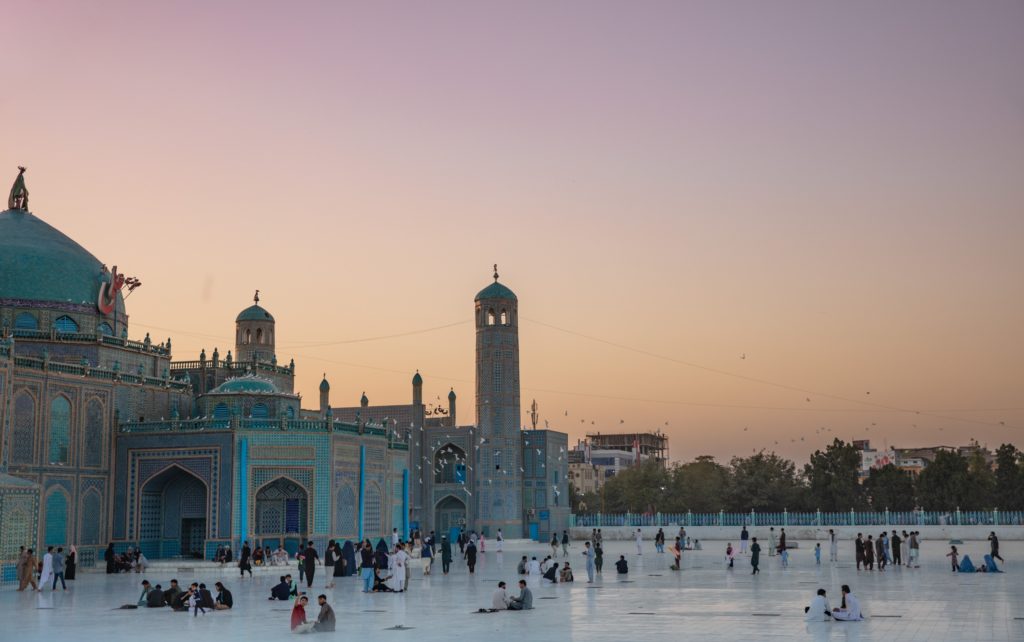
1. Gardens of Babur
This is worth mentioning,the final resting-place of the first Mughal emperor Babur. Babur was buried in the tomb surrounded by the gardens (Bagh) which he ordered himself to construct.
The emperor was fond of gardening and made sure it was constructed in such a way that architecture and beauty will both blend beautifully.
2. Mazar e Sharif
Mazar e Sharif is an important city of Afghanistan, its presence cannot be neglected, and you must visit it if you have a checklist of best places to visit in Afghanistan.
The twin blue domes of Hazrat Ali(son in law of Prophet Muhammad) are one of Afghanistan’s most iconic sights and this landmark is the reason why it is a hub of tourists, around the world. 4 th Largest city of Afghanistan is also agricultural and economical city with great importance.
3. National Museum of Afghanistan
Another addition to best places to visit in Afghanistan is historical hub of Asia. National Museum of Afghanistan is not very old Museum but the treasure it keeps is very old. The museum keeps old manuscripts, miniatures, weapons and art objects belonging to former royal families and emperors.
4. Dar-ul-Aman
Dar-ul- Aman is one of the finest cultural heritage to Afghanistan. It is restored and renovated by the Japanese government. Constructed by King Amanullah known for its great architecture and beautiful location, as situated on the hilltop.
Also known as Bamiyan or Bamian is the capital province Bamyan in Afghanistan. It is also an important city to visit because here many statues belonging to Buddha community is situated.
The statues are craved into the large cliffs and have great importance in Buddhist community. The city is also known as home of world’s oldest oil paintings. With rich cultural landscapes and religious heritage, this city is also another gem of Afghanistan.
Herat, the third largest city of Afghanistan is situated near Iran border and this also has an impact of Persian culture. It’s a home to Timurid dynasty and the Friday mosque has its great importance.
Elegant structure of the mosque shows effaces if Persian culture and the mosque is reportedly 8 centuries old.
7. Faizabad
One of Afghanistan’s largest town will sit deep in your heart at first sight. The majestic town is situated in a valley surrounded by the peaks and alpine meadows.
Animals wandering, bazaars with local knitted goods and good souvenirs are attractions of this place.
8. Band-e-Amir National Park
The breathtaking landmark place is one of the beautiful places of Afghanistan. Tourists favorite spot as 6 mountains and lake at the spot of Hindu Kush mountains makes it very attractive.
9. Panjshir
Blend of beauty, the valley is situated in the foothills of Hindu Kush mountains is a worthy place to visit. Nowadays with American investment it is industrial powerhouse, but its majestic beauty cannot be riped off, medley of snow-topped mountains and rivers, it is one of the finest places to visit.
10. Taloqan
Taloqan sits in the shadow of Hindu Kush mountains, in southern Afghanistan just over the mountains from the Pashtun region. It’s also another worthy addition to places to visit in Afghanistan.
- What is the Capital of Afghanistan?
- Top Attractions in Afghanistan
- Best Hotels to Stay in Afghanistan
- 25+ Most Visited Countries in the World
Sobiya (Staff Writer)
Sobiya is a staff writer at tripfore.com. She loves to feature best places, tour attractions and worldwide destinations in her travel blogs.

10 Best Places To Visit in Indonesia in 2021
Leave a reply cancel reply.
Your email address will not be published. Required fields are marked *
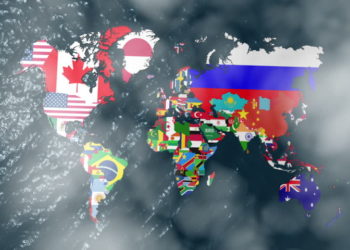
30 Most Populated Countries in the World 2024
30+ best places to visit in pakistan 2024, 50+ travel blogs that accept guest posts 2023, 15 best cities to visit in usa 2024, top 6 best places & tour attractions in sialkot.
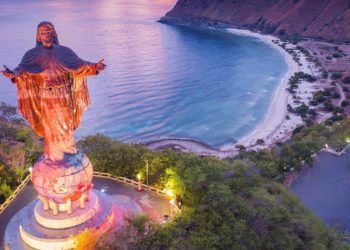
10 Best Places to Visit in Timor-Leste 2024
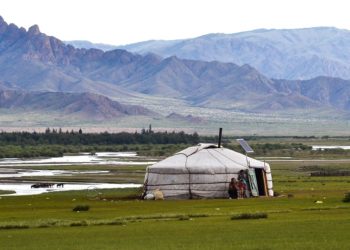
10 Best Places to Visit in Mongolia 2024
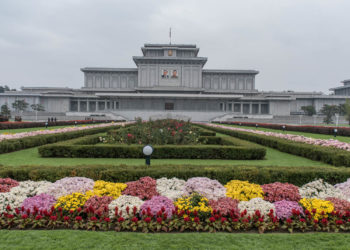
10 Best Places To Visit in North Korea 2024
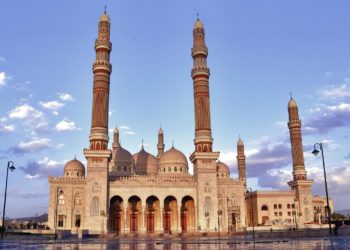
Top 10 Best Places To Visit in Yemen 2024
Tripfore is a travel blog focused on best places, things to do and tour attractions around the world.

- Write For Us
- Privacy Policy
Tripfore.com Copyright 2019-2023. All Rights Reserved.
THE 10 BEST Afghanistan Sights & Historical Landmarks
Afghanistan landmarks.
- Sacred & Religious Sites
- Arenas & Stadiums
- Points of Interest & Landmarks
- Historic Sites
- Ancient Ruins
- Architectural Buildings
- Battlefields
- 5.0 of 5 bubbles
- 4.0 of 5 bubbles & up
- Budget-friendly
- Good for Big Groups
- Good for Adrenaline Seekers
- Adventurous
- Good for Kids
- Good for a Rainy Day
- Hidden Gems
- Good for Couples
- Honeymoon spot
- Things to do ranked using Tripadvisor data including reviews, ratings, photos, and popularity.

1. Cultural Landscape and Archaeological Remains of the Bamiyan Valley

2. Babur Tomb
3. Blue Mosque
4. Friday Mosque

5. Khwaja Abd Allah Ansari Shrine
6. Christian Cemetery
7. Darul Aman Palace
8. Herat Citadel

9. Gawhar Shad Madrasa and Mausoleum
10. Green Mosque

11. Shahr-e-Zahak (Red City)

12. Khawaja Ghaltan Shrine

13. Shah-e Doh Shamshira Mosque

14. Khost Mosque
15. Jami's Tomb

16. Buddhas Of Bamiyan

17. Babur Gardens Mosque

18. Minaret and Archaeological Remains of Jam

19. Musalla Minarets of Herat

20. Red Mosque
21. Ziarat-e Sakhi

22. Pul-e Kheshti Mosque

23. Malan Bridge

24. Buzkashi Stadium
25. id gah mosque.
26. Abdul Rahman Khan Mosque

27. Kabul National Stadium
28. Bibi Mahroo Hill

29. Eidga Musjeed

30. Abu Bakr Sadiq Masjid
What travelers are saying.
Afghanistan Travel Guide
Updated April 2024, The Afghanistan Travel Guide was originally written in September 2018
Afghanistan, the graveyard of empires and the epicenter of my curiosity for a few years. So much so that I’ve now visited the country several times in the past few years and as of this most recent update have visited now following the regime change in 2021.
Learn everything you need to know from safety to where is possible to visit and more in this Afghanistan Travel Guide.
April 2024 Update: Afghanistan is under Taliban control and has been since August of 2021. Some embassies and consulates are starting to give out visas again for tourists. I know of people entering successfully with visas issued in Dubai, Islamabad, Oslo, Prague, and myself most recently was issued a visa on the border coming from Tajikistan ( do not get a visa at the Dushanbe embassy as it’s still staffed by the former regime, more on this later!).
But Is It safe?
In general, no Afghanistan is not a safe country to visit and has not been for a very long time. Visiting Afghanistan is possible, just be aware that Afghanistan travel comes with risks, and safety is not guaranteed.
As of 2023, Afghanistan, in terms of security, has been the “safest” (as in relative to Afghanistan as I’d say visiting the country still comes with risks) its been for travelers for decades. My opinion is that the Taliban is welcoming tourists to help their public image, so these nicities aren’t exactly extended to all of the local populace as you will see.
Under the previous regime, I’ve never felt uncomfortable or in danger while I was traveling in Afghanistan. Mostly the same can be said after my June/July 2023 visit, my first time doing so following the Taliban’s rise to power.
That said, I never felt in danger or threatened on this recent visit, just hassled at a few checkpoints as a solo female (where is you husband/father/brother? why isn’t he with you? Oh divorced? Why did he leave you?), hard to determine as I am Italian-Persian on one side of my family so I can pass as an Afghan with the right clothing, so at times I think I get held to a slightly different standard than say, someone who does not.
So if you’re ready, you’ve versed yourself on the landscape, cultures, religion, and you fully understand the risks involved with Afghanistan travel and visiting a country that’s been at war for nearly 50 years then read on to learn how you too can visit Afghanistan in this Afghanistan Travel Guide.
Need Travel Insurance and Evacuation Services for Afghanistan?
Start shopping for travel insurance plans over at IATI Insurance . Readers of the Adventures of Nicole get a 5% discount off your plan.
The Adventures of Nicole partners with Global Rescue to offer the world’s leading medical evacuation and security advisory services. To travel with peace of mind, shop evacuation coverage at Global Rescue .

The official currency of Afghanistan is the Afghani. As of April 2024 , the current exchange rate is fluttering around $1 USD = 72.50 AFS .
US dollars are widely accepted for larger payments. ATMs are available in the country in major cities, however, they may or may not work. AIB (Afghan International Bank seems to be the most reliable with foreign cards).

Afghanistan is a multilingual country. The two official languages of the country are Pashto and Dari (Dari is more or less a Persian dialect, along with Tajik spoken in Tajikistan and Farsi spoken in Iran ).
Dari is spoken more widely in the north and center of the country while Pashto is the more commonly used language in the south and east.
Other languages found in the country are Hazaragi, Uzbek, Turkmen, Balochi, and Nuristani, as well as Wakhi and Kyrgyz that are spoken in the remote Wakhan Corridor .
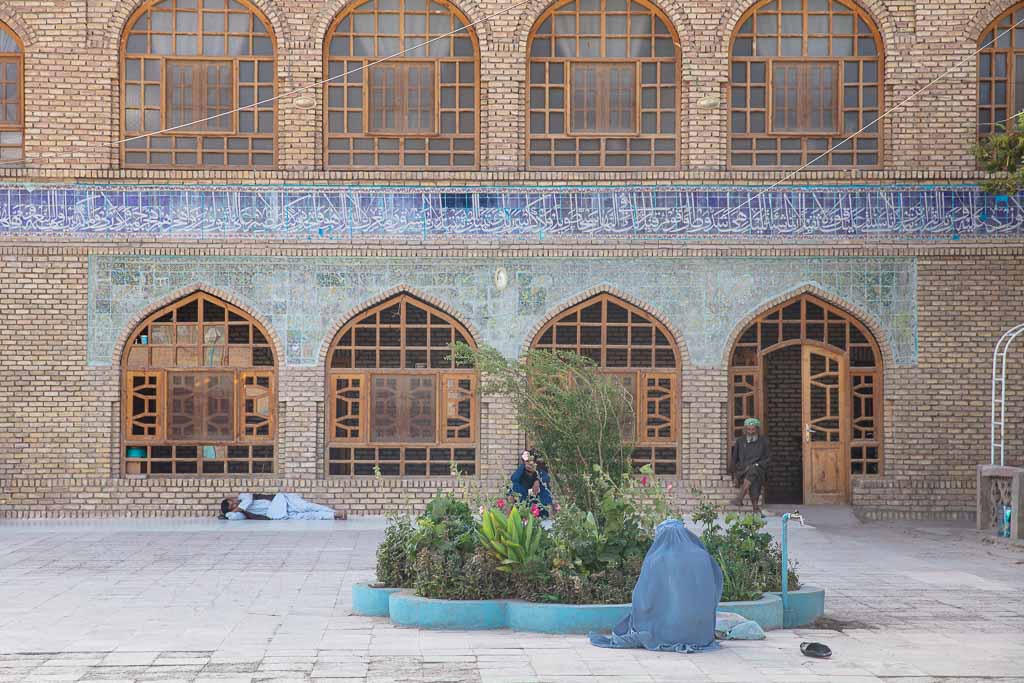
99% of Afghans are Muslim, with the majority being Sunni. Ismailism is widely practiced in the Wakhan Corridor.
Other Shia Muslims are found scattered throughout the country as well. Other religions are practiced in the country including Sikhism and Hinduism.
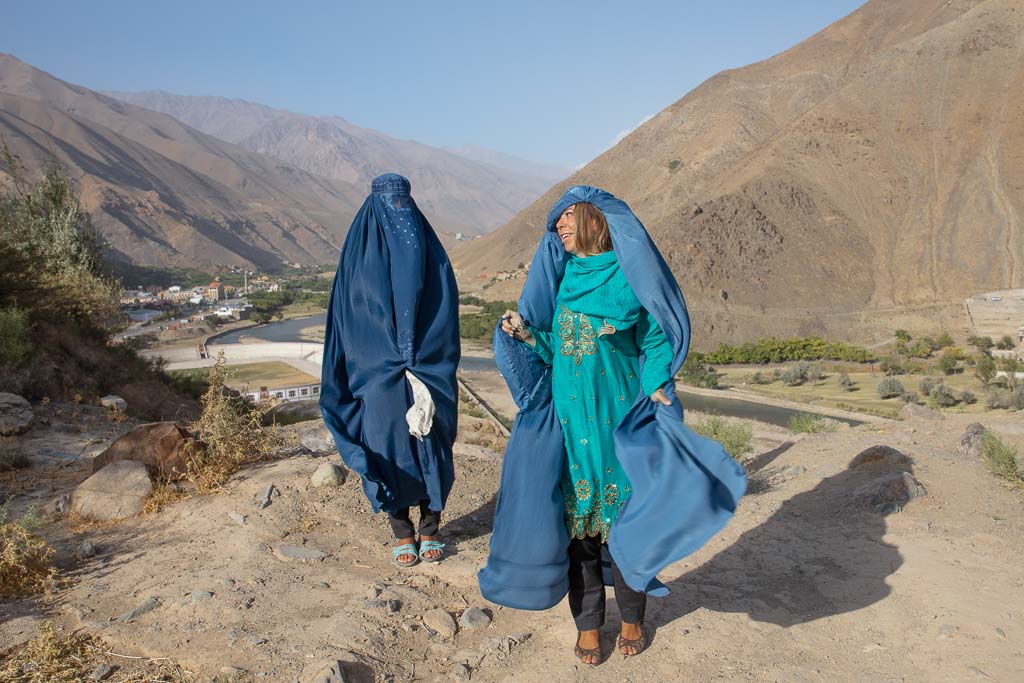

What To Wear In Afghanistan
Dressing in the local clothing styles is the best option while in Afghanistan. It’s always best to try to blend in, plus the Afghans really appreciate to see foreigners wearing their styles.
I highly recommend getting a shalwar kameez when you arrive. A shalwar kameez is basically a long shirt and baggy pants that both men and women wear. It’s seriously the most comfortable thing you’ll ever wear.

For Women Traveling Afghanistan
Women in Afghanistan must dress according to Islamic modest dress, also known as hijab. You should wear long sleeve tops at least mid-thigh in length paired with full-length trousers. Loose, floor-length, long-sleeve dresses are acceptable as well.
Headscarves should always be worn when out in public. Save yourself the hassle and grab a shalwar kameez and a headscarf after you arrive.
In some more conservative areas, you will see the majority of women wearing chadri, chador, or burqa over top of their shalwar kameez. It may be helpful to purchase a chador or chadri to blend in, especially if your travels will take you to more sensitive and conservative areas.
You can purchase ready-made shalwar kameez for 1,000-2,000 AFS on up depending on the quality and a blue chadri will normally cost about 1,000 AFS.
Bonus Tip : At the bazaar buy what looks like a shower-loofah superglued to a plastic hair clip– They usually only cost about 70 AFS. It’s like stuffing your headscarf– it makes it look better, but more importantly, it helps keep your headscarf in place so that it has something to ‘sit’ on the back of your head. They’re called headscarf volumizers.
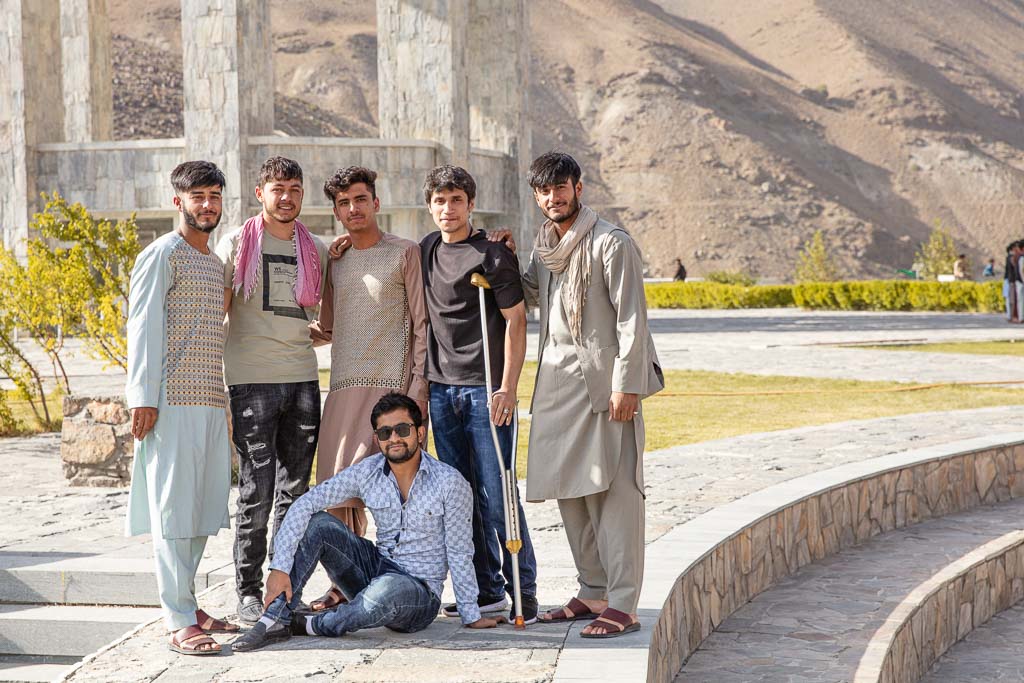
For Men traveling Afghanistan
The shalwar kameez optionally with a vest, sports jacket, or a scarf is the usual get-up for most men. You can purchase premade shalwar kameez, but for the best fit have one tailored.
Fabric and tailoring should cost around 1,200 AFS. If you want to really blend in, pick up a pakol- the flat wool hat worn by many Afghan men. You’ll easily find them in bazaars.
In big cities, you will see men out and about dressed in western clothing like jeans and t-shirts, so western dress in this setting for men should be okay, however, do not wear shorts.
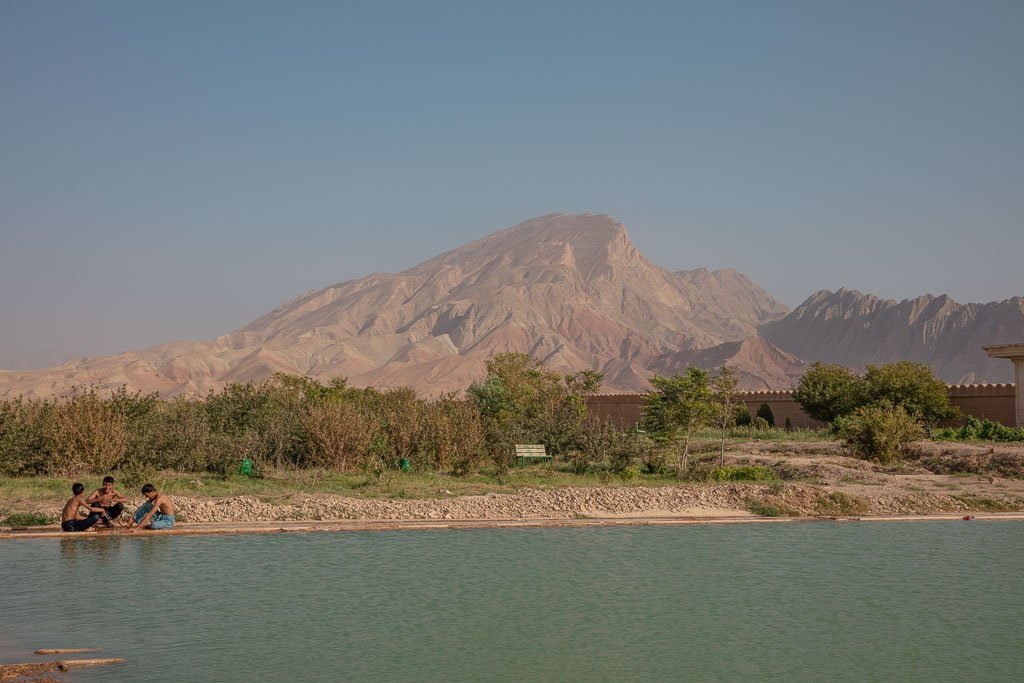
Best Time For Afghanistan Travel
When to visit is largely dependent on where you plan to go in Afghanistan.
Most of the country is most pleasant in the late spring and early fall (April, May, September, October).
The summer months of June-August can be boiling hot in most of the country (after just having done this I can attest to how miserable it feels), however, this is the best time to visit for those headed across the Tajik border into the Afghan Wakhan to trek in the Afghan Wakhan Corridor , as well as mountainous Nuristan.

There are two ways in which to enter Afghanistan and that is by flight or by road.
By Flight : Most flights will arrive at Kabul International Airport, with direct connections to the UAE, Turkey, India, Kazakhstan, Uzbekistan, China, and Russia.
By Road : There are many border crossings between Tajikistan and Afghanistan but all appear to remain shut as of 2023 aside from Panji Poyan/Shirkhan and Ishkashim.
The Panji Poyan/Sherkhan Bandar border crossing is open in both directions with visas easily obtainable at the border for $100 USD.
As of September 2023, the Ishkashim border crossing has reopened for those planning to visit the Wakhan Corridor.
The Hairatan-Termez crossing with Uzbekistan near Mazar e Sharif is currently open, but you can only enter Afghanistan here. You cannot exit Afghanistan and enter Uzbekistan here .
Pakistan and Afghanistan have 8 border crossings though the only one I am for sure is open to foreigners is Torkham/Khyber Pass which connects Peshawar and Jalalabad.
Those planning to combine Afghanistan and Iran should use the Islam Qala Border Crossing (Herat-Mashhad) or the Zaranj Border Crossing (Nimruz-Zabol). In my personal experience, Islam Qala was quite easy.
For Turkmenistan , there is the Toraghundi Border Crossing (Herat Province) and the remote Aqina/Imam Nazar Border Crossing (Faryab Province). It sounds like people have crossed more recently at Toraghundi. For Aqina, no word, but I would arrange transport on both sides if attempting as it’s pretty middle-of-nowhere.
Finally, China’s only crossing with Afghanistan is Wakhjir Pass in the far reaches of the Wakhan Corridor. It’s never been open to foreigners (or really anyone for that matter).
I have personally crossed at Ishkashim (Tajikistan-Afghanistan-Tajikistan), Islam Qala (Afghanistan-Iran), Hairatan (Uzbekistan-Afghanistan), and most recently at Shirkhan (Tajikistan-Afghanistan-Tajikistan) and can say that crossings at these posts were simple and easy.
These borders can sporadically open and closed for a myriad of reasons. Check out this Afghan Border Crossings Post on Caravanistan and check the forums for updates if planning to enter by land.
Afghan Land Border Crossings From My Personal Experience
Tajikistan-Afghanistan at Shirkhan Bandar: Completed in June 2023 (entered) and July 2023 (exited). Shared taxis leave Dushanbe’s Sakhovat Bazaar for Bokhtar (formerly Qurgonteppa) for 40 TJS per seat. Once to Qurgonteppa, you’ll need to get another shared taxi (or may need to just hire the entire car) to Panji Poyan for 50 TJS per seat (around 100 TJS for the car).
On the Tajik side you’ll wait by a gate for a car or van to show up that will take you to the Tajik immigration building for 10 TJS/100 AFS per person. You’ll go through a quick customs search and get your exit stamp. Once out, wait for another van or car to take you across to the Afghan immigration facility for another 10 TJS/100 AFS.
Here you’ll go through a body search and they will go through luggage before sending you for your entry stamp. If you do not have a visa, you will be instructed to go to an adjacent building to buy the visa. I would recommend getting the visa on the border! I had secured one from the Dushanbe Embassy only to be told it’s not accepted here as the embassy in Dushanbe is still staffed by the previous government, so moral of the story is do not get your Afghan visa in Dushanbe .
You will need to pay $100 USD, fill in an application, write a letter of responsibility, and provide 4 passport photos and after that you are in Afghanistan but you’re not finished yet- you must go to the Ministry of Foreign Affairs in Kunduz City for an approval stamp on your visa.
For exiting Afghanistan back to Tajikistan at Shirkhan, the process is more less the same, just in reverse. Once you are dropped off at the gate in Tajikistan (after you’ve gone through customs and immigration and taken the van to the gate) you will find shared taxis bound for Dushanbe just outside for 200 TJS per seat and expect around 100 TJS if planning to only go to Qurgonteppa.
Afghanistan-Iran at Islam Qala : In late March 2019 I crossed from Afghanistan to Iran at the Islam Qala-Dogharoun crossing. Procedures exiting Afghanistan were straightforward, you go into a shipping container first for a body check and after completing walk out and over to the immigration building. There will be one line for men and another for women and children.
Your passport will be scanned, you’ll be fingerprinted and you may be asked some questions like where are coming from/going, etc. You will then be asked to show your Iranian visa and then be stamped out.
On the Iranian side, you will hand over your passport and visa and get stamped in. Next, you will put your bags through an X-ray and your electronics may be checked.
You will then put your bags back in the car and you’ll drive a little further up where you will go through customs. Here you will likely have to empty out all of your bags for the search. Read about my entire border crossing experience here .
Shared taxis depart from Herat daily. A seat will cost you 1,100 AFS. Ask your guesthouse or hotel to arrange one for you.
Uzbekistan-Afghanistan at Hairatan : Crossing the border from Termez to Mazar e Sharif was quite simple and straightforward. From Termez, it’s possible to grab a taxi to the Hairatan border for about 30,000 UZS with some haggling.
You will be dropped off at a checkpoint about one kilometer before Uzbek border control and from here you’ll want to take a shuttle bus (sometimes it’s just a marshrutka) to the border office for 5,000 UZS. There will be hawkers at the checkpoint offering rides across the border for 400,000 UZS, ignore them.
Once you arrive at the border office you’ll put your luggage through a scanner and then you’ll have your passport stamped out of Uzbekistan. When you are finished and have officially exited the country, go outside. You can either walk the kilometer over the Friendship Bridge to Afghan border control, or you can wait for the marshrutka and pull 5,000 UZS to the other side.
Afghan border control is easy, you will first have your visa checked and be stamped into the country. Next, you’ll put your luggage through a scan.
Once finished, you will proceed to the parking lot outside where you can find money changers just across the street and shared taxis to Mazar e Sharif. If you’ve arranged someone to pick you up, or a guide they will be waiting in this lot. If taking the shared taxi, plan to pay about 200 AFS per person.
Tajikistan-Afghanistan at Ishkashim : In September 2017 I visited the Wakhan Corridor and the border crossing in both directions is pretty simple. From Tajikistan to Afghanistan you’ll go into the immigration building at the border post 3 km out of Ishkashim.
Here you’ll hand over your passport and Tajik e-visa (or not if you have a visa in your passport from an embassy). You will also need to show your Afghan visa. Here you’ll get stamped out and then walk through the fence gate and across the bridge into Afghanistan.
In Afghanistan, you will enter the immigration building and get stamped in. The only way to get to Sultan Eshkashim on the Afghan side is by taxi for $20 USD, or to walk. If you have not arranged this previously the officers at the border will call a car for you.
Read about my entire border crossing experience in both directions here .
Leaving back to Afghanistan will be the same process only in reverse. Make sure you have a multi-entry Tajik visa.
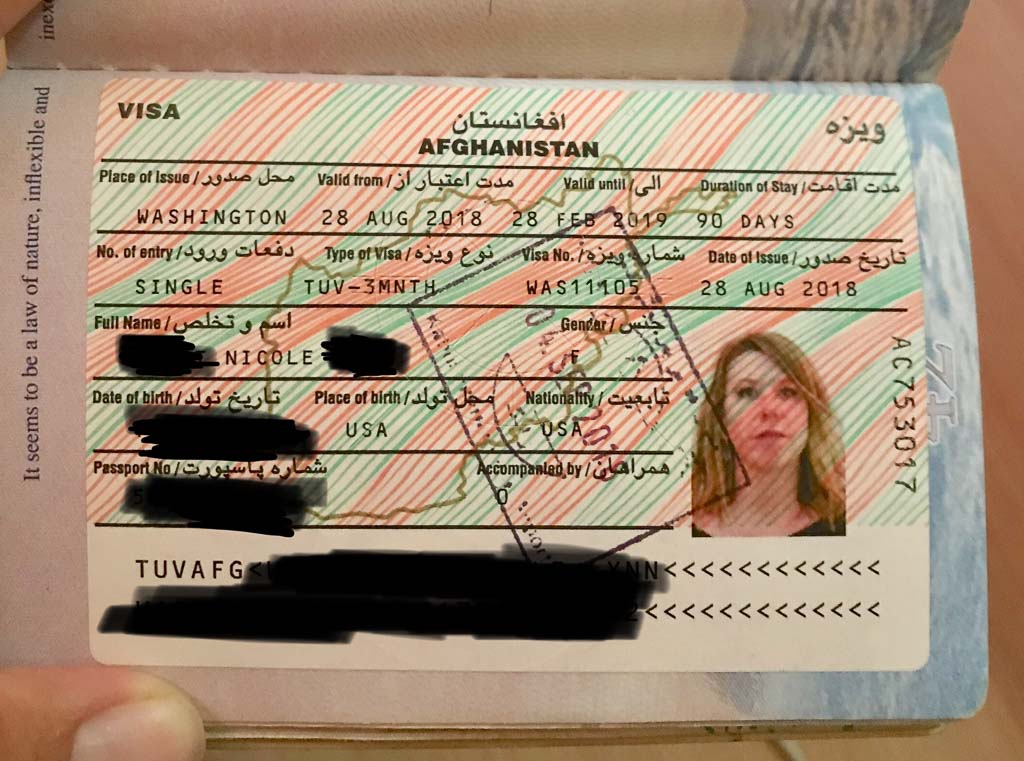
All visitors to Afghanistan are required to get a visa in advance before arriving in Afghanistan. Visas are typically given for 30 days within a 3 month window and are usually single entry.
Many embassies and consulates will not issue tourist visas to Afghanistan for obvious reasons. I can personally say that obtaining an Afghan Visa at the Afghan Consulate in Khorog, Tajikistan; by mail from the Washington DC Consulate in the USA; and on the border at Shirkhan Bandar were painless and simple.
In 2017, I went to the Afghan Consulate in Khorog by myself at 9:30 am and walked out about 30 minutes later with the visa in my passport, you can read more about how to get an Afghan Visa in Khorog here .
In 2018 I applied via the online application system from the Washington DC Consulate and then mailed my required documents in and had no problems, the process took about 4 weeks (normally it only takes 2 weeks to complete but the consulate closed for over a week for the Eid al Qurban holiday). I applied for a visa again in 2019 and received it in about 3 days. Read embassy and consulate reports from other countries here .
In 2018 & 2019, I applied for visas using the online visa system through the Afghan Consulate in Washington DC. The process is simple and straightforward. For my visas in 2021 the online system was discontinued so I had to fill out all the documents and mail them).
In 2023, I applied for an Afghan visa and the Afghan Embassy in Dushanbe only to be denied entry with it on the border (I was a bit of a lab rat for this process) but easily obtained the visa on the border at Shirkhan Bandar.
April 2024 Update: I have received updates from travelers who have successfully gotten visas at embassies in Islamabad, Dubai, Prague, and Oslo. Myself, as you’ve read above had success getting a visa on the border coming from Tajikistan. Anyone with updates to add here, feel free to leave a comment at the end of the post or email info to me and I’ll include it in this post for other travelers.
What You Will Need To Apply
Filled in and signed visa application, 1-4 passport photos depending on the embassy/consulate/border, 1 valid passport, visa application fee, and a letter stating that you take full responsibility for your safety in Afghanistan and planned itinerary.
If applying in a third country, the consulate may require you to bring a letter from your own embassy clearing you to go.
Permits are needed to travel pretty much anywhere in Afghanistan these days. If you will be traveling using a guide, make sure to agree on an itinerary so that they can gather the proper documents in order to travel around everywhere you wish.
If traveling independently, the easiest way to go about this is to have a guide or agency issue a paper and gather a permit for your first planned destination and beyond that you’ll need to figure out the location of the Ministry of Culture in every province you plan to visit to get “necessary” permissions.
By necessary, I mean that you are supposed to have a permit that gives you access to that province and certain destinations within. That said, many Taliban soldiers are illiterate and won’t be able to read the permits anyways, but there is the off-chance you get caught by someone who is literate and does know the rules, which could mean trouble for you (at best a scolding, at worst a detention center or jail).
As of March 2024 permits are still required and are free. In summer 2023, permits cost 1000 AFS per person for each province.
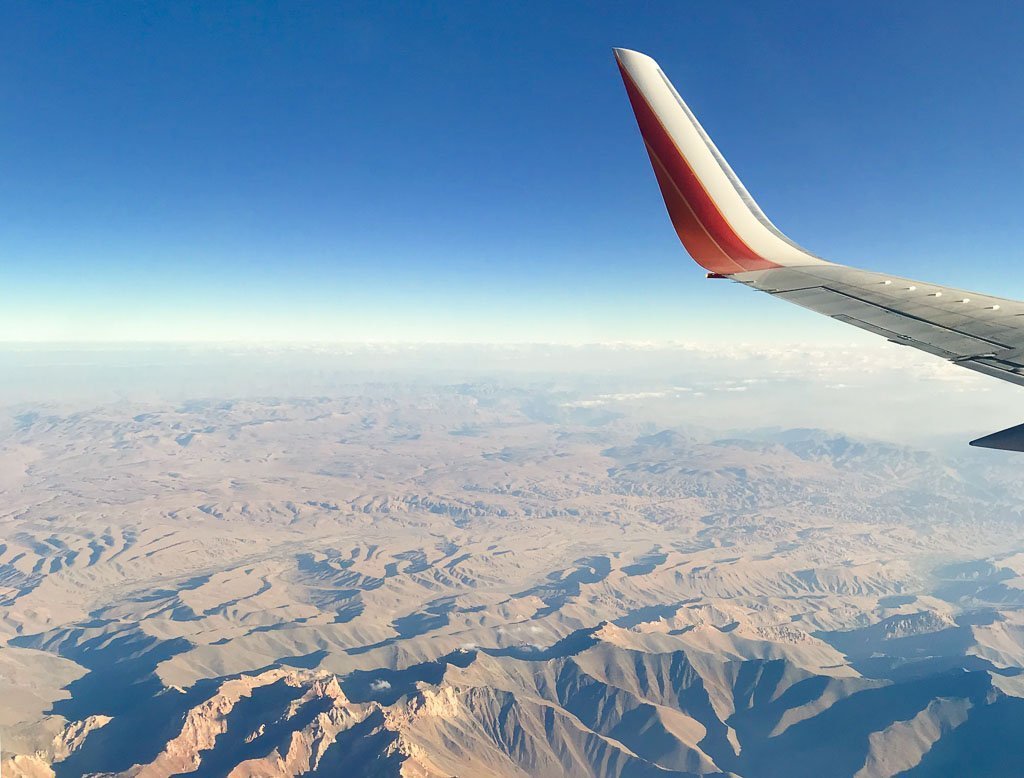
Getting Around
Things have changed as 2023 and you can visit just about everywhere in the country by road provided you’ve attained the correct permits. That said, flights are still popular to cut down on some of the long distances and in some prats, horrible roads.
Checkpoints
You will certainly encounter frequent Taliban checkpoints traveling around Afghanistan now. In cities, between cities, even places seemingly in the middle of nowhere like a hike to a cricket pitch near the town of Parun in Nuristan.
In my experience, many checkpoints they just waved the vehicle I was in through, sometimes they would stop the car and peer into the windows. At others they would ask to see my passport and/or permits.
Only a small few times was I hassled at checkpoints and lectured that women are not allowed to travel without a male guardian and how they weren’t going to let me through (after a few phone calls they always did) and questioned about where I was going, where I came from, even about my personal life and even had my phone searched (to his dismay, there’s nothing racey on there).
At one I don’t think they’d have let me beyond had I not had a driver advocating for me. I can’t speak for male travelers on this, but female travelers (traveling sans man) should be aware that you may face some annoyances in this category.
Obviously the fastest option for traveling between cities.
Kam Air serves Kabul, Herat, Kandahar, Mazar e Sharif.
Ariana Afghan Airways serves Kabul, Herat, Mazar e Sharif, and Kandahar.
Kam Air and Ariana are the main two airlines in the country, although Kam Air does tend to have fewer delays and cancellations (but they still have lots of delays and cancellations). Another small airline offering flights in Afghanistan is Safi Airlines.
Costs & Where To Buy Tickets
Most flights will range from $50-110 USD each way between cities. You can purchase tickets online for some airlines such as Kam Air, however, prices tend to be a bit cheaper if you book in a ticketing office. Plan to pay in cash if purchasing at an office.
Going To The Airport
Taking a flight usually involves going through at least two security checkpoints to enter the airport and a third to reach your gate. You can typically expect to be asked to place your bags on the floor in a line and told to wait after the second X-ray checkpoint where bomb-sniffing dogs will be brought out to inspect bags.
Men and women will have a full-body pat-down usually at the first security checkpoint, of course in separate areas. The women’s security will almost always be behind a curtain.

You’ll see many yellow Toyota Corolla taxis around Afghanistan, particularly in cities. In some cities, such as Ghazni City and Jalalabad, tuk-tuks seem to be the popular taxi. Taxis almost never have meters so agree to a price before departing.
Typically rides within a city will come out to 70-400 AFS depending on the distance. These taxis can also be negotiated with for day trips as well. Prices will depend on where you are planning to go, but usually will range from $20-50 USD in most cases.
It is possible to hire taxis for longer distances too but you’ll need to negotiate a price before departure.
By Public Bus & Shared Taxi
Public buses are available in most cities. You can expect most rides to cost no more than 10 AFS.
For longer distance trips between cities, there are usually buses and shared taxis available ranging in price depending on the distance. You can use these, however, unless you speak Dari and/or Pashto you might find checkpoints to be a headache.

The Wakhan Corridor
Realistically the only way to travel the road in the Wakhan beyond Ishkashim is by private taxi hire which can be quite expensive. As of summer 2023, guides from the Wakhan are trying to hold meetings to reduce this cost, but we’ll see what happens.
Best to try and find other travelers to cost-share on a Wakhan trip with. It is possible to go trekking by horseback and even yak. Donkeys are commonly used to porter gear and supplies on treks.
Read more about the Wakhan Corridor here
Afghanistan Travel Insurance
Not many insurers cover high-risk destinations such as Afghanistan.
Personally, I recommend IATI Insurance for travel insurance. Readers of the Adventures of Nicole get a 5% discount off theirplan.
Those looking for medical evacuation and security advisory services should check out plans with Global Rescue .
Do research if the company you choose is going to cover Afghanistan as these policies seem to change quite frequently and with little notice, US passport holders seem to face the most difficulty in obtaining travel insurance for Afghanistan and other high-risk destinations.
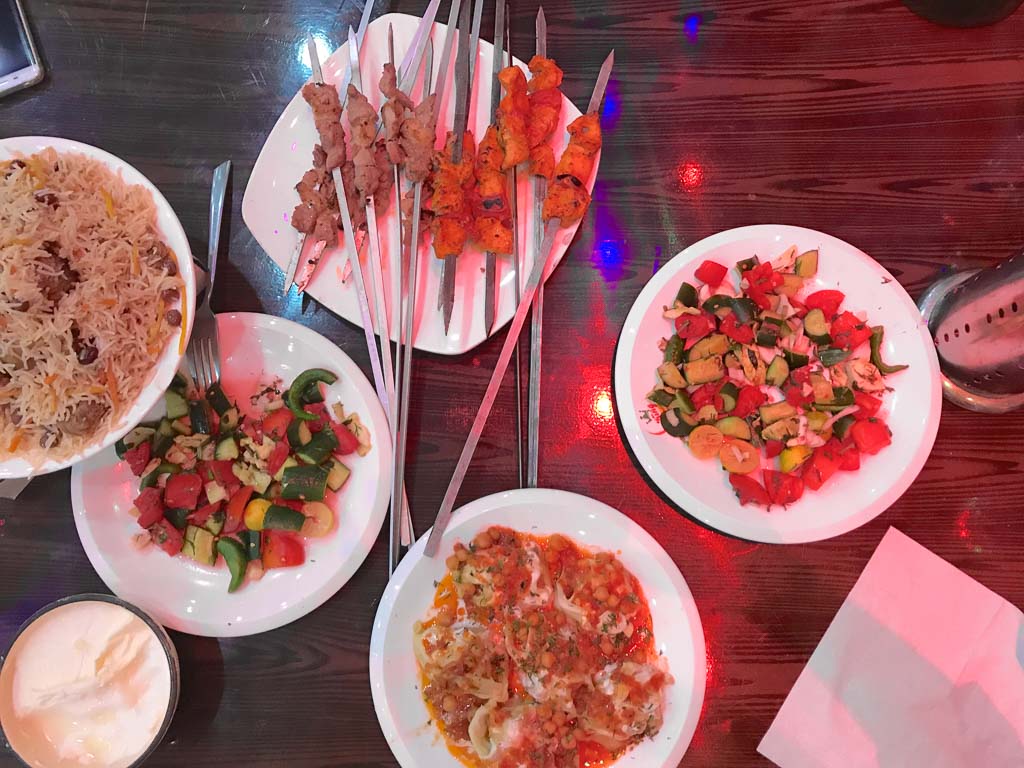
Afghanistan is at the crux of food paradise with influences from Persia, South Asia, and Central Asia . The national dish of Afghanistan is Kabuli Pulao, and you can expect naan and chai to accompany most meals and snacks. This is a quick snapshot of Afghan cuisine, but do know that dishes can hyper-regional in Afghanistan.
Afghan Dishes to try
- Qabuli Pulao : a fried rice dish that’s typically spiced and has a chunk of beef or mutton cooked in it
- Mantu : A delicious meat filled dumpling and covered with beans and yogurt
- Ashak : Similar to the mantu but stuffed with spinach
- Chicken Karahi : One of the most popular dishes throughout South Asia. The wok it’s cooked in is called a karahi. The dish usually includes chicken, tomatoes, onions, garlic, and spices
- Kebab : Skewers of meat, typically chicken, beef, or lamb. Koobideh (spiced ground meat) and chicken are my personal favorites
- Naan : The ubiquitous bread you’ll have with every meal
- Chai : Along with naan, chai will accompany almost every meal, bazaar sale, meeting with new strangers, etc
- Challow : White rice
- Shirbirinj : A common staple throughout Afghanistan. It translates out to milk rice. Usually served with a crater filled with butter on top and a bowl of sugar on the side
- Qorma sabzi : a mild curry dish of spinach and usually included beans and chunks of meat. Meat-based qormas exist too, qorma is very similar to curry
- Dooh : A salty, sour yogurt drink, typically served with chopped mint blended in it
Where to Go in Afghanistan
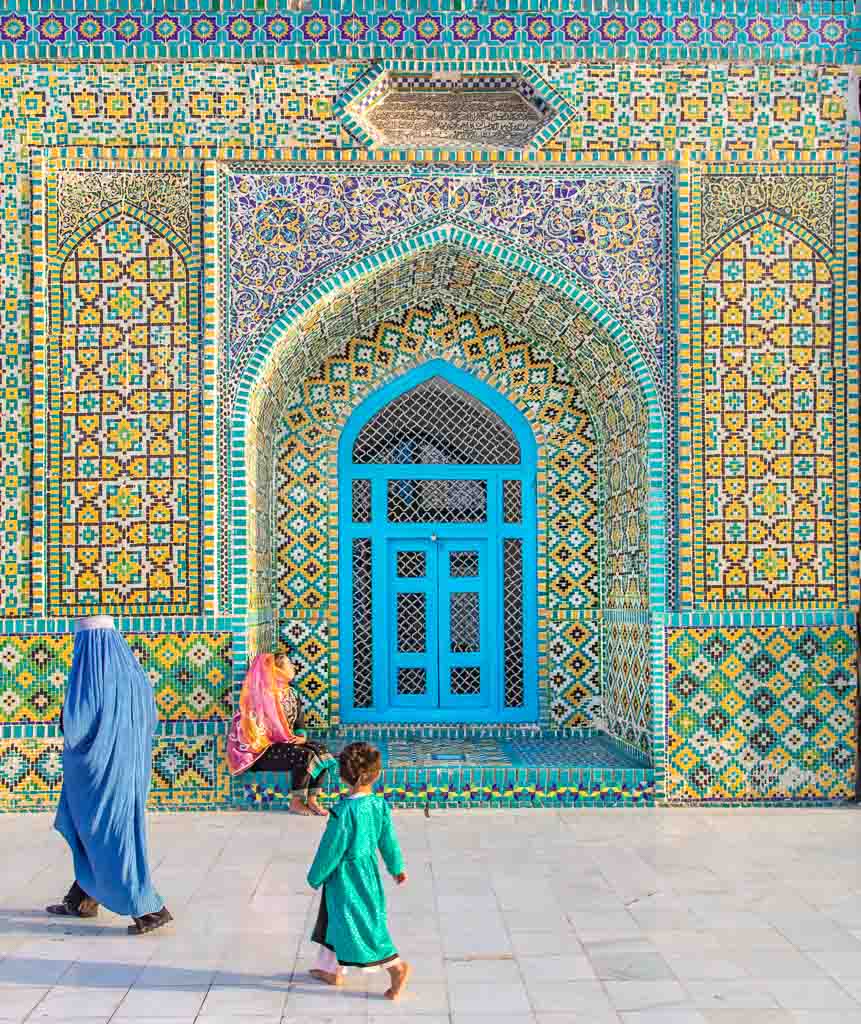
Most travelers’ introduction to Afghanistan will be in Kabul . The city is famous for Kabulian hospitality and a long history, but with that said the city has seen much damage between 1979-2001.
What To See In Kabul
- Shrine of Sakhi: A beautiful shrine located at the foot of TV Hill in West Kabul. It’s an important Shia Muslim site, believed to be where the cloak of Mohammed was kept until it was moved to Kandahar. Shrine of Sakhi is the only park (as in the grounds around it) that Afghan women are permitted to visit
- Shah do Shamshira Mosque : In what some call Afghan Baroque-style, Shah do Shamshira is quite unique from the smattering of mosques you’ll see around Afghanistan. Located in the south of the city, it is nearly impossible to miss
- Gardens of Babur : Dating back to 1528, this is the final resting place of Mughal Emperor Babur. Babur Gardens has undergone extensive restorations after being badly damaged during the Afghan Civil War. Note that Afghan women are not allowed to visit any public parks or gardens, so female travelers will likely need to argue that they are in fact, allowed to visit
- Chicken Street : Good place to pick up souvenirs and trinkets to take home. Chicken Street was a staple along the 1960s Hippy Trail
- Qargah Lake : About 15 km west of Kabul on the way out to Paghman Valley, Qargah makes a great spot to escape the bustle and grab a lakeside meal, have a picnic, or relax. The lake is actually a reservoir
- Bibi Mahro Hill : A great spot to head for sunset over Kabul. There is an Olympic sized swimming pool up top, though it’s almost never been used for its intended purpose. The diving board was used during the Taliban reign for public hangings. I was hassled getting in here by Taliban manning the entrance as it fits the “park” category, finally after showing my passport and permits they finally allowed me in and then later thanked me for visiting and wearing Afghan attire
- TV Tower Hill : Named because it’s where many channels are broadcasted from, but for a tourist TV Hill offers sweeping views of the city
- Ka Feroshi Bazaar & Bird Market : One of the oldest bazaars in Kabul where you can find just about anything. The Bird Market is one of the most photogenic places in the city, watching local buys and sellers haggle over doves, partridges, parrots, finches, canaries, chickens, and more. Be careful about belongings here as pickpocketing happens frequently. The area is also known for plenty of seedy characters that hang around it. Not as lively as it once was following the Taliban takeover
- National Museum of Afghanistan & Landmine Museum : Both museums are worthy of a visit to learn a bit more about Afghanistan’s distant and more recent history
- Chehel Situn : A lovely garden of brick pathways lined with tall trees and roses. A nice spot to relax and picnic, meet locals, or play games. As with other parks, ‘no girls allowed’ so plan to argue to get in if a woman.
*There is an 100 AFS entrance fee for the National Museum, and an 100 AFS entrance fee to enter the Gardens of Babur. Chehel Situn has a 100 AFS entry fee, plus 350 AFS additional for cameras.
Plan your visit to Kabul: The Kabul Travel Guide
Kabul Day Trips:
- Panjshir Valley : Located north of Kabul, you’ll find more details about it in the next section
- Istalif : Located about two hours north of Kabul by taxi. This scenic village is known for its impressive ceramic works. A taxi there and back should cost around 3,500 AFS
- Paghman : Unfortunately as of 2021 visiting Paghman isn’t recommended due to insecurity. Located west of Kabul beyond Qargah Lake, Paghman is a great place to relax for the day and have a picnic if safety improves.
Where To Sleep In Kabul
- Midrange: Baharistan Arya Guesthouse $40-45 USD per night, double
- Midrange: Cedar House +93 7 0028 5843 $50 USD per night, double
- Splurge: Kabul Serena Hotel
Getting In & Out Of Kabul
Panjshir Valley : A hire of a taxi for the day to the Panjshir Vally and back to Kabul will cost around $45 USD.
Bamyan : At the time of writing (October 2018) and of my visit (September 2018), the only way to reach Bamyan is by road. If you are determined to visit despite there being no flights, I 100% recommend making the journey with a private car/local guide as the road passes very near to Taliban controlled areas– with the help of Let’s Be Friends Afghanistan we were able to make the journey without issue. There are shared vans that depart Kabul in the early mornings for 400 AFS to Bamyan as well but are not recommended at this time. If going by road, only use the route via Charikar and Ghorband, the shorter road via Wardak has stretches controlled by Taliban.
Mazar e Sharif : You can reach Mazar by flight for about $85 USD (one way) daily from Kabul. In the past it was possible to drive to Mazar e Sharif from Kabul, but as of 2021 there is instability around the city of Pul e Khumri in Baghlan Province with some Taliban checkpoints popping up. If things improve again, you can either hire a taxi or take the 600 AFS bus.
Herat : A long journey from Kabul, expect many hours on the road. Advisable to fly.
Kandahar : Flights are your best option to reach Kandahar with tickets running around $85 each way. There is a highway that connects Kabul and Kandahar in roughly 6 hours’ time.
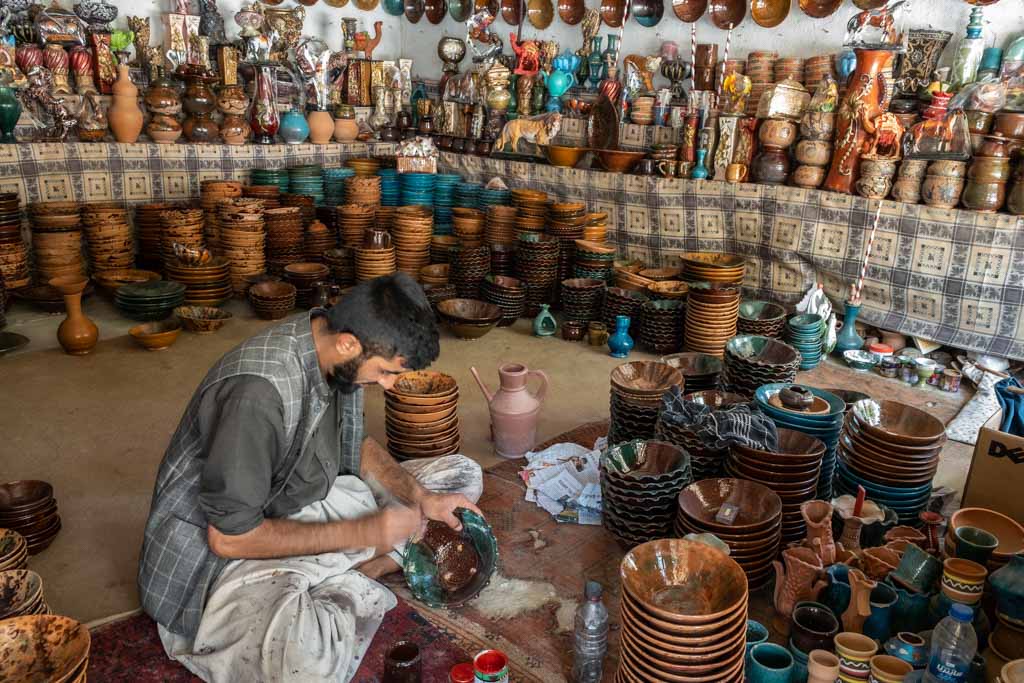
Located only 30 km north of Kabul, Istalif makes for a nice day trip to escape the chaotic city traffic. Istalif is famous for its handmade glazed pottery and it’s pretty common for Afghans to come from far and wide to do shopping here. There is one main thoroughfare that you can find a number of pottery shops along where you can even see artisans at work on their wares.
By western standards the pottery here in Istalif is incredibly inexpensive- I managed to pick up a large platter for 150 AFS, a large bowl of 100 AFS, and a coffee mug for 70 AFS. You will need to be able to do some bargaining though and if sellers sniff out that you’re foreign you can expect to be quoted significantly higher prices.
Istalif is framed by gorgeous mountains, making it a great day trip. There are outdoor chaikhanas set up in the forest along the river too making for a nice place to grab lunch and relax.
You can make arrangements with a taxi driver in Kabul to take you out here, wait and bring you back. Plan to pay around 1,500-2,000 AFS depending on your bargaining skills.
Read up more about the damaged ceramics city of Istalif
To be honest, Parwan is a place you will likely just pass through on your way from Kabul to Bamyan, Panjshir, or Mazar e Sharif.
The main town to know of in Parwan is Charikar as this is the turn-off to go toward Bamyan.
- The Takht e Rustam Buddhist Stupa : An interesting stupa sat on an island of rock
- Buddhist Caves & Ancient Bazaar : An old bazaar just down the hill from Takht e Rustam. Houses a Buddhist temple, though the murals have been removed
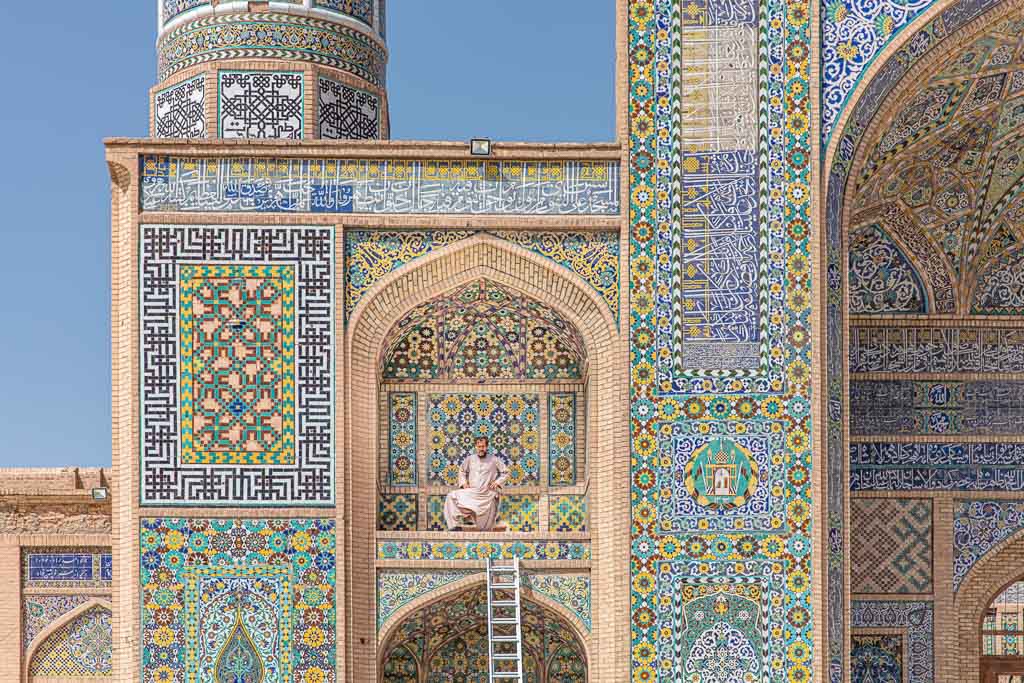
With over 3,000 years of eventful history, Herat is a cultural and historical center in Western Afghanistan. Given its proximity to the Iranian border, Herat bears quite a semblance to its neighboring country from architecture to Herat’s women’s preference for the black cloak-like chador over the ubiquitous blue Afghan burqa seen throughout much the rest of the country.
Herat is centered around the well-restored Herat Citadel with the Masjid i Jami (The Great Friday Mosque) situated nearby, along with a fascinating bazaar, caravanserais, and mausoleums.
What To See In Herat
- Masjid i Jami (Friday Mosque or Great Mosque of Herat) & Tile Workshop : The Friday Mosque is one of Afghanistan’s best pieces of Islamic architecture. The Tile Workshop is also a must-see to appreciate the hard work and effort that goes into the constant restoration required for the thousands of tiles that adorn the mosque
- Herat Citadel (Natural History Museum & Museum of Communications inside) : Dating back to 330 BC, the citadel has been destroyed and rebuilt numerous times. The citadel also houses two museums
- Herat Bazaar : Great place to pick up odds and ends or souvenirs
- Chahar Suq Cistern : originally built as the cities water storage and used up until the 1970s. The cistern has fallen into disrepair, though restoration efforts are underway
- Yu Aw Synagogue : Herat once had four synagogues, though all have nearly fallen apart. The good news is that all are under restoration. Yu Aw is being restored and will be used as a primary school
- Gowar Shad Mausoleum, Alisher Navoi Mausoleum & Musallah Complex : Unfortunately the entire complex was badly damaged by the British during the 19th century. The minarets of Musallah feel like a skeleton of the great structure it once was. Gowar Shad Mausoleum and the Alisher Navoi Mausoleum are in the best shape of of the complex
- Shahzadeh Tomb of Two Princes : These two side by side tombs to Abdullah and Qasim house intricate Timurid-era tile work and beautifully painted domed ceilings
- Guzargah Mausoleum (Abdullah Ansar Mausoleum) : A shrine to the 11th century Herati saint and Sufi mystic Khoja Abdullah Ansar, located outside the city in the village of Guzargah
- Pul e Malaan : South of the city this 22-arch bridge spans the Hari Rud River
- Jihad Museum : Next to Bagh e Mellat Park, the Jihad Museum pays homage to Herat and Afghanistan’s turbulent recent history
- Takht e Safar Park : Worth a stop, especially if you’re visiting Guzargah in late afternoon as it’s located only a couple kilometers away
*There is a 500 AFS entrance fee to enter the Herat Citadel and it is another 500 AFS to enter the Herat National Museum inside the Citadel. There was an entrance fee for the Jihad Museum is 750 AFS, plus 750 AFS additional for cameras.
Plan your time in Herat: Herat In Photos & Travel Guide
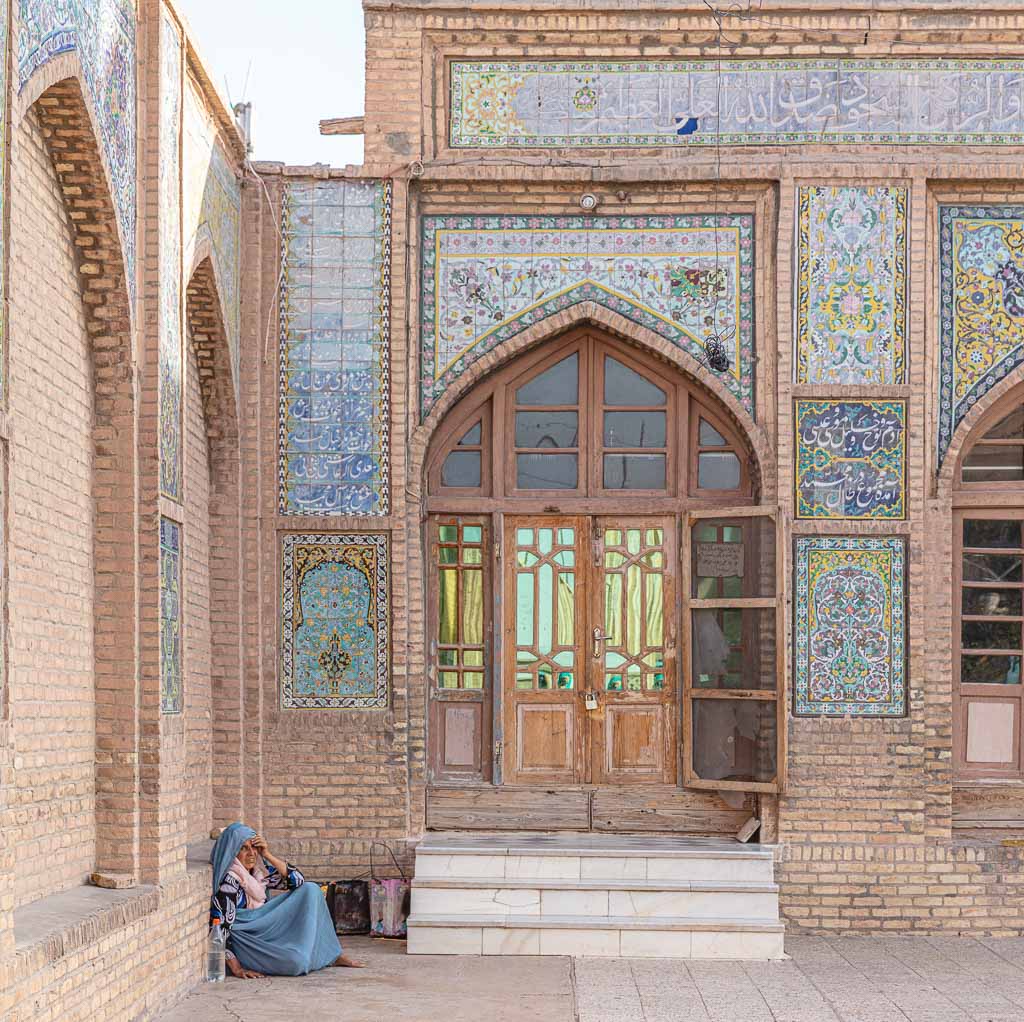
Where To Sleep In Herat
- Budget: Mowafaq Hotel $20/night, double
- Midrange: Kakh Hotel +93 79 982 8245
- Midrange: Herat Bustan Hotel +93 72 879 0132
- Splurge: Nazary Hotel Starting at $90/night, double
How To Get In & Out Of Herat
Kabul, Mazar e Sharif & Kandahar : Herat is quite far from anything else (except the Iran border). Traveling to and from Herat is best done by plane unless you have lots of extra time. A one-way flight will run $90 to Kabul, and to Mazar or Kandahar another $85.
Minaret of Jam: Not easy for comfortable journey, but the bone crunching Central Route connects Herat and Bamyan via the Minaret of Jam. Expect a 12 hour drive between Jam Minaret and another 15 hour drive between the minaret and Bamyan.
Iran : The border at Islam Qala-Dougharoun is currently open to foreigners. This border crossing connects Herat with Mashhad, Iran. There are shared taxis making the run between Mashhad and Herat for 1,100 AFS per seat or 4,400 AFS for the entire car.
Mashhad is about 4 hours from the border and Herat is about 2 hours from the border. I crossed here in March 2019 and found it to be a straightforward process. Read a border crossing report here .
Turkmenistan : Herat is near the border between Turkmenistan and Afghanistan at the Torghundi-Serkhetabat crossing..
There is another border crossing between the two countries, although quite remote at Imam Nazar-Aaqina. Open to foreigners, however, the road is a dirt track and from reports likely will need a 4wd to navigate.

The predominantly Pashtun and largest city of Southern Afghanistan. In late March 2019, I finally visited Kandahar and again in 2021.
It is generally recommended that you have someone with you that can understand and speak Pashto with you in Kandahar as Pashto is the predominant language spoken in the south of Afghanistan. Check out my post: Kandahar in photos & travel guide for more information on visiting southern Afghanistan’s largest city.
What To See In Kandahar
- Mosque of the Cloak of Prophet Mohammed : One of the holiest sites in all of Kandahar. It’s believed that the cloak worn by the Prophet Mohammed during the 621 Night Journey is housed here
- Ahmed Shah Durrani Mausoleum : Sat on the grounds as the Mosque of the Cloak, this is the tomb of Ahmed Shah Durrani, the founder of the nation of Afghanistan
- Chilzina : Meaning 40 steps, this massive staircase climbing up a rocky outcrop on the western outskirts of Kandahar was once attached to a citadel and served as a strategic lookout. Similarly today, it is currently being used as a security lookout. You’ll need to enquire with the commander posted there if he will allow you to climb up
- Mausoleum of Baba Wali : Built to honor a highly regarded tribesman, Baba Wali sits overlooking the Arghandab River. Unfortunately, the frontlines have crept closer to the city and are now only 2 kilometers from Baba Wali, so visiting isn’t recommended as of 2021. But do ask locally once you arrive if it’s safe or not to visit
- Mausoleum to Mirwas Khan Hotak : The tomb to influential Mirwas Khan Hotak, of the Ghilji Pashtun tribe. Don’t miss out on going inside, the colorful paintings on the interior are quite impressive
- Sra Jama : The Red Mosque as its commonly called was frequented by Mullah Omar. In 2021 the mosque has underwent extensive restoration
- Eid Gah Mosque : Located on the north side of the city, Eid Gah is one of the largest mosques in Afghanistan. Largely funded by Mullah Omar, the mosque can house thousands of worshippers at once
- Mosque of the Hair of the Prophet Mohammed : Located in the Old City, it’s believed that the hair of Mohammed is stored here
- Kandahar Museum : Learn more about the history of the city as well as the rest of the country
Check out: Kandahar in Photos & Travel Guide

Where To Sleep In Kandahar
- Budget: Armani Hotel $22 USD/night, dbl (email: [email protected] )
- Midrange: Continental Guesthouse $55 USD/night, double
Getting In & Out Of Kandahar
The fastest way to reach Kandahar is by flight. You can go by road from Kabul via Wardak, Ghazni and Zabul just know that it makes for a long trip in a single day. If going overland, consider spending a day and night in Ghazni City en route to break up the journey.
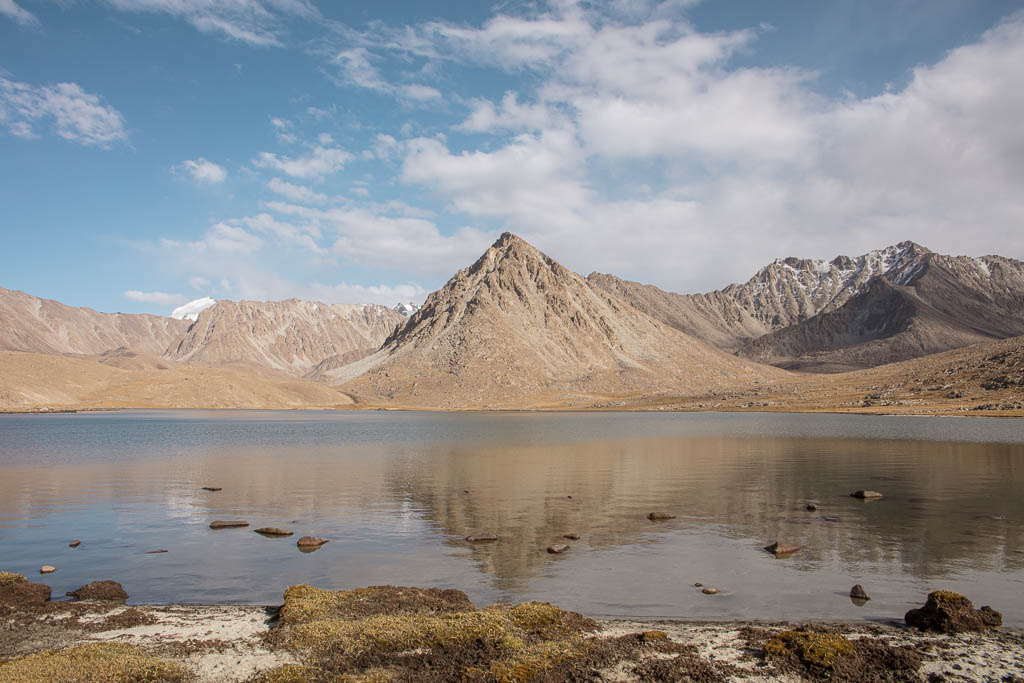
Wakhan Corridor
Most who come to the Wakhan Corridor will trek in the remote Pamir Mountains, many of which will go to meet Kyrgyz nomads that live beyond Sarhad e Broghil near Chaqmaqtin Lake in the Little Pamir.
The Wakhan Corridor for the longest time was considered the only safe region of Afghanistan with little risk to visitors (besides the Afghan colon cleanse or falling off a mountainside).

What To Do & See In The Wakhan Corridor
- Trekking : The Little Pamir, Great Pamir & Hindu Kush Mountains all offer prime trekking climbing
- Meet Kyrgyz Nomads : This small group of people live in the remote Little Pamir and around Chaqmaqtin Lake
- Visit Wakhi settlements : The Wakhi inhabit much of the Pamir Mountains and of course, the Wakhan Valley
- Trek in the Noshaq Valley or summit Mt. Noshaq : Noshaq is Afghanistan’s highest peak at a staggering 7,492 meters. It’s a technical climb. For those just wanting to trek in the area, it’s possible to make the journey to base camp
- Explore the towns and villages along the Wakhan Corridor Road : The Afghan Wakhan is dotted with villages, large and small along this extremity of Afghanistan

Where To Sleep In The Wakhan Corridor
Most will spend at least their first night in the Wakhan Corridor at Marco Polo Guesthouse as they wait for permits to be arranged. There are guesthouses available in Qazideh (Malang Darya’s Family Home), Khandood, Qala e Panja and Wuzed. Most will range from $15-30 USD per night including meals.
Most who visit the Wakhan come to trek, so plan to camp. I recommend bringing your own tent and sleeping bag at least, although guides can usually find one for rent for you if needed.
- Budget: Marco Polo Guesthouse $25 USD/night
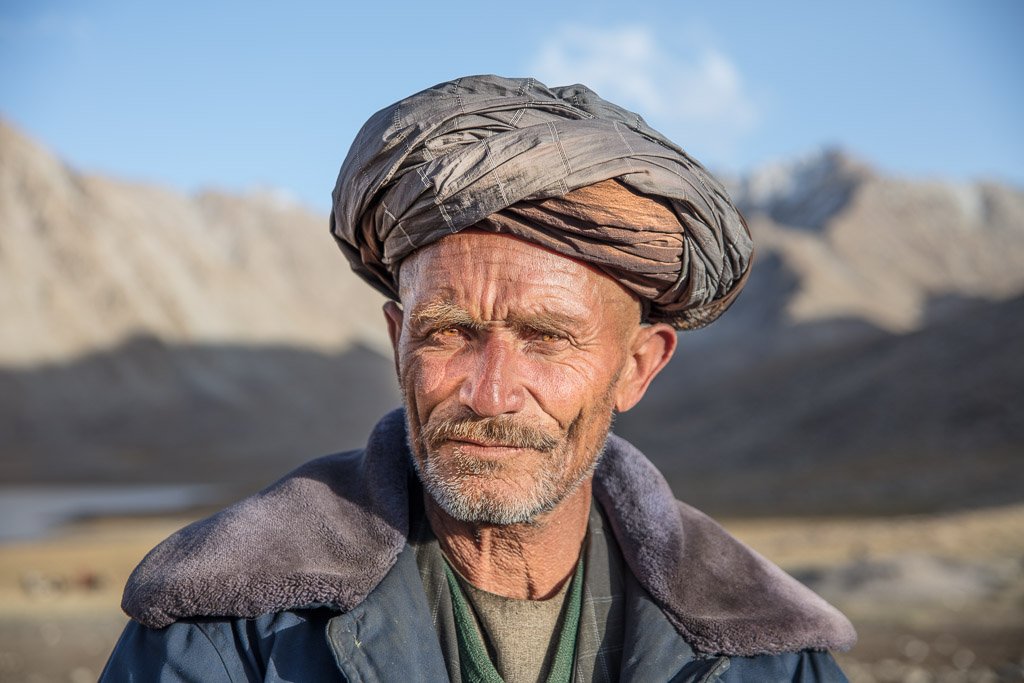
Guides In The Wakhan Corridor
I personally recommend Malang Darya’s company Big Little Pamir Travel. You can contact Malang & his team via their new website Wakhan Adventure or by phone +93 794766067
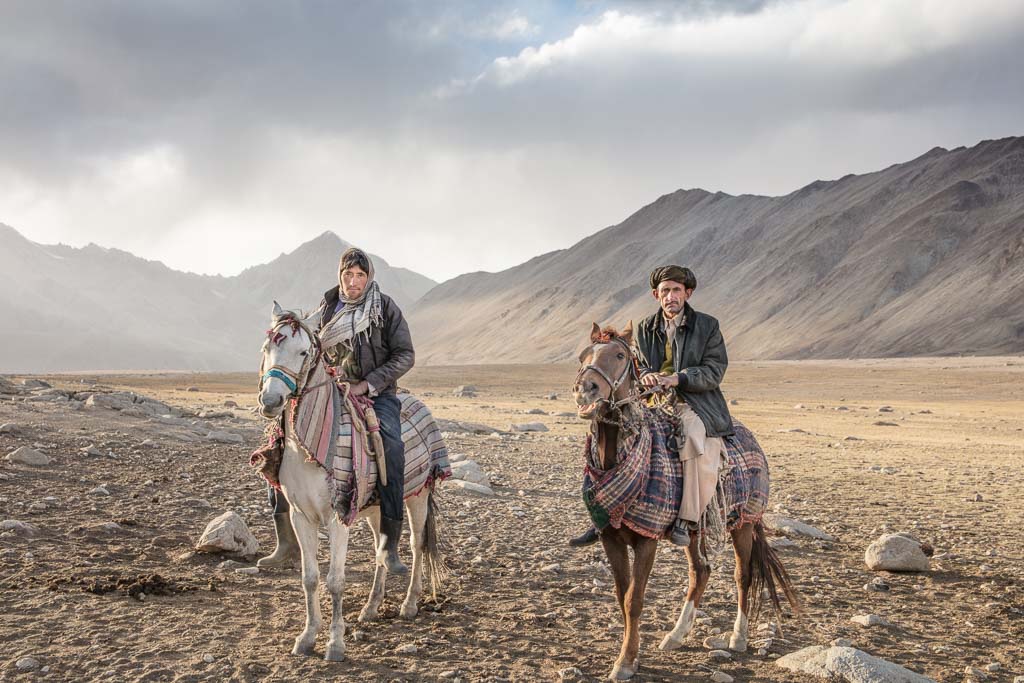
Getting to and from the Wakhan Corridor
The quickest way to reach the Wakhan at present is by entering Afghanistan at the Tajik border at the Shirkhan Bandar Crossing. From there its and hour to Kunduz City, five more to Faizobad and another three hours to Ishkashim.
More Posts On The Afghan Wakhan
- Photos From The Afghan Wakhan Corridor
- What It Was Like To Travel As A Solo Female Through the Afghan Wakhan
- Tajikistan-Afghanistan Border Crossing At Ishkashim
The only reason you will likely find yourself in Kunduz is if you are either coming from or leaving towards the Tajik border or heading toward the Wakhan Corridor and/or Badakhshan Province from elsewhere in Afghanistan.
There isn’t much in way for traveler to do and see in Kunduz, most of the province is comprised of undulating hills, important to the nation as an agricultural region being nicknamed “the hive of Afghanistan” owing to it grain, wheat, and millet production.
If passing through Kunduz, you will almost certainly go through Kunduz City, the provincial capital with a busy city center. Most travelers, if coming from Tajikistan, will need to visit the Ministry of Foreign Affair s for an approval stamp on your passport (located at 36.711904, 68.867458).
You will see a fortress on the northside of the city, though this looks top now be used as a military garrison these days.
Where to Stay and Eat in Kunduz
You will most likely will not spend any time in Kunduz, but there are a few chaikhana restaurants serving up typical Afghan fare (breakfast kebab, anyone? True story) around the city center and very basic guesthouses to choose from.
If you are looking for more amenities (such as A/C) it would be best to head west toward Mazar e Sharif and spend the night there but it is a 5 hour drive away.
Baghlan, similar to Kunduz is mostly a place travelers end up coming from the Tajik border via Kunduz and will either continue toward Mazar e Sharif or Kabul from the bustling provinicial capital city of Pul e Khomri.
That said, parts of Baghlan you’ll pass through are quite scenic, with verdant rice paddies filling otherwise arid valleys.
Minaret of Jam
The Minaret of Jam is finally possible to visit once again, though it’s not the most pleasant journey to reach. It’s also a place that you have to want to visit as it’s not really a place you would just be passing by on your way elsewhere.
Dating back to 1190, the Minaret of Jam is one of the best remaining pieces of Ghorid architecture left standing (albeit leaning over) inscribed with Kufic and Naskhi scrips. It sits at what was once the capital of the Ghorid Empire onthe shores of the Hari River, a city named Firuzkoh (meaning turquoise mountain).
How to get to and from the Minaret of Jam
From Bamyan town you will need to make a 9-10 hour drive on rough roads beyond Yakawlang to reach Ghor City and from Ghor City it will take another 4-5 hours to reach the Minaret of Jam.
If approaching from Herat, expect 12 hours on worse roads than those coming from Bamyan to reach the Jam Minaret.
There is public transport that goes through this central route road, but as this is used by people to get from one place to another you will need to know where to get out and walk the remainder of the way.
Because of the poor road conditions you may want to opt to hire a 4WD vehicle from either Bamyan Town or Herat. Expect a fee of around $75 USD per day, guesthoues can usually help you make arrangements.
Where to Stay at the Minaret of Jam and in Ghor City
Just next to the minaret a camp has been established where you can spend the night now, though everyone I encountered said the only months it’s warm enough for this June-August.
If planning to spend the night in Ghor City, before and/or after your visit, there are a handful of guesthoues, usually upstairs from a restaurant. Don’t expect any frills, but they’re cheap places to lay your head for a night.
Wardak isn’t popular on the Afghanistan tourist track, but you may find yourself passing through here from Kabul to Bamyan or Kabul to Ghazni.
The capital, Maidon Shar is a bustling bazaar town, but is still quite small- I wouldn’t say a destination in of itself.
Aside from the passersby, some may consider trekking on the south facing slopes of the Koh e Baba as the range does form the border between Wardak and Bamyan Provinces.
Ghazni is a province with a lot more than I bargained for to explore to be honest.
Most will do a day trip from Kabul to Ghazni City where the main sights include the two Ghazni Minarets and the Ghazni Citadel. The bazaar is also worth a wander and does feature a couple of shops selling antique (and newer versions) jewlery and Hazaragi dresses and bags.
One other spot to explore is what everyone refers to as the “Military Museum” which is mostly just a scattering of broke down old tanks and a downed helicopter strewn along the banks of a dry river bed near the university.
Aside from Ghazni City, the area of Molistan, flanked by mountains, is a beautiful place to visit.
Hot and sweaty- this is my main memory of Jalalabad- I would not recommend a summer visit. Not to miss en route from Kabul is the massive Surobi Reservoir.
That said, there is quite a bit to see in Jalalabad including
- Hada Museum
- Daroonta Dam (near the city)
- The Mausoleums of King Amanullah Khan, Mohammed Gul Khan Momand, and Abdul Gaffer Khan
Most travelers will pass through Laghman on their way toward the Pakistani border post of Torkham from Jalalabad to Peshawar or those heading towards Nuristan.
The northern stretches of Laghman Province are more mountainous and there is one route not too far west of Jalalabad that heads into the northern reaches of the province and eventually across the border to the village of Du Ab in Nuristan Province.
You will enter Kunar from the south from Jalalabad with a nicely paved road extending all the way to the provincial capital of Asadabad (this drive takes about 3 hours).
Most of the province features hot and very humid weather in comparison to the rest of Afghanistan but the drive is scenic with a flooded river valley dotted with rice paddies and terraced villages.
As you approach the northern stretches toward the border with Nuristan the air dries out and the temperatures cool once again.
The land of light, Nuristan- I couldn’t have come up with a better name myself.
Nuristan features a unique population that shared a lot in common with the inhabitants of the Kalash Valleys in Pakistan nearby, but the local population was forcefully (see violently) converted to Islam long ago.
The provincial capital is Parun which is a long bumpy ride from Asadabad over in Kunar Province of about 7 hours one way. Parun features several villages and side valleys to explore, even a cricket pitch that requires a 45 minute hike through the forest to reach from the main and largest village of Parun.
Another area worthy of exploring is Kamdesh, which is reachable in a shorter amount of time and on a better road from Asadabad via a scenic little area called Nari.
There is also a road to Du Ab Village from Laghman Province which can eventually connect you to Panjshir via Nuristan.
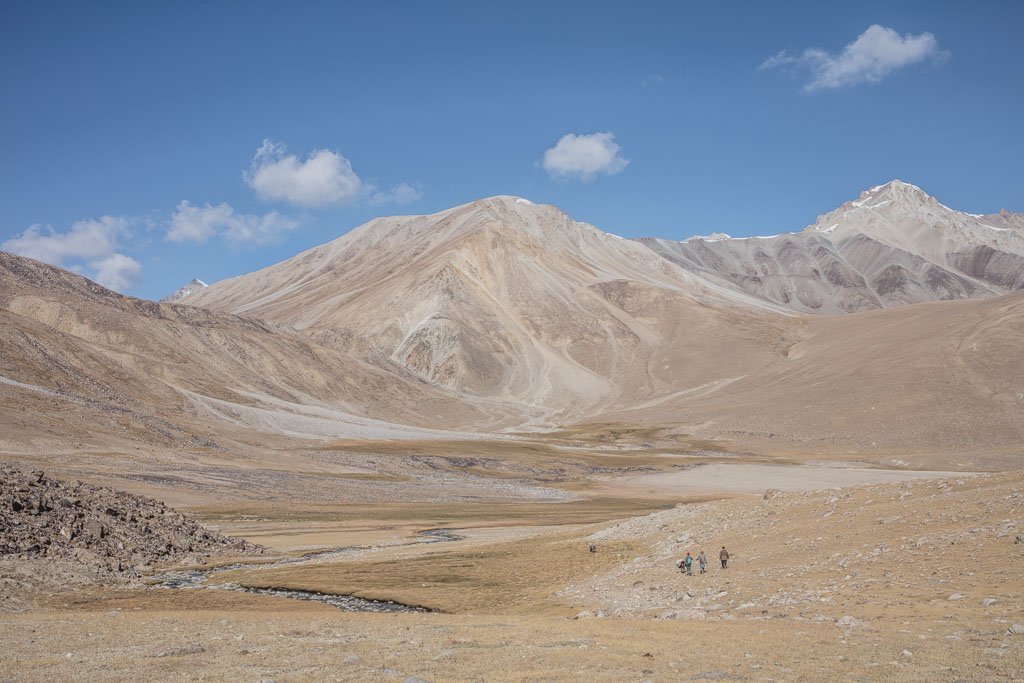
Trekking In Afghanistan
Afghanistan has epic trekking potential from the staggering peaks of the Wakhan Corridor, to the forested mountains of Nuristan, lush and almost subtropical feeling Kunar, the beautiful peaks of Bamyan’s Koh e Baba range, to the Kabul surroudings and the Panjshir Valley.
Most trekkers should head over the border from Tajikistan to explore the Pamir and Hindu Kush Mountains in the Afghan Wakhan. Popular treks in the Wakhan include the trek to Chaqmaqtin Lake in the Little Pamir, treks into the Wakhi Great Pamir, and the trek into Noshaq Valley.
In the ‘Mainland’ of Afghanistan has heaps of trekking potential but so much has been unexplored. Most established would be the Shah Foladi area of Bamyan and in the Panjshir Valley. If wanting to trek around these areas you should definitely contact an experienced local guide to help plan and guide you there.
Nuristan hosts countless trekking adventures and even a possibility to connect with Badakhshan via Jaa Valley.
Kunar, Laghman, Daykundi, and Paktia all stand to be great trekking destinations though expect to be following shepherding trails.
Check out all of the hiking possibilities in Bamyan Province

Afghan Holidays & Festivals
- Independence Day
- Ramadan & Eid al Fitr
- Mavleed al Nabi
- Eid al Qurban
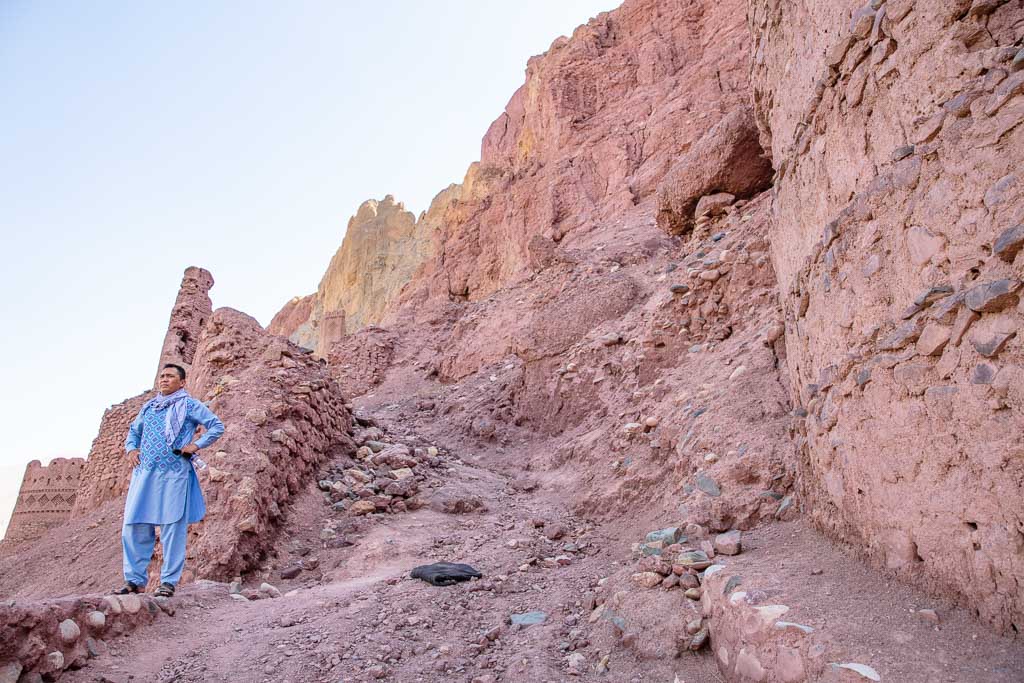
Tour Operators & Guides
Mainland Afghanistan : Let’s Be Friends Afghanistan – Noor started the company in 2015 with his colleague Sakhi and guides along with his brother Mahdi. Noor, Sakhi & Mahdi are both knowledgable and professional.
Wakhan Corridor : Big Little Pamir Travel – Malang and his team are experts on the Wakhan, Hindu Kush, and Pamir region and will put together some unforgettable itineraries.
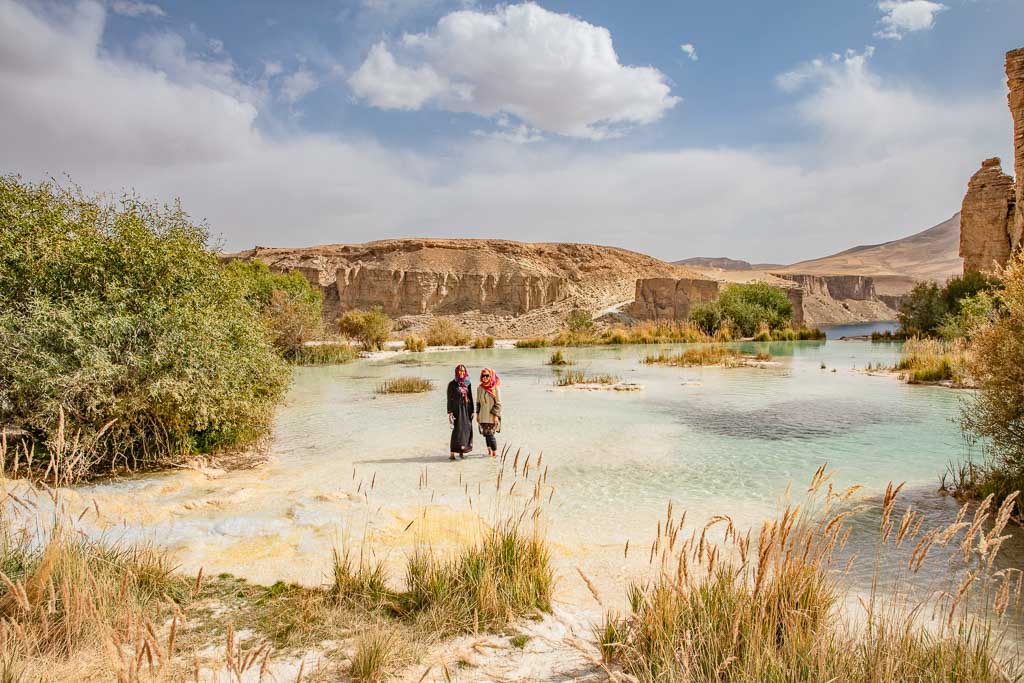
Afghanistan Travel Budget
Afghanistan isn’t necessarily that expensive once you’re there, but what really will hit you in the wallet is the flights you’ll need to take between cities at $50-100 USD a pop.
Afghanistan’s security situation is fairly unstable and things can change in an instant, so it is recommended to spend the extra cash to travel with a local guide or at very least know locals that can update you on the constantly changing situation.
$60 USD Per Day
Traveling independently, using public transport within cities, flights between cities, staying at guesthouses, and eating at local eateries
$110 USD Per Day
Traveling with a guide, car hire within cities, flights between cities, midrange accommodations, and a combination of local eateries and finer restaurants
$200 USD+ Per Day
Traveling by guided tour, private car hires within cities, flights between cities, higher-end accommodations, and eating at finer restaurants when available
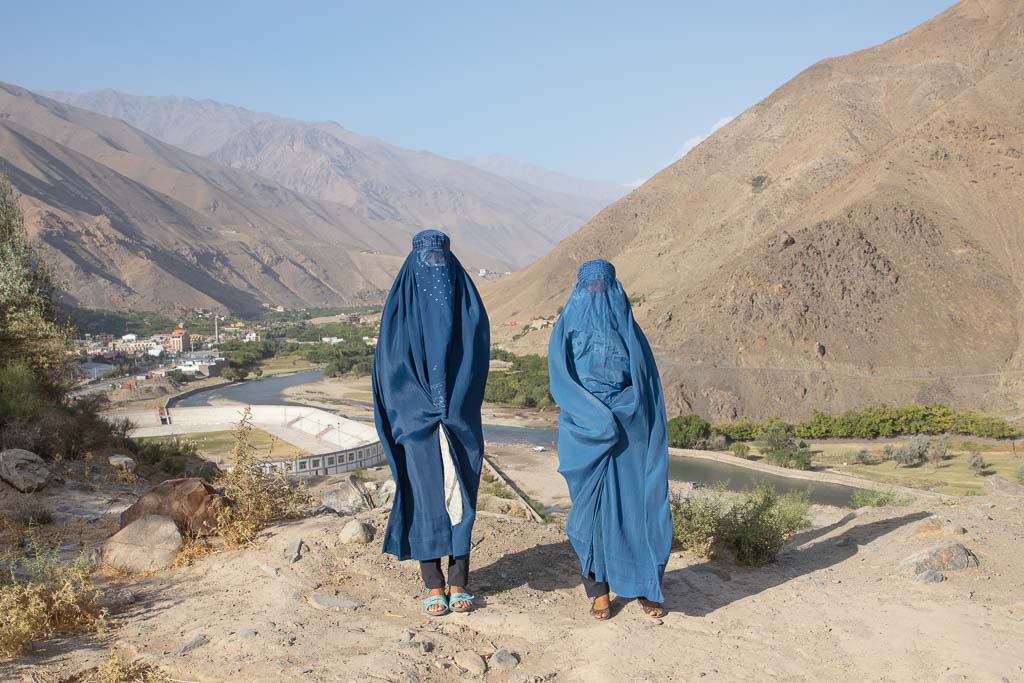
Packing List
- External battery pack – You never know when insurgents or suppliers will cut power in Afghanistan. Very handy in the Wakhan and places where electricity may be non-existent in areas
- Solar charger – To keep electronics charged in remote areas
- Comfortable Walking Shoes – I know some may opt for trainers, but my favorite shoe for milling about is the Isabella Flat that Crocs makes (don’t laugh)
- Hiking Boots – Necessary for those headed to the Wakhan Corridor or other trekking destinations. My personal favorite is the La Sportiva Nucleo High GTX hiking boot
- Inreach Explorer+ – GPS & SOS beacon, that can also send and receive text messages. Delorme/Garmin offers good monthly plans. Great for emergency situations and remote areas
- Water Purifier – I personally use the Katadyn water filter . Tap water in the entire country is unsafe for drinking and natural water sources can be contaminated.
- Headlamp – Useful for the intermittent power outages
- Sunscreen – The sun is pretty intense in summer
- Prescription & Over the counter medications

There are not many guidebooks on Afghanistan, let alone anything up to date. But here are a few that may prove insightful and interesting.
- Afghanistan: A Companion & Guide – Packed with info on Afghanistan and its history with photos.
- A Historical Guide to Afghanistan – Granted Nancy Dupree did write this book in the 70’s it’s still a fascinating read even if it’s not up-to-date as far as current events in Afghanistan go.
- Lonely Planet Afghanistan – LP hasn’t put out one of these bad boys since 2007, but handy nonetheless.
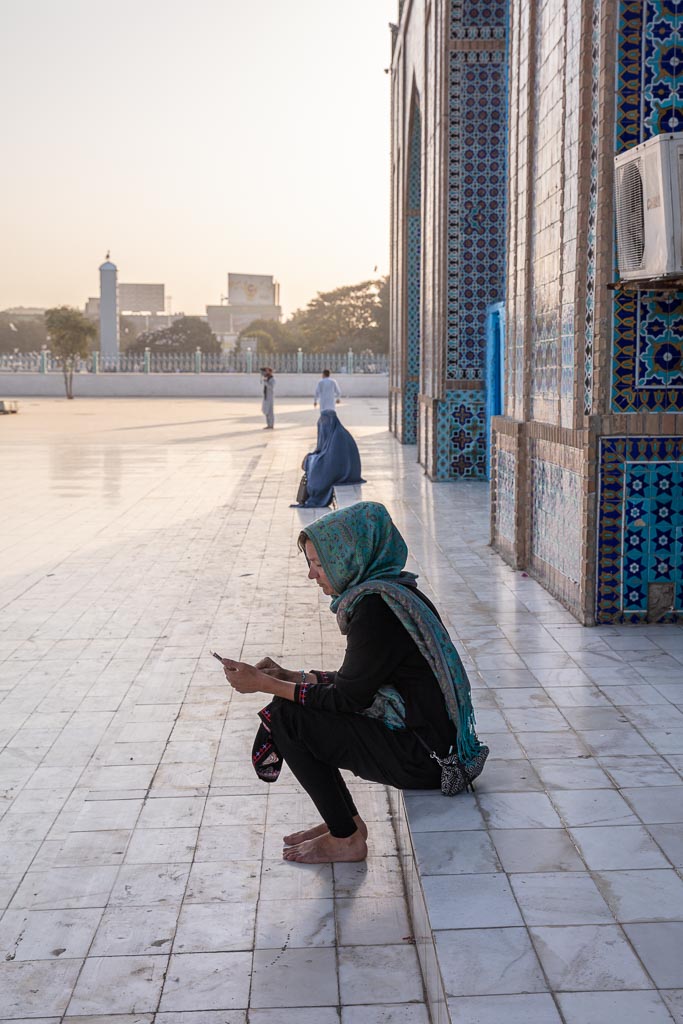
Internet & Mobile In Afghanistan
You’ll find that Afghanistan is surprisingly well-connected given its situation.
WiFi is available at many hotels in Afghanistan, though the speed and quality of your experience can vary widely. I was pleasantly surprised that every hotel and guesthouse I’ve stayed at in major cities had WiFi that functioned most of the time. With that said, don’t expect to find WiFi in smaller towns, the Wakhan Corridor, or more remote destinations.
SIM cards and top-up cards are available throughout the country and are cheap. Roshan, Afghan Wireless, Etisalat and MTN are the companies you’ll come across in Afghanistan.
I have a Roshan card and it’s worked all over the country, including some of the main villages in the Afghan Wakhan. Note that in the Wakhan Corridor that depending on where you’re at and if very close to the Tajik border you can sometimes get reception on Tajik T-Cell and MegaFone SIM cards.
Prices for SIMs with some credits on them are typically around 50 AFS. Prices for data can range from 150-350 AFS per GB. I’ve personally found Roshan and Afghan Wireless to typically be the cheapest options.

Health & Safety
As you guessed it, Afghanistan is neither a safe or ‘healthy’ destination to visit.
In terms of security, Afghanistan is the most secure it has been in decades, that said, it was very much traded for human rights in a sense. I still would not go to say Afghanistan is a safe destination.
Consider Hiring A Guide
Hiring a local who’s in the know on security situations and can help you with the ins and outs of travel in Afghanistan is greatly helpful. I personally recommend Mahdi and Liaqat of Let’s Be Friends Afghanistan .
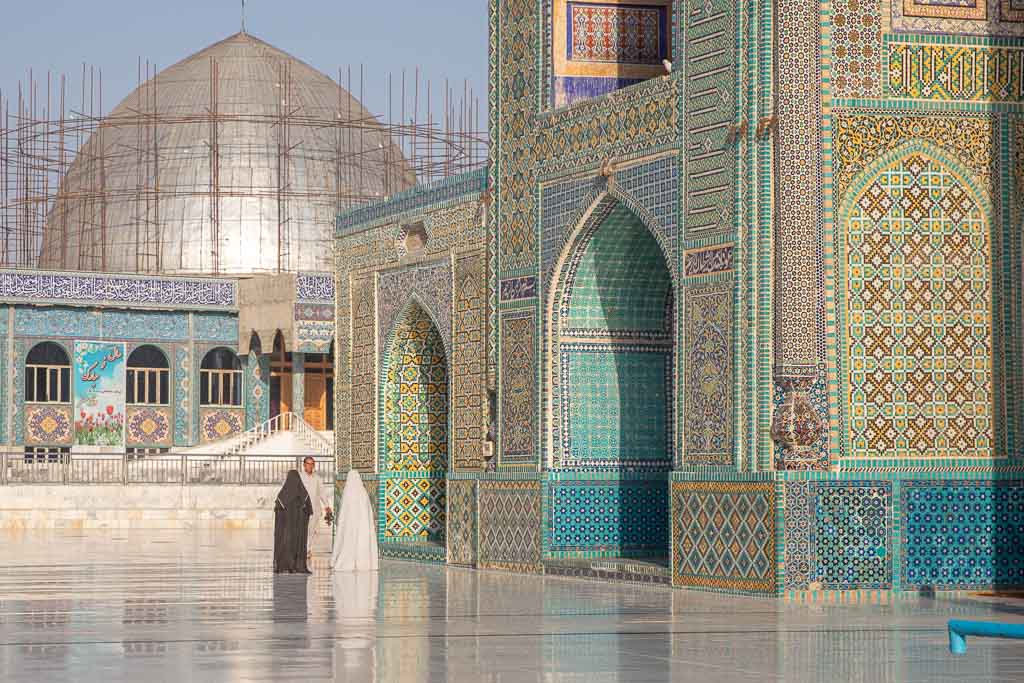
Dress Like An Afghan
Trying to look like a local is most definitely recommended to avoid standing out in a crowd. Afghans are a much more diverse lot than you may have expected– you will see some people with nearly every shade of hair color and eye color. Dressing the part will definitely help you blend in.
On the topic of blending in- do try to speak quietly if you’re speaking English or whatever native language you speak at home when out and about in public, especially on public transport. People do get paid by the Taliban to turn people in, so to avoid someone setting up troubles ahead it’s best to keep your foreignness cloaked well.
Don’t Tell People Where You’re Staying Or Where You’re Going
This goes along with the above-mentioned speaking quietly. It’s best not to tell strangers where you’re staying or where you’re headed next, someone could arrange trouble for you ahead.
Afghans are curious in nature and many are just kind people– but it’s best to give vague answers I’ve found to not be rude but also not divulge any useful information.
Change Up Your Routine
I learned this one back when I was traveling in Yemen . Don’t have the same daily routines in any place you visit. Say you walk to the Blue Mosque each day when you’re in Mazar- take a different route each time.
Avoid going to the same places at the same times each day for the same reasons I’ve covered above.
Know Which Embassy or Consulate To Turn To
In the event that you need help know which consulate or embassy can help you. Some countries have representation in Afghanistan while others do not. If your country falls into the latter category, know which country can help you in the event you need it. Check out who has diplomatic representation in Afghanistan here .
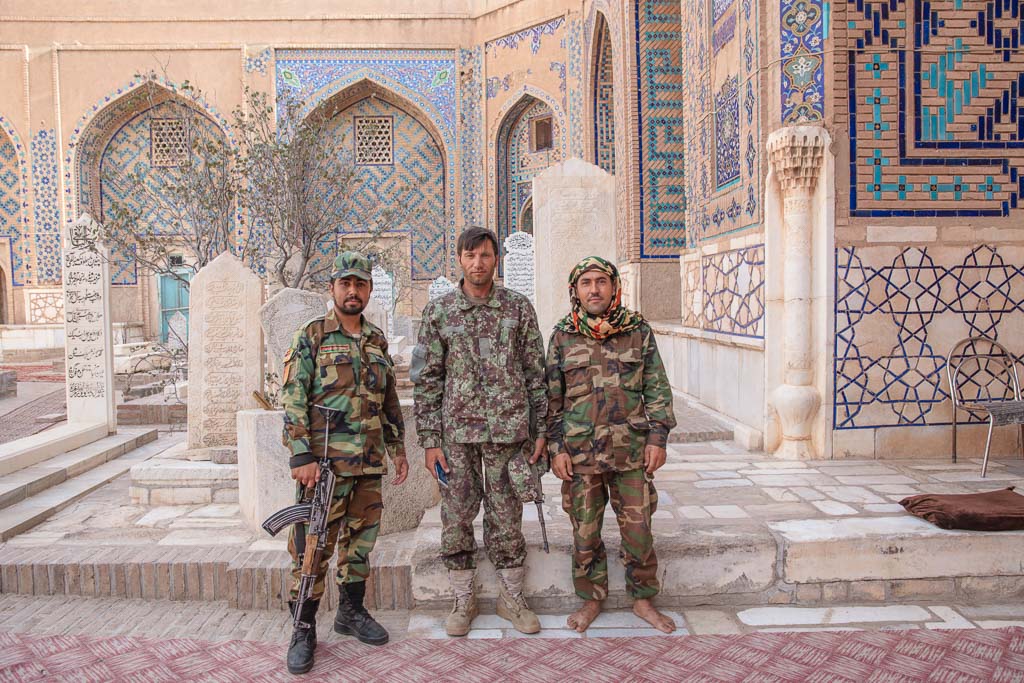
Cooperate With Police
You’ll likely encounter police and/or military checkpoints traveling in Afghanistan, especially if any portion of your trip involves going overland. Sometimes they may not let you go into an area (and typically for good reason), and sometimes they will search your car and bags- just go with the flow and all will usually be fine.
Healthcare is pretty grim in Afghanistan aside from the couple of hospitals and complexes that cater to aid workers and NGOs. It’s highly recommended to take out an insurance policy that covers your travel in Afghanistan and can evacuate you to another country if medical treatment is needed.
Food & Water
Probably the most likely culprit to put a cramp in your Afghanistan travel. Hand washing is a huge deal in Afghanistan. Always wash your hands before meals.
However, sanitary conditions are not of the highest standard and tap water is as an Afghan friend put it ‘deadly’. Good rules to follow are: only drink bottled or purified water, only eat steaming hot foods and avoid ice. Do I personally follow them? Eh, not really.
I can say I did not get sick once on my second trip to Afghanistan. Even eating ice cream and literally every dish warm or cold that sat in front of me. On my first trip I did eat something that wreaked havoc on my insides for about a day.
No special vaccines outside the standard vaccines are recommended for Afghanistan travel. Make sure you are up to date on your vaccines prior to departing.
Afghanistan is a dusty place period no matter where in the country you are. Bring allergy meds with you to help cope with the generalized dustiness you’ll experience traveling Afghanistan.
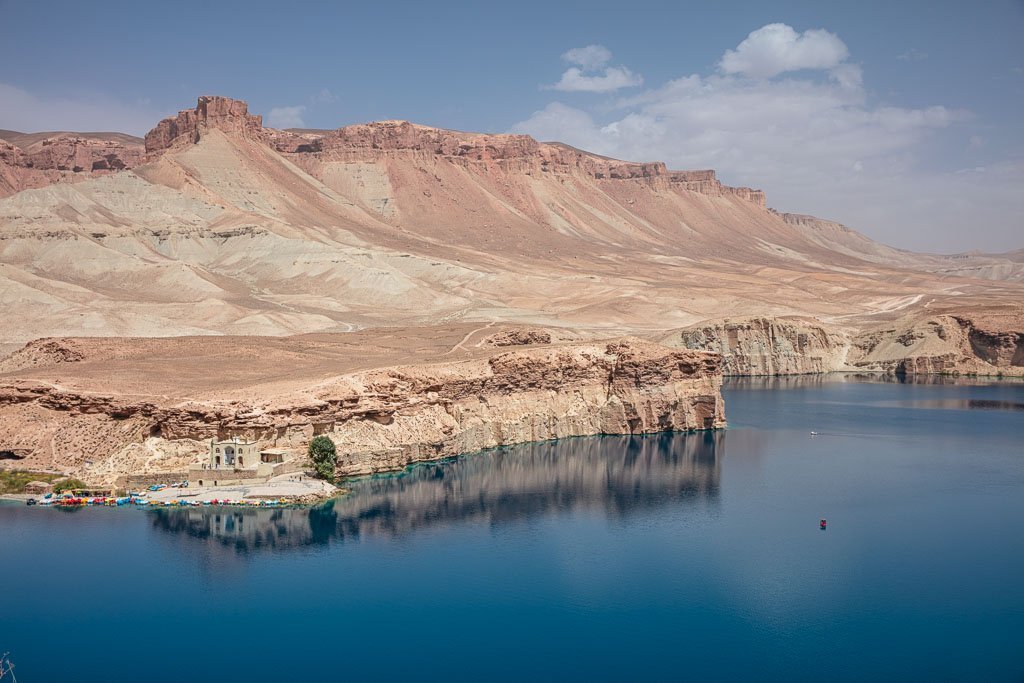
Have Any Questions Not Answered In This Afghanistan Travel Guide?
Ask any of your Afghanistan travel questions in the comments below!
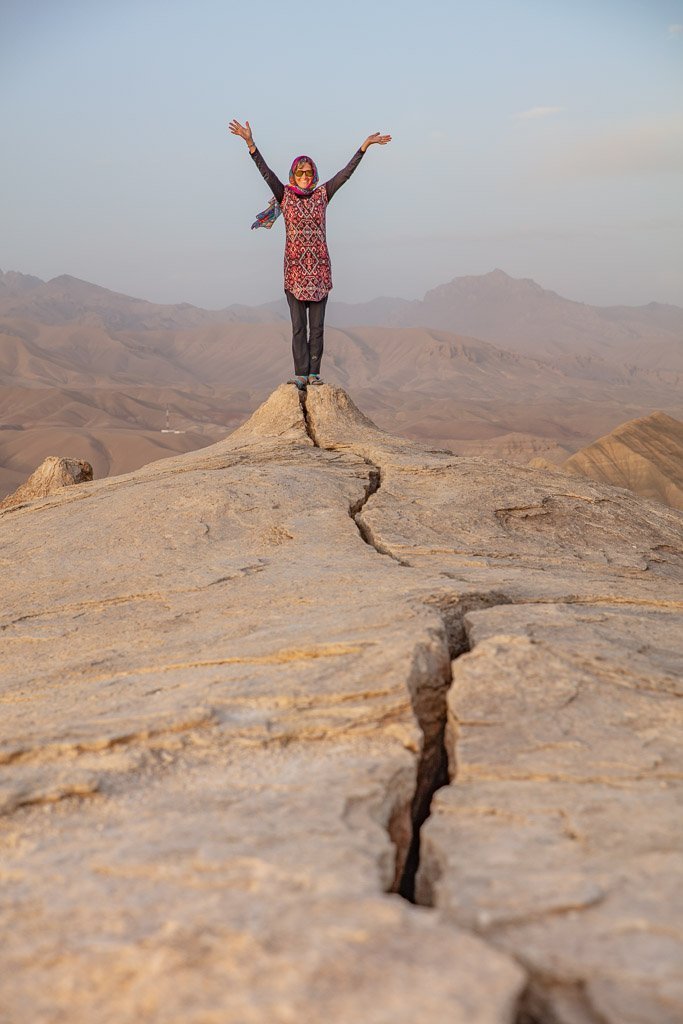
More Posts from Afghanistan:
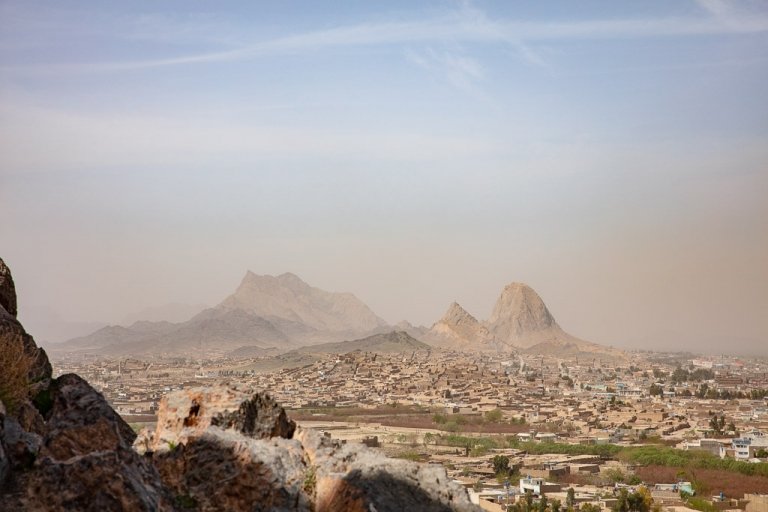
Kandahar In Photos & Travel Guide

Ishkashim Border Crossing Between Tajikistan & Afghanistan

Crossing The Uzbekistan-Afghanistan Border At Hairatan
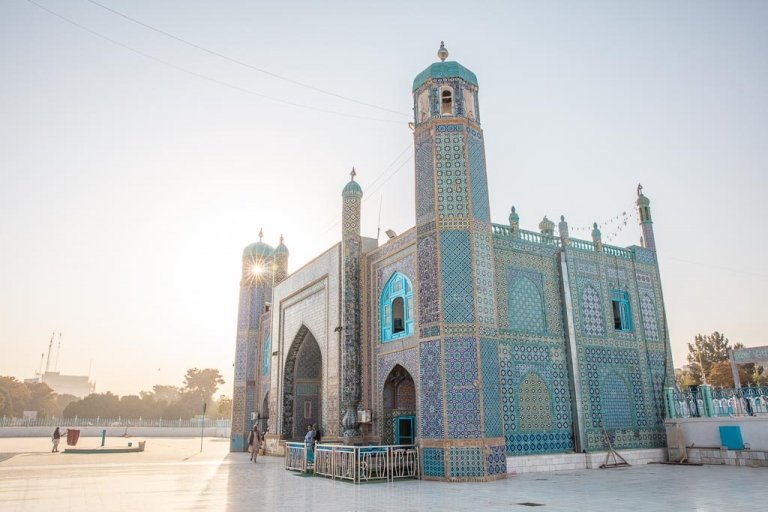
A Beginner’s Guide To Central Asia Travel: Discover The Silk Road
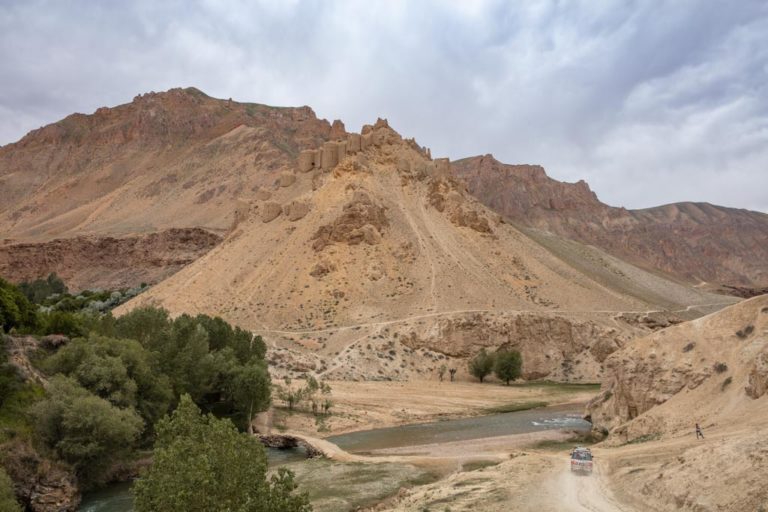
Bamyan’s 40 Tower of Chehelburj, Afghanistan
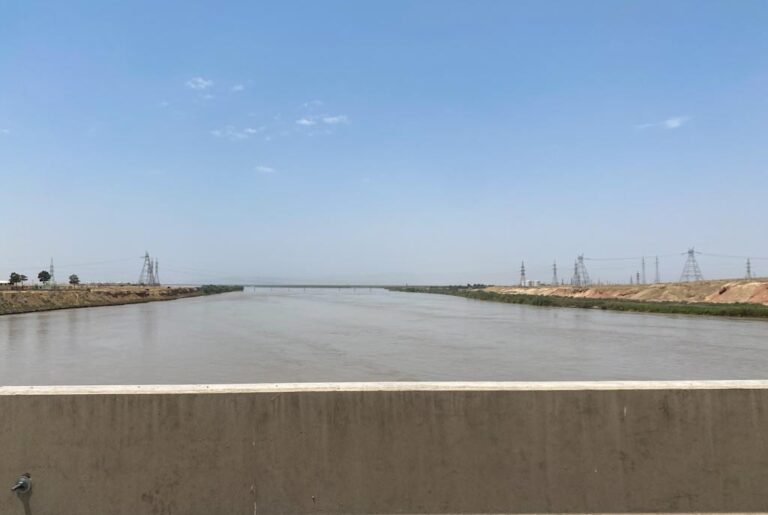
How to Cross the Shirkhan Bandar Border Crossing Between Tajikistan & Afghanistan and get an Afghan Visa on the Border

A Day Trip To Takht e Rustam, Afghanistan
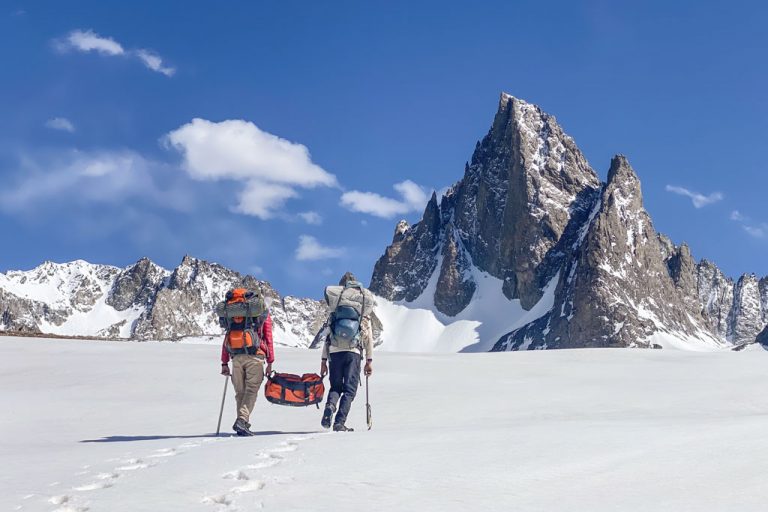
A Guide to Trekking in Bamyan, Afghanistan

Photos From The Wakhan Corridor, Afghanistan
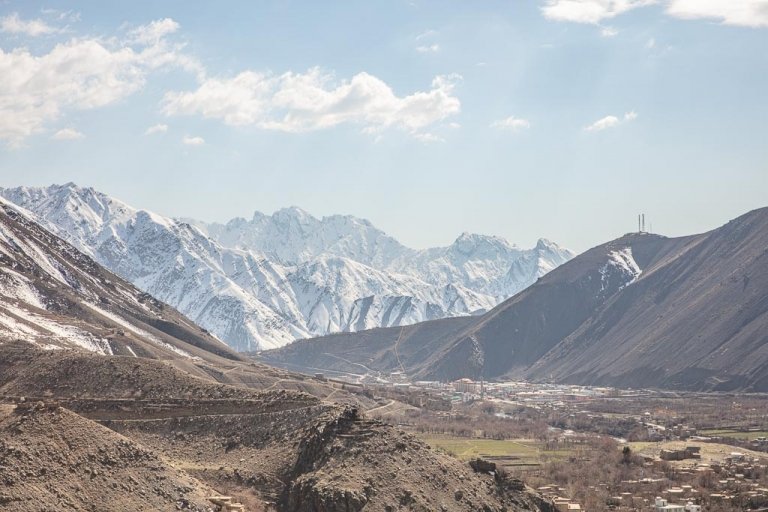
Visiting The Beautiful Panjshir Valley, Afghanistan

Bamyan Travel Guide

Getting High On Balkh: Old Walls, Blue Tiles & Hash
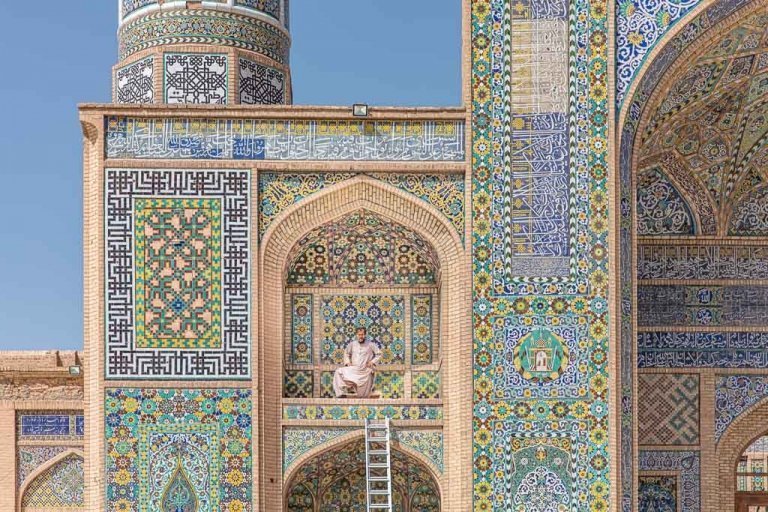
Herat Travel Guide + Photos

Ishkar & Ceramics in Istalif, Afghanistan

Starry Nights & Chaikhana Floors: A Journey Through Daykundi, Afghanistan
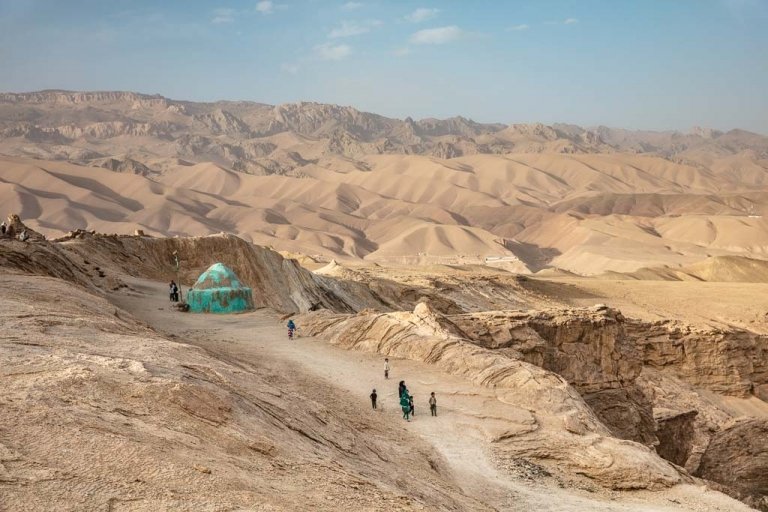
Dara e Ajdahar: The Dragon Valley, Afghanistan

Shahr e Gholghola: Afghanistan’s City Of Screams
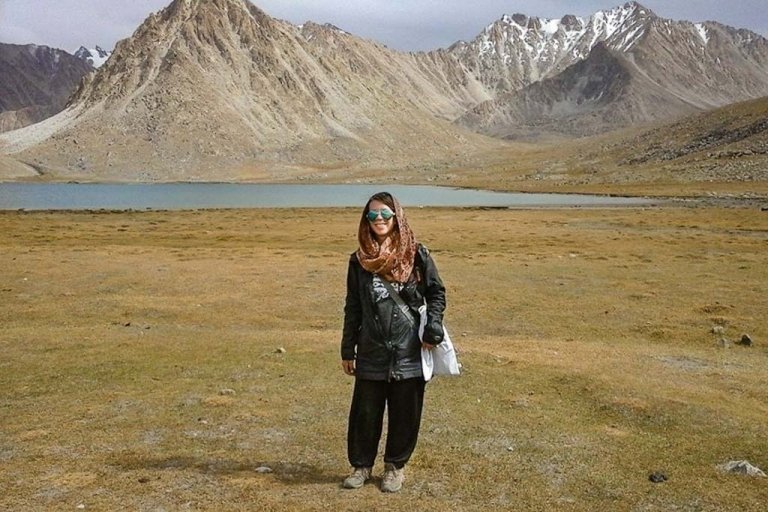
Female Travel In The Wakhan Corridor, Afghanistan
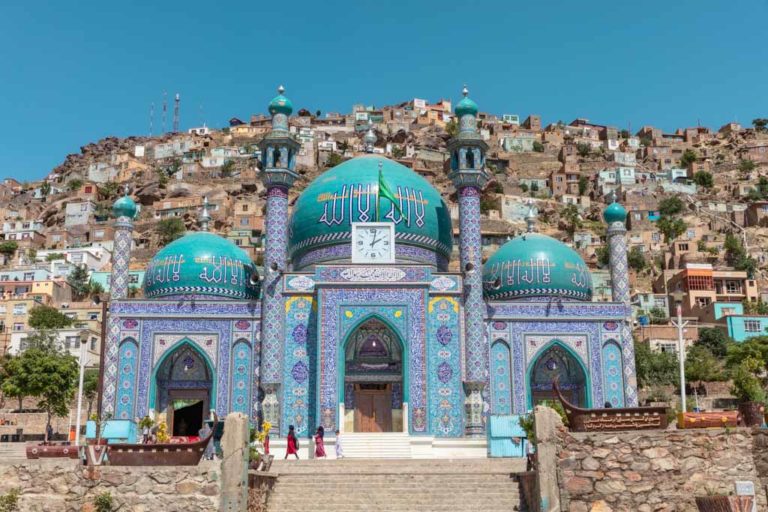
Kickin it in Kabul, Afghanistan

Lunar Landscapes & Lapis Lazuli Lakes Of Band e Amir, Afghanistan
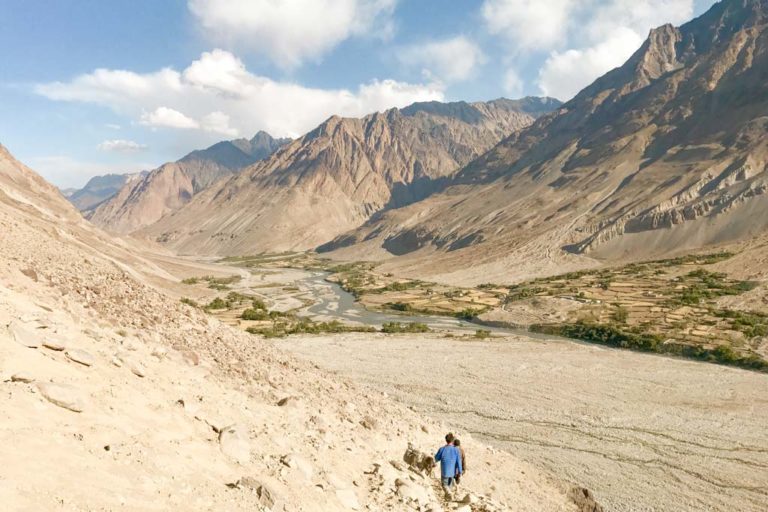
How To Get An Afghanistan Visa
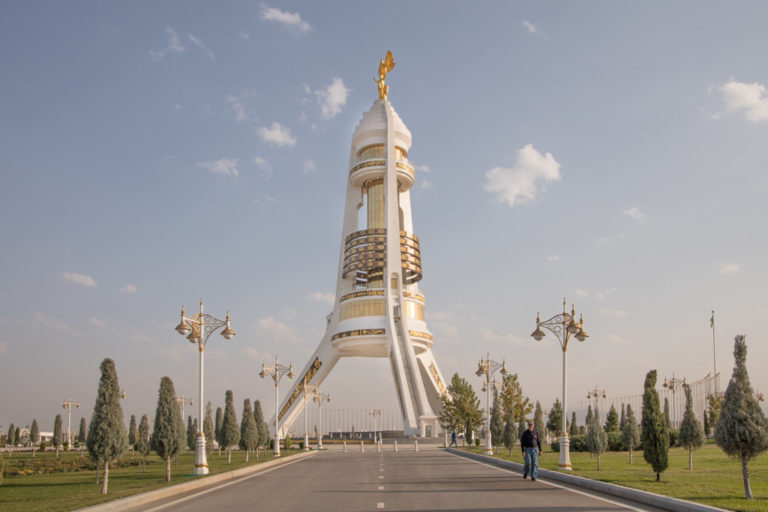
A Simple Guide To Central Asia Visas
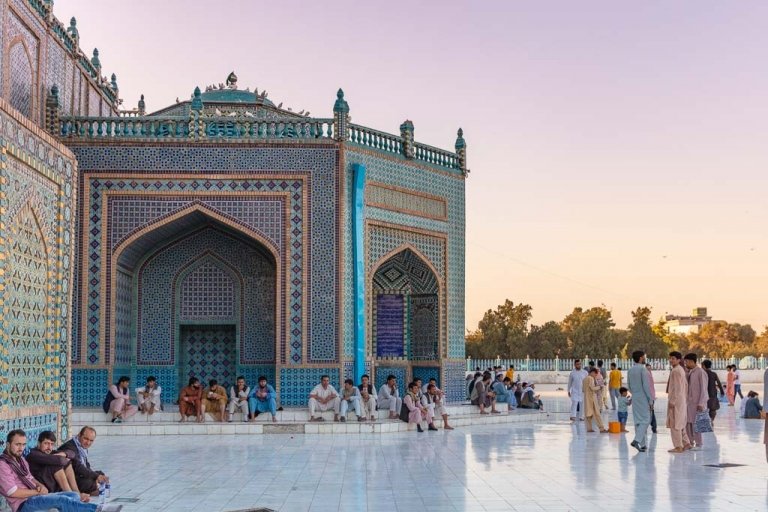
Mazar e Sharif In Photos & Travel Guide

Afghanistan-Iran Border Crossing At Islam Qala/Dogharoun
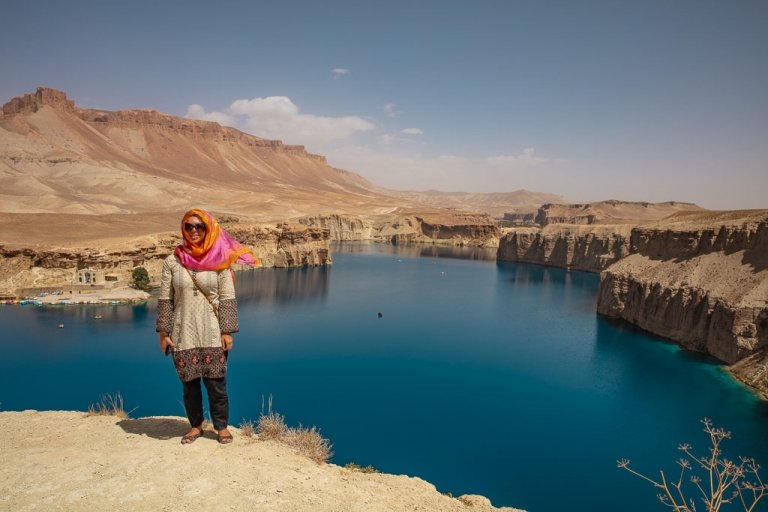
What It Was Like To Travel As A Woman In Afghanistan
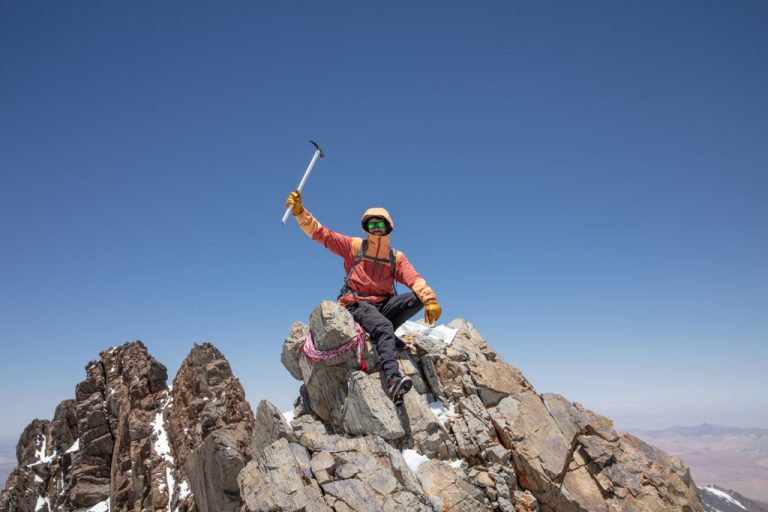
Climbing Shah Foladi, Afghanistan
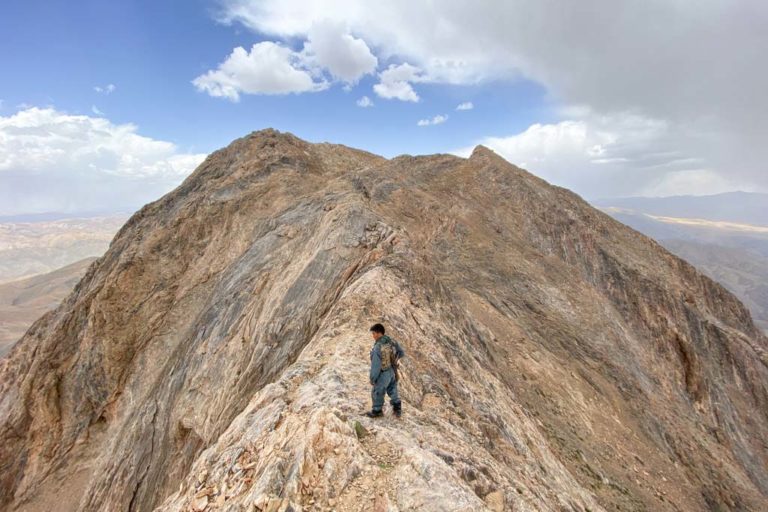
Caught in an Electric Storm on Koh e Mekh in Bamyan, Afghanistan

Shahr e Zohak: Afghanistan’s Red City

Afghan Wakhan & Zorkul Trekking Expedition
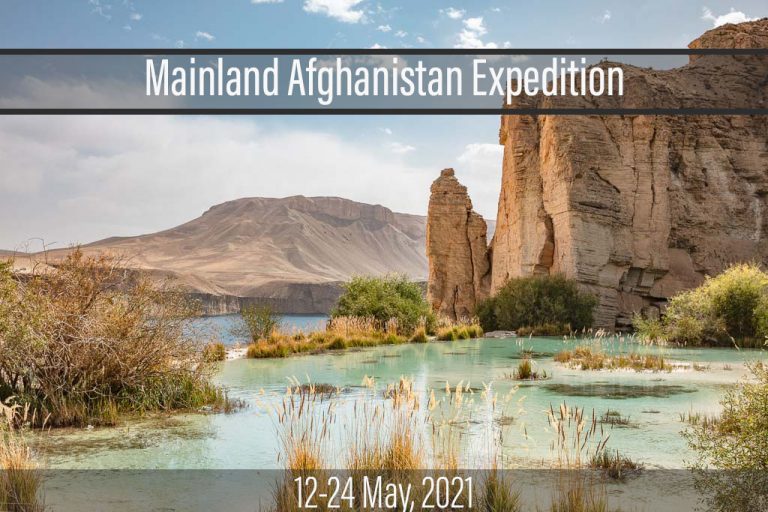
Afghanistan Tour: Cultural Highlights, Epic Cities, & Hindu Kush Trek

Two Dames Went On Vacation To Afghanistan
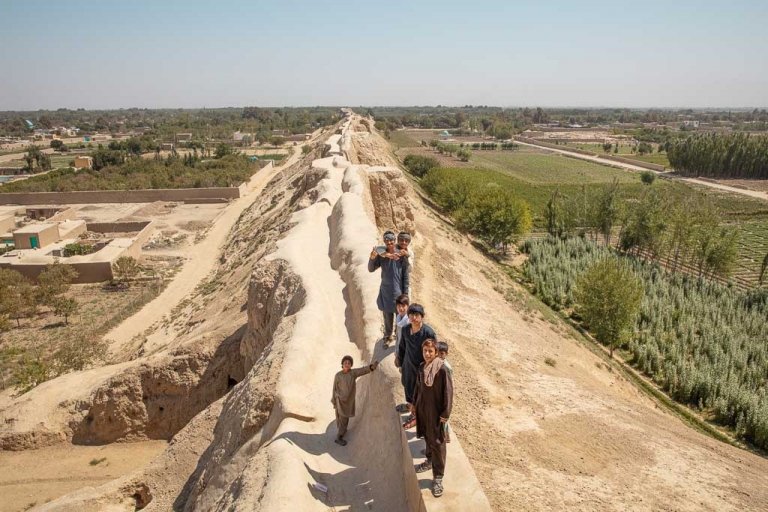
Marco Poloing Around: The Long Way to Italy, Via Afghanistan
13 thoughts on “afghanistan travel guide”.
Very descriptive and helpful. Big and brave heart you have. You made me interested in this strange and far away country. Can you tell me whether you have tour guide all the time with you or it was partially (at some points of your trip) ? May be helpful for possible travelers. Thnx
Hi Zoran, I have done both over time. It is completely possible to travel independently right now, but having a guide can help with language barriers and such.
This guide is so detailed and definitely inspires me to go to Afghanistan. Thanks for sharing!
Thank you, Agnes, glad to hear that. I hope you get to visit!
Was fun reading seeing the pictures and reading about trip. I visited Afganistan for a short time in 1964. We were two young woman in our early 20’s travelling together. We visited Kabul and then by bus via Kandahar to Iran. Quite an adventure. Also I believe it was safer to travel then. We dressed in skirts and shirts and did not cover our heads…. We never had any trouble and as I remember, people were also very nice to us.
Hey Julie, I bet that was an amazing whirlwind of a trip. When I’ve met people that were able to visit in the 60s and 70s I’m always a bit jealous that you got to see and experience what you did there! I do have a friend that I met a few years back that went on a similar trip in the late 60s or early 70s (I can’t remember off the top of my head at the moment) as part of her bus journey from London to Kathmandu. I just love listening to her stories. I bet you girls had some wild adventures on that trip. Hope all is well!
Going to Visit Afganistan next week as I don’t know much about it so I was looking for a blog to know the best things to there thanks for this information. As Know I know What to do there.
Wow Nicole, So many photos in this post that I’ve never seen on you Instagram where I first heard about you. I live in Iran and very much would like to go to Afghanistan one day.
Thank you for this huge pile of useful info!!! I’ve been dreaming to visit Afghanistan one day.
We hope it will re bust again in future.
Me too, it’s great to be back there
I am dreaming of traveling in Afghanistan. Great travel guide.
I hope you make it there one of these days! Afghanistan is such a special place… but the only bad part is I’ve found after visiting you just dream about it more than you did before you went! haha
Leave a Comment Cancel Reply
Your email address will not be published. Required fields are marked *
Notify me of followup comments via e-mail. You can also subscribe without commenting.
This site uses Akismet to reduce spam. Learn how your comment data is processed .

7 Things To Do in Afghanistan [Best Places to Visit in Afghanistan]
Most people know Afghanistan as the war-torn country due to the conflict between the U.S. Government, the Al Qaeda group and the Taliban government that protects it. Afghanistan has especially been the center of news reports after the 9/11 attacks that shook the whole world.
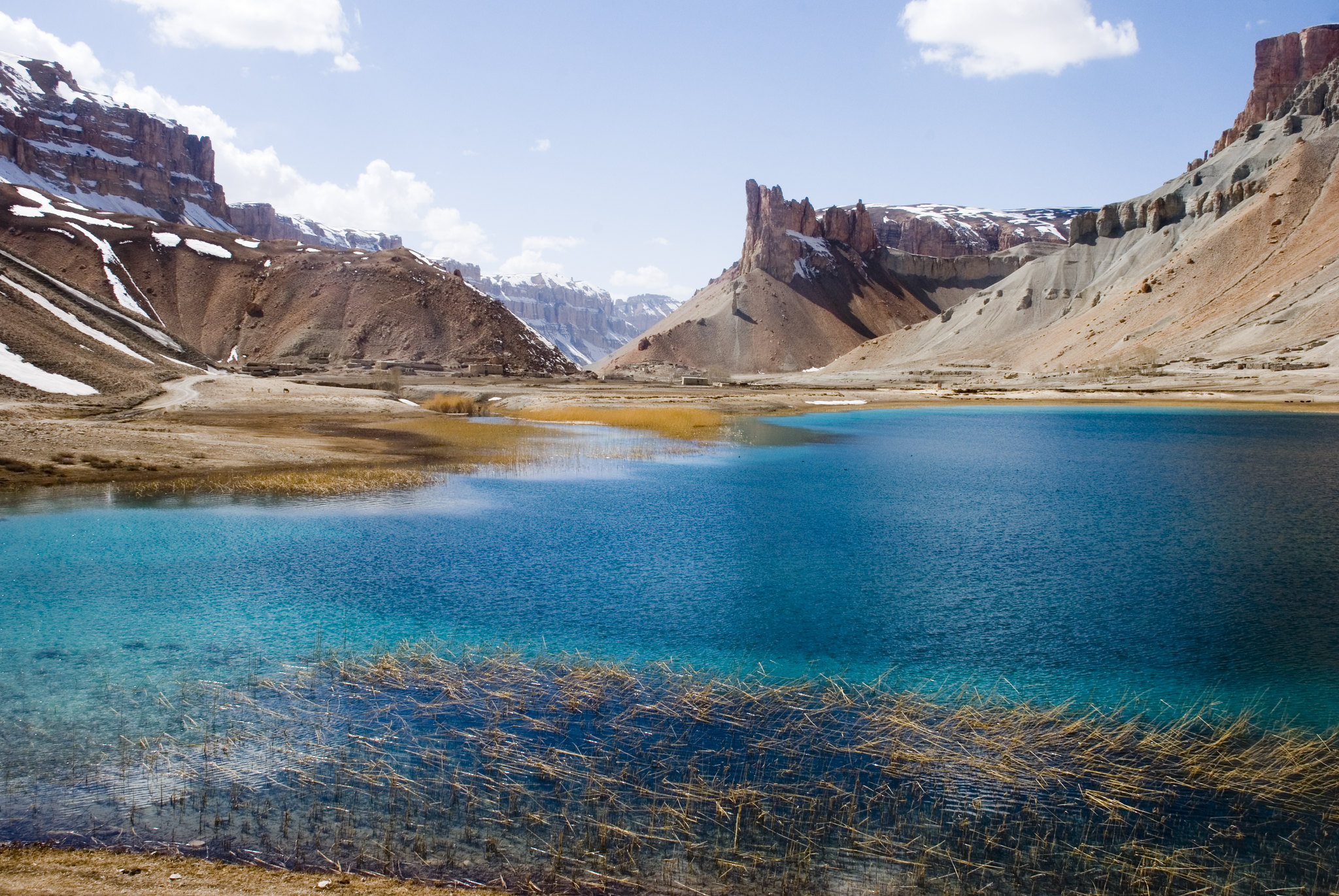
However, what we don’t know about this Middle-Eastern country is that underneath stories of terrorism and airstrikes is a lively community and a thriving culture despite the challenges that its people have experienced over the past seventeen years.
In this article, you’ll find some of the reasons why Afghanistan should be on your bucket list.
- 10 Things To Do in Pakistan – Points of Interest, Activities and Experiences
- 7 Days Pamir Highway Itinerary – My Daily Roadtrip Guide from Dushanbe, Tajikistan to Osh, Krygyzstan
- Turkmenistan Visa and Border Crossings to Iran and Uzbekistan [Central Asia]
- 13 Things To Do in The Pamir Highway Roadtrip from Tajikistan to Kyrgyzstan
- Arriving in Dushanbe, Tajikistan – The Beginning of my Central Asia Journey
Table of Contents
Key Cities in Afghanistan
Kabul – Once considered as one of the fastest-growing cities in the world, during recent times Kabul, Afghanistan’s capital and largest city, has survived much of the war that took over the country for a long time. Within the city, you’ll find parks, museums, and plenty of other admirable spots that will leave you in awe.
Balkh – “The Mother of Cities” as dubbed by the Arabs is one of the oldest cities in the entire world and has been destroyed more than once by conquerors like Genghis Khan and Timur-i-lang. It was also once part of the famous Silk Road and has a strong Buddhist influence which is evident in its ancient buildings.
Kandahar – Way back during the times of Alexander the Great, this place was called Alexandria Arachosia which the king founded himself. It was once a key player in the trading industry back in the day and was an important place for the Pashtun people of the country.
Bamyan – This central Afghanistan city has a mixture of influences from the Turks, Greeks, Persians, Indians and even Chinese due to the Buddhist expansion. It’s also the center of Hazarajat, the home of the Hazara people. These Shia Muslims have been terrorized by the Taliban in the past.
Nowadays, their region is open to tourists despite the lack of an easy mode of transportation to the area.
Herat – This city is located near Iran and Turkmenistan, which is why they’re a portion of its population speak Farsi and can identify with Iran more than with the rest of Afghanistan. It is an ancient city with great historical places dating back to thousands of years. Today, Herat is famous for its artisan workshops.
What You Should Do in Afghanistan
1. hang out by the garden of babur.
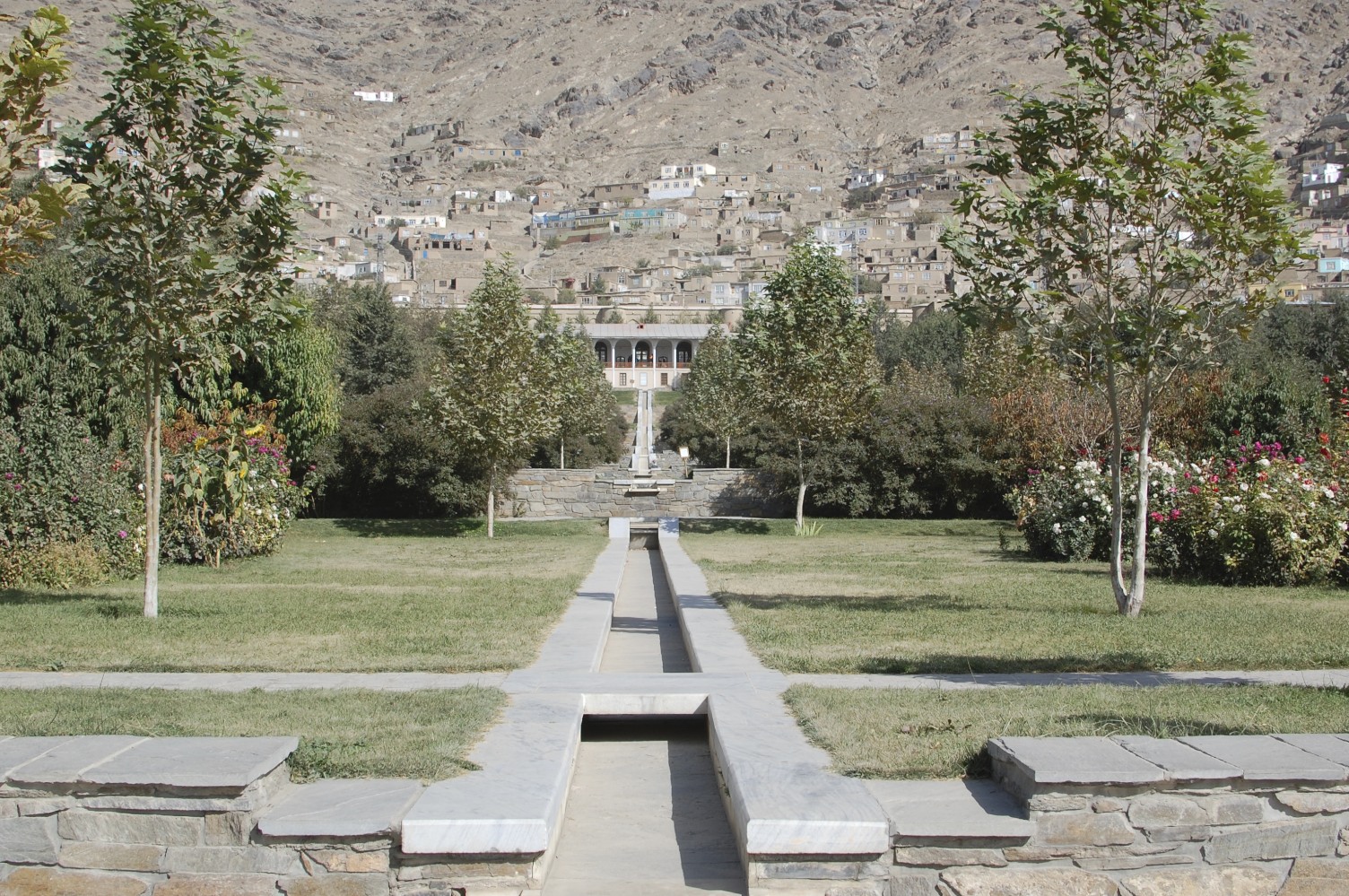
Despite the decade-long war tearing most of the country’s most prized possessions, Kabul was still able to recover some of its most historical sites like the Garden of Babur, thanks to agencies like the Aga Khan Development Network who helped them restore it. After the war has torn much of the garden beyond recognition, they were able to bring it back to its glorious state and has since been a destination for travelers and locals wanting to have a peaceful time in the middle of busy Kabul.
This is also a significant part of history as this is where Babur, the Mughal king, was finally laid to rest.
2. Know more about history at the Kabul Museum
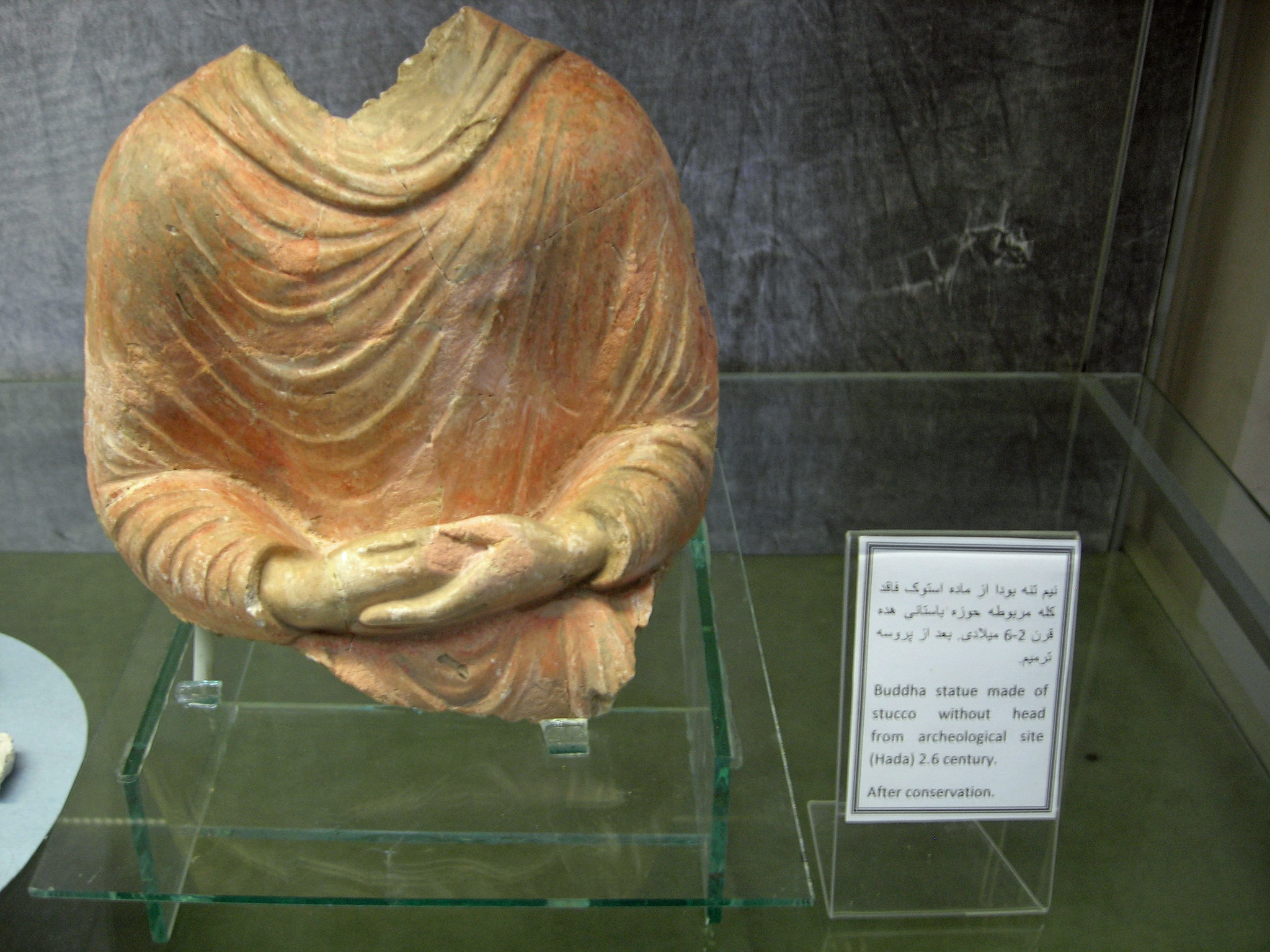
Even with the constant effort of numerous people to destroy much of the artifacts that the Kabul Museum houses, you’ll still be surprised by the number of important pieces of history this resilient museum holds. It’s filled with statues of Buddha, wooden deities and ancestors from the Nuristani ethnic group, giving us a peek into the region’s pagan roots.
Security can be tight when going to the museum nowadays, but the wait to enter this magnificent piece of Afghan history is all worth it. When entering, you’ll be welcomed by a sign that says “A nation stays alive when its culture stays alive”. And with everything that the museum and the whole Afghan nation has been through the past few decades, never have truer words been spoken.
3. Shop ‘til you drop at Chicken Street
View this post on Instagram A post shared by Nahid Popal (@nahidpopal) on Nov 28, 2016 at 5:02am PST
Don’t let the name fool you for the Chicken Street isn’t home to mouth-watering dishes, but to rows of shops selling Afghan handmade rugs, jewelry and gems like Afghan Lapis Lazulis. You’ll surely be able to put your bargaining skills to test when you visit this place.
4. Marvel at the sight that is the Friday Mosque
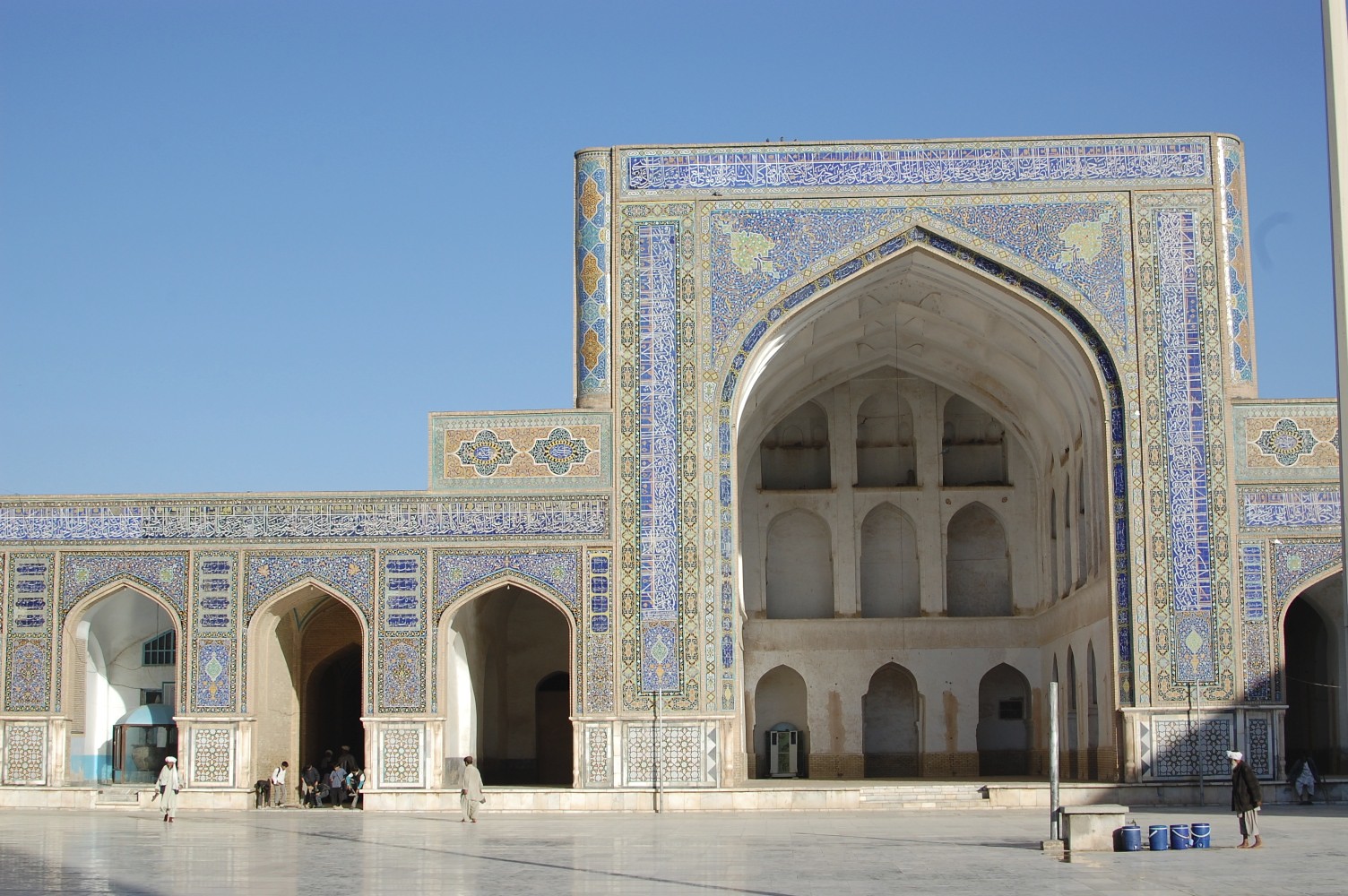
This 800 something-year-old mosque is one of the greatest you’ll ever find within the heart of Asia. You won’t be able to resist taking photos (except for when it’s prayer time!) of the colorful mosaic of tiles covering the massive mosque in Herat which is a product of the mosque’s tile craftsmen who’s been working on this project since the 1940s. You may also pay a visit to the tile craftsmen who’ll be more than happy to show you how their intricate artwork is being made.
Another note-worthy mosque within Afghanistan is the Blue Mosque at Mazar-i-Sharif. Similar to the Friday mosque, this beauty also attracts tons of tourists from all over with its colorful facade.
5. See the breathtaking beauty of Band-e-Amir
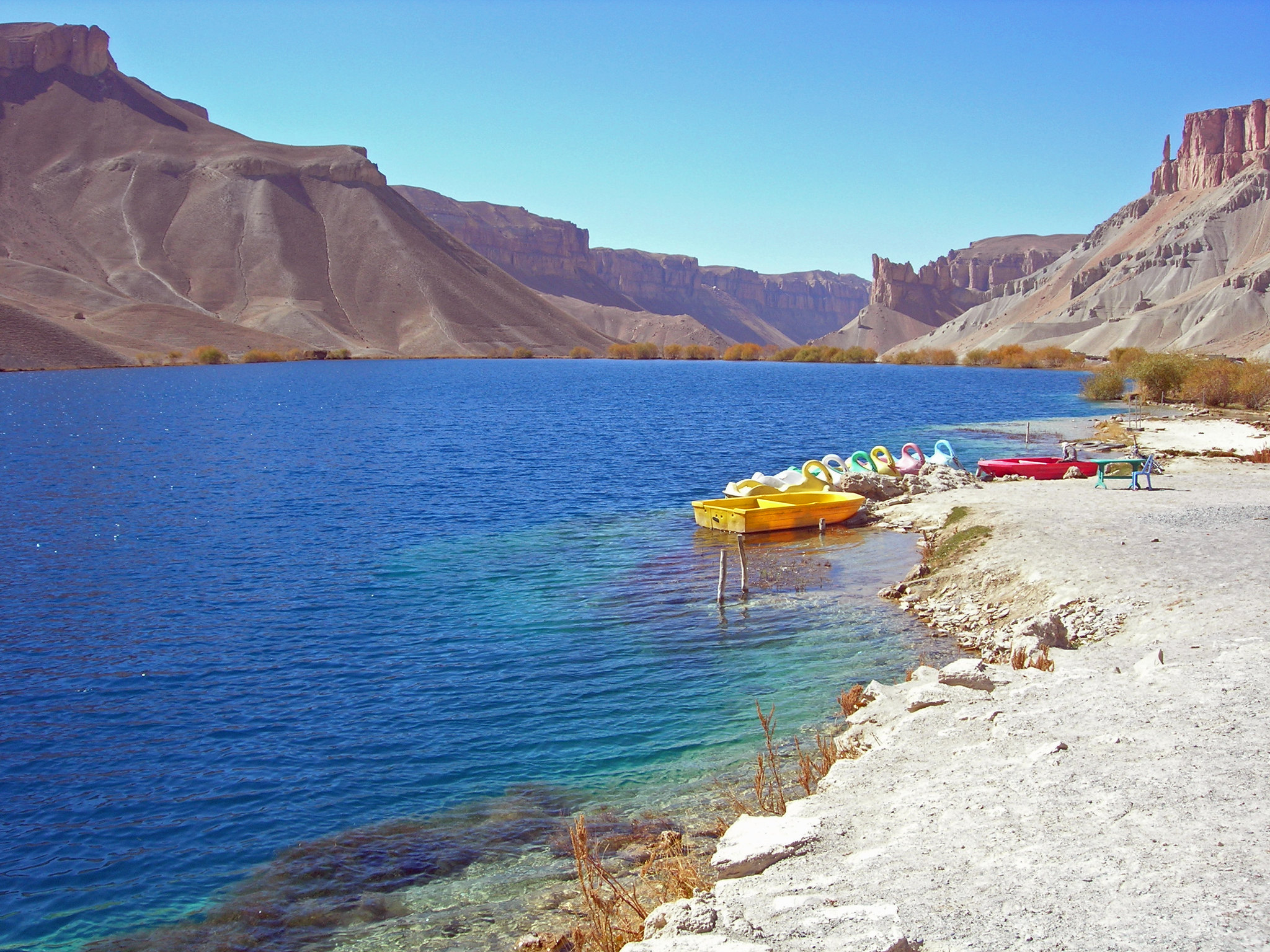
Famously known in Afghanistan as its first national park, Band-e-Amir is a group of six stunning blue lakes within the Bamiyan province. It might be quite a tiring travel up to where the park is located, but once you see its crystalline waters, you’ll get so smitten.
There’s a part behind a structure called the Tomb of Amir where women can take a bath in the lake in peace and away from prying eyes. It is said that the water from the lake can cure someone’s diseases. There’s also a part where one can drink freshwater of a spring.
6. Travel through one of the world’s highest tunnels
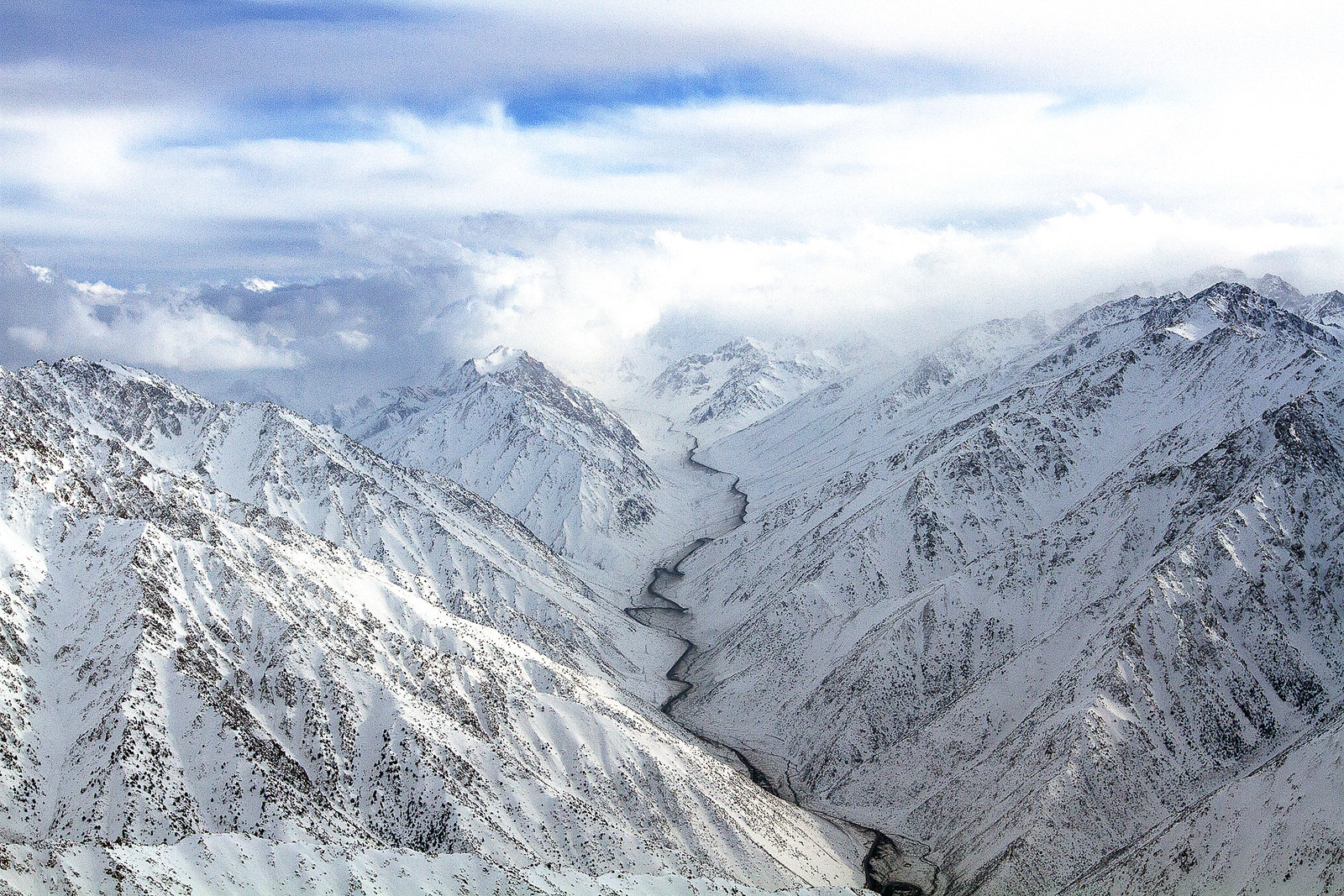
Take a ride through Salang Pass, the road that connects Kabul to Northern Afghanistan and let your eyes feast on the views of the snow-capped Hindu Kush Mountains before you enter the actual Salang Tunnel which is elevated at 3,400 meters.
7. Witness a round of Buzkashi
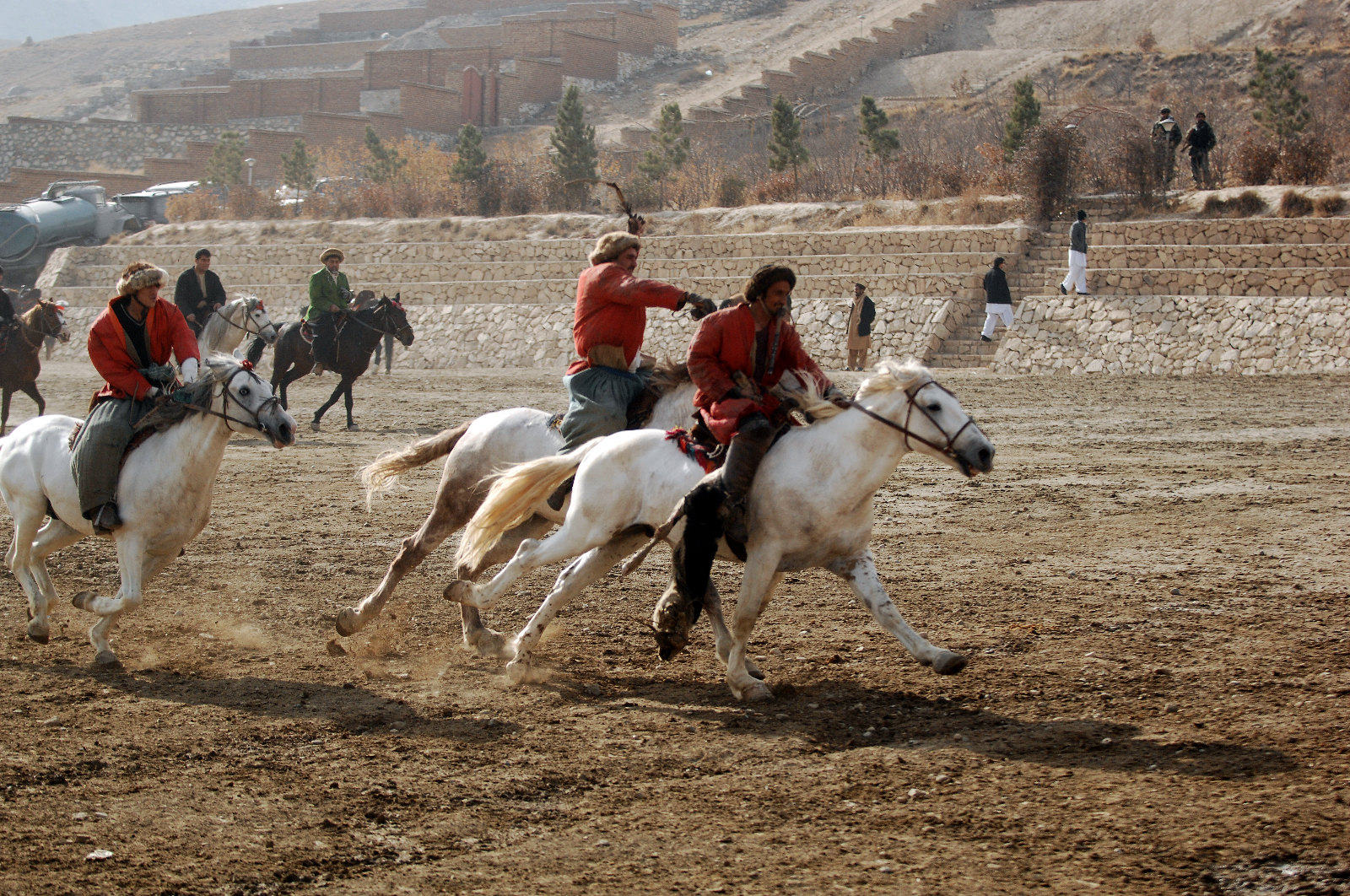
Afghanistan’s national game isn’t like most of the games we’re used to seeing in arenas and fields although the mechanics sound somewhat familiar. In a game of buzkashi, a team of horse riders will make a point once they get the ball to the other team’s base. But instead of an inflatable piece of rubber bouncing around the court, they have a headless carcass of a goat to place in the goal.
This game is also played in other Asian countries like Uzbekistan, Kyrgyzstan, Kazakhstan, and Tajikistan. Despite its apparent danger, this nomadic sport is still very much alive in Afghan culture.
What You Should Know Before Visiting Afghanistan
Before planning a trip, it’s still important to check your country’s travel advisory to Afghanistan. Some countries, like the US, has issued a travel ban to the country due to its tumultuous history and the risk of terrorist attacks.
Despite these warnings, however, Afghanistan is still open to tourists, but it’s really important to be cautious as to where you’ll be traveling. Some online forums and comments suggest that travelers who wish to see more of Afghanistan join organized tours instead of traveling solo.
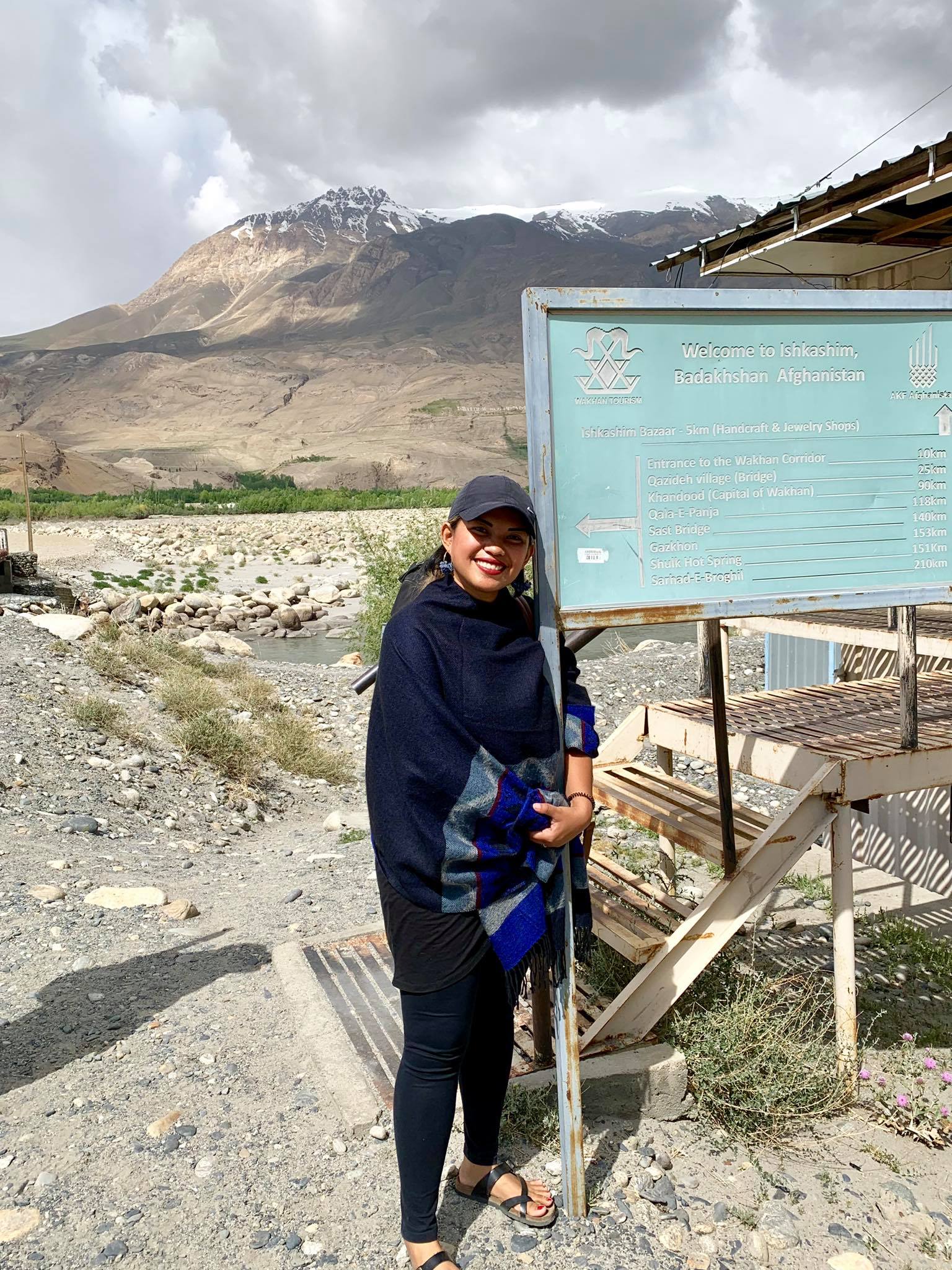
When getting to Afghanistan, a lot of people are advising against traveling by land for obvious reasons, no matter how possible it could be. The safest way to go is by plane to any of its airports such as Hamid Karzai International Airport and Herat Airport (which is mainly used for Iran-Afghanistan flights).
The country’s national airline is Ariana Afghan Airlines but other major players in the aircraft industry like Emirates stop by the country as well.
To be eligible to stay as a tourist in Afghanistan, you must apply for an Afghan visa which is valid for 3 months upon entering the country. You can only stay within Afghanistan for 30 days for a single entry visa.
Now one of the biggest questions you probably have is if it’s safe to travel to Afghanistan. To be very honest, some areas are still considered dangerous, not just for travelers but for the citizens as well. However, it’s relatively safer in bigger cities like Kabul.
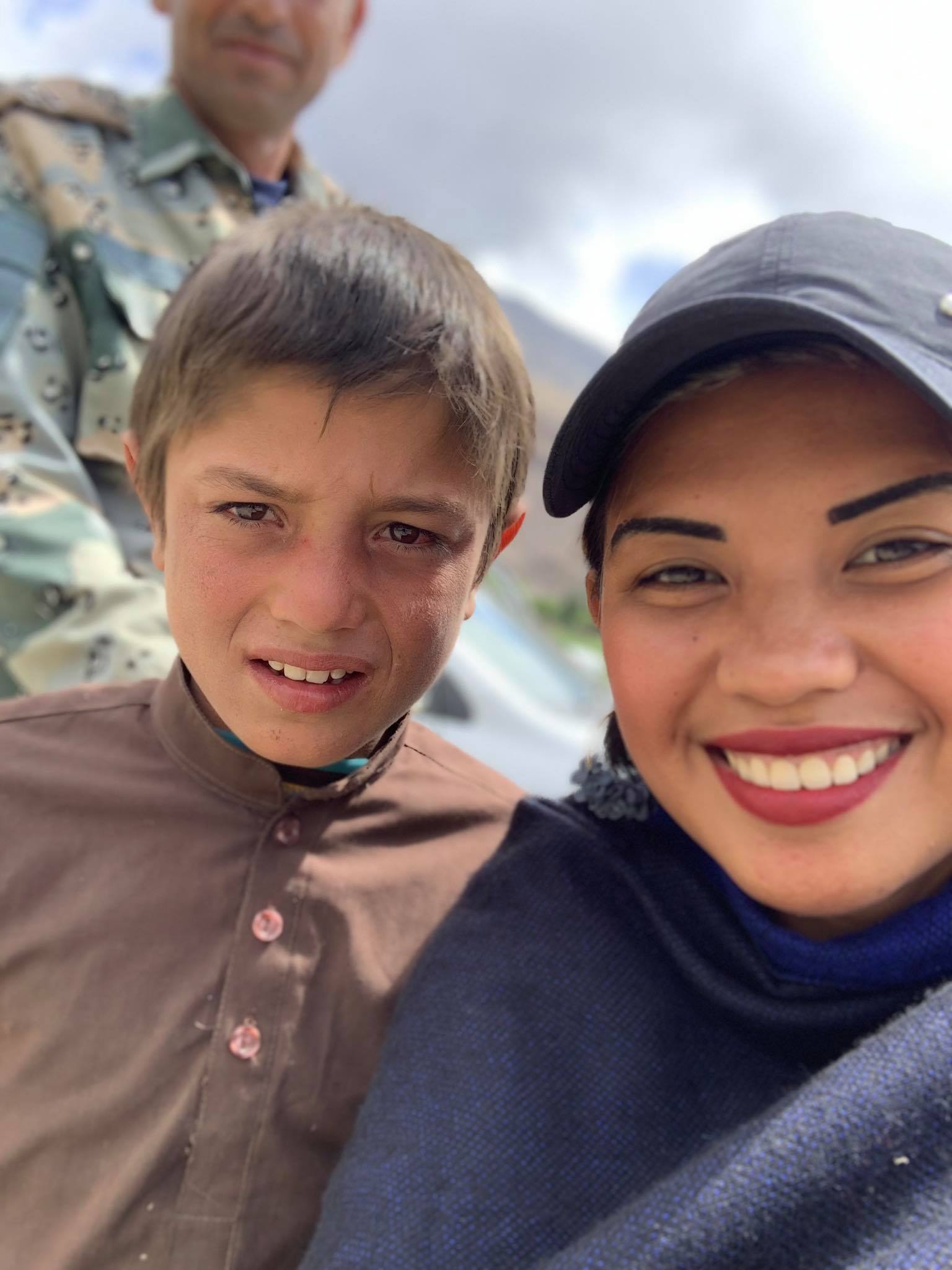
That doesn’t mean you won’t have to be vigilant when going around town, though. When traveling in Afghanistan, you still have to be extra careful. Just like traveling to other cities with areas that are quite risky for travelers, make sure that you keep your eye out on your belongings and your surroundings. Avoid traveling alone outside the cities especially during the night.
When paying for things in Afghanistan, they use Afghani, their local currency. You can have your money exchanged at counters in the airport or within major cities. Paying with cards, however, proved to be extremely hard as POS isn’t available in the country. If you need to, you can also withdraw money from the local ATMs for a certain fee.
It is hard to name a single language being spoken in the country as they are made up of many tribes. The biggest ones are Pashto-speaking Pashtuns and Farsi speaking Tajiks. It’s not easy to find someone who speaks English, so it will be useful to have a few basic Farsi phrases handy when you’re traveling.
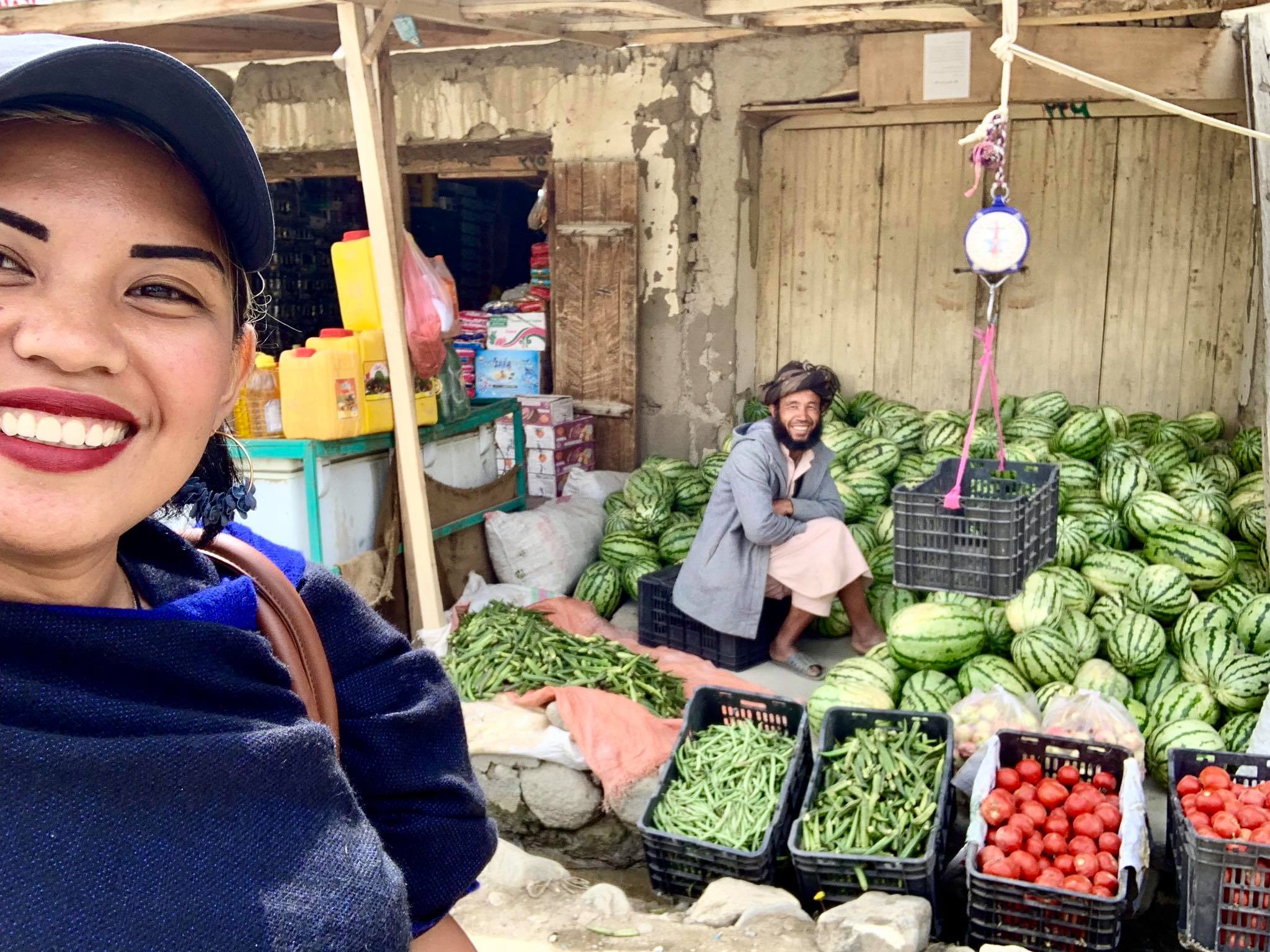
Another thing that you must pay attention to when going to Afghanistan is the way they dress. Afghanistan is a pretty conservative country, so it’s best to respect their culture by dressing appropriately. If you’re a woman, you must cover your head, especially when entering places of worship. You can also turn to their traditional clothing, salwar kameez, especially during the summer. They are readily available in stores around Kabul.
To communicate with your family and friends from around the world while in Afghanistan, you can use a local sim card for calling and sending text messages. 3G internet is also provided by some local networks for a fee.
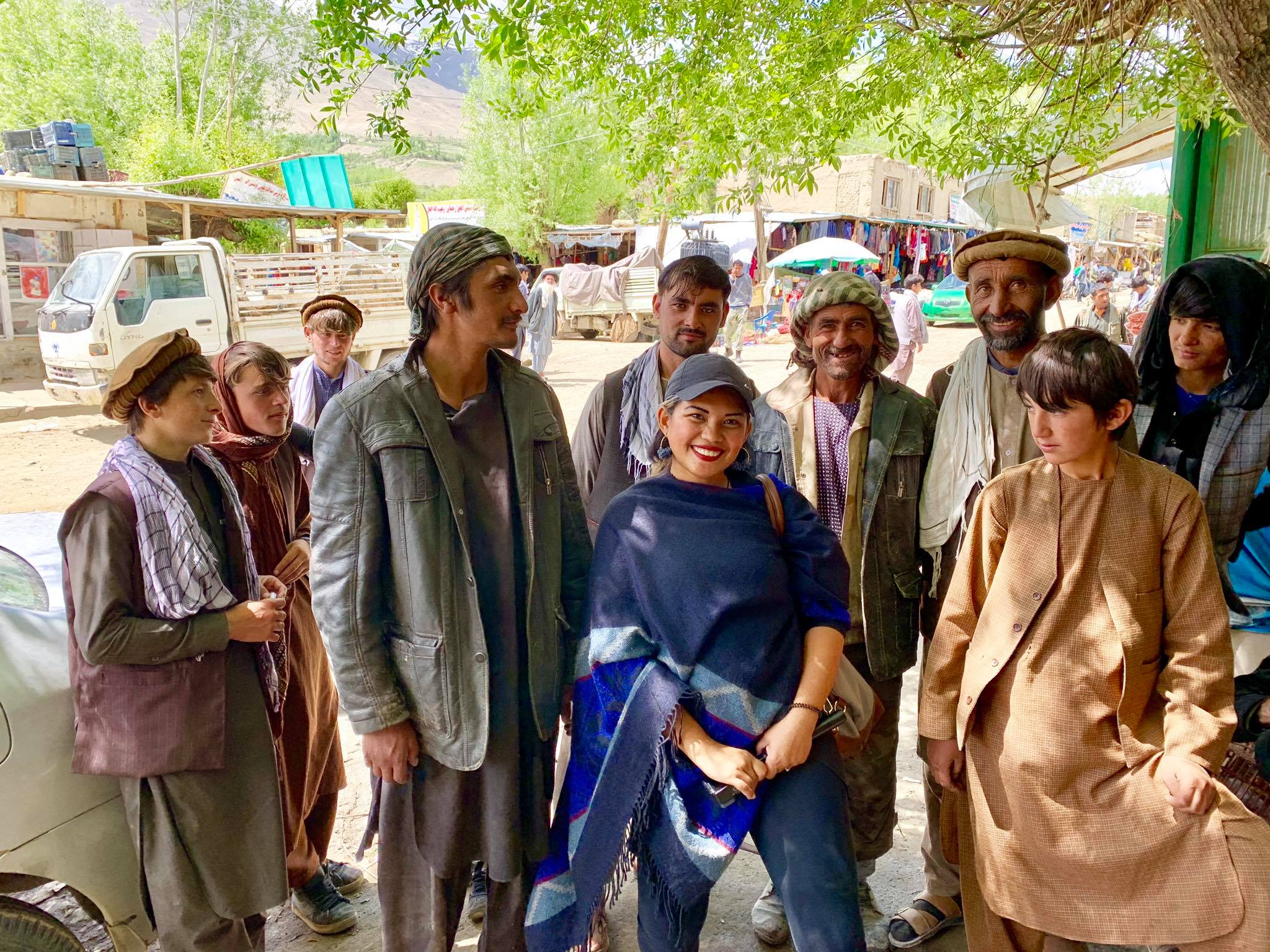
If you’re already set on traveling to Afghanistan, it’s best to plan your trip during the spring season from March to June so you can avoid the harsh conditions of both the summer and winter seasons. Due to its location and topography, enduring these opposites can be quite unbearable for tourists.
It’s sad to think that Afghanistan is always painted by the media and by the recent events that transpired within its borders as a hazard to most people. However, just like the signage outside the Kabul Museum says, “the nation is alive when its culture stays alive”. So as long as the culture of resiliency and endurance is prevalent in every Afghan, the entire future of the nation will only go upwards and forward.

Are you on Pinterest? Pin these!
![afghanistan best tourist places 7 Things To Do in Afghanistan [Best Places to Visit in Afghanistan]](https://twomonkeystravelgroup.com/wp-content/uploads/2021/06/7-Things-To-Do-in-Afghanistan-Best-Places-to-Visit-in-Afghanistan1.png)
Leave a Reply Cancel reply
Your email address will not be published. Required fields are marked *
This site uses Akismet to reduce spam. Learn how your comment data is processed .
COPYRIGHT DISCLAIMER: Many of the articles on Two Monkeys Travel Group are guest posts by a number of Approved Contributors and are hosted by Two Monkeys Travel Group. Approved Contributors control their own work and post freely to our site. This includes all text and images that they use within their own work. All contributors are instructed to follow internationally recognised copyright and intellectual property guidelines. Two Monkeys Travel Group takes its own responsibilities very seriously, so if you feel that any part of this work is abusive in any way, please send us an email so that we can investigate - [email protected]
DISCLOSURE: Please note that some of the links above are affiliate links. So when you make a purchase we sometimes make a small commission, at no extra cost to you. The cost to you remains the same, sometimes even cheaper if we have negotiated a special deal for our readers.We use all of the companies we have listed here and that’s why they are in this list, but of course we need to keep Two Monkeys Travel Group running as well as it can, which is exactly what you’re helping with if you do decide to buy or book something through an affiliate link! If you have any more questions about the companies we use or any other companies you’re looking at, just email us and we’ll be happy to help. Please see our full disclaimer page for more information.
Written by Two Monkeys Travel - Contributor
Two Monkeys Travel Group – Community Travel Blog is a travel blog and website. We quickly grew into a valuable source of inspiring travel stories, advice, itineraries and travel guides, with the aim of demonstrating how to live a sustainable life of travel, whilst living your own definition of success. If you'd like to contribute and write a guest post, contact us at [email protected]
Discover Turkey’s Lesser-Known Gems For The Adventurer
48 hours in tokyo – exploring japan’s vibrant capital, how to find the best hotels in new york, top california destinations for families to enjoy, scuba diving and snorkeling in the philippines, related posts, list of the best beach resorts in boracay, philippines, 7 reasons why you should visit israel at least once in your life, different ways to travel from manila to ilocos [how to travel to ilocos], list of philippines holidays in 2020 [with tips on how to organize your vacation leave schedule], previous post, 27 things you should know before visiting montenegro, why become a safetywing ambassador – how affiliate marketing works, subscribe to our newsletter.
Receive tips on how you can live a sustainable long-term travel lifestyle!
- First Name *
- Email This field is for validation purposes and should be left unchanged.
Top Afghanistan Attractions
Things to do in afghanistan.
- 5.0 of 5 bubbles
- 4.0 of 5 bubbles & up
- 3.0 of 5 bubbles & up
- Budget-friendly
- Good for Big Groups
- Good for a Rainy Day
- Good for Adrenaline Seekers
- Good for Kids
- Hidden Gems
- Adventurous
- Good for Couples
- Honeymoon spot
- Things to do ranked using Tripadvisor data including reviews, ratings, photos, and popularity.

1. Cultural Landscape and Archaeological Remains of the Bamiyan Valley

2. Babur Tomb
3. Band-e-Amir National Park
4. Qargha Lake
5. Blue Mosque
6. Panjshir Mountains
7. Friday Mosque

8. Kabul Museum
9. Khwaja Abd Allah Ansari Shrine
10. Christian Cemetery
11. Darul Aman Palace
12. Herat Citadel

13. Bagh-e Babur

14. National Museum of Afghanistan
15. Gawhar Shad Madrasa and Mausoleum
16. Green Mosque

17. Shahr-e-Zahak (Red City)

18. Khawaja Ghaltan Shrine

19. Shah-e Doh Shamshira Mosque

20. Khost Mosque
21. Jami's Tomb

22. Buddhas Of Bamiyan

23. Babur Gardens Mosque

24. Minaret and Archaeological Remains of Jam

25. Faizabad Chowk
26. Musalla Minarets of Herat

27. Red Mosque
28. Ziarat-e Sakhi

29. Pul-e Kheshti Mosque

30. Malan Bridge
What travellers are saying.
The 10 Must-Visit Places in Afghanistan
In recent weeks, we’ve been publishing videos about Afghanistan in our Cultural Insights Series. In these Zoom videos we speak to a friend of LOTE, Shamsiya Hussainpoor, about the Afghan culture and discuss the differences that she has noticed between Australia and her birth country.
Regrettably, due to its painful history that’s lasted for decades, Afghanistan has long been overlooked by tourists. That’s why, in this blog, we’d like to take a virtual trip and share our top 10 places to visit in Afghanistan!
1. Mazar-i-Sharif and the Blue Mosque.
Mazar-i-Sharif, is the capital of the Balkh province and the fourth largest city of Afghanistan.
The name Mazar-i-Sharif can be translated as “Noble Shrine” or “Tomb of the Exalted”, which refers to the magnificent Shrine of Hazrat Ali, commonly known as “the Blue Mosque”, located in the centre of the city.
The complex is a sacred site for pilgrims who come from all over Afghanistan and beyond because the shrine houses the tomb of Ali, the cousin and son-in-law of the Prophet Muhammad. The faithful believe that his body was transferred to Afghanistan from Al-Najaf, Iraq, where he was initially buried.
It’s probably the most iconic site of Afghanistan. The mosque features stunning Persian architecture and is famous for its mosaic tiles that cover the entire building outside as well as inside.
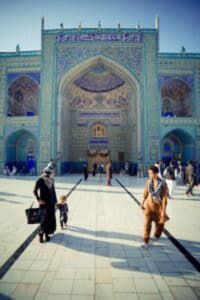
2. Buddhas of Bamiyan
Before the blatant destruction by the Taliban in 2001, the cliff face of a mountain near Bamiyan housed two of the largest statues of Buddha in the world. The ancient monuments dated back to the 6th century and portrayed a Vairocana Buddha (53 metres high) and a Shakyamuni Buddha (35m).
The main bodies were hewn directly from the sandstone cliffs, but details were modelled on top, using clay and straw.
In 2001 the Taliban decided to destroy the Buddhas , for the reason that the “Buddhist idols” impinge on Islam, even though they were untouched for centuries. A number of countries tried to save the historic heritage and offered to buy the statues or move them to other countries. But the Taliban was relentless and the ancient monuments were lost forever.
Now, the empty cavities in the cliff serve as a reminder of the effects of intolerance toward other cultures and the loss of a whole chapter of pre-Islamic history of Afghanistan.
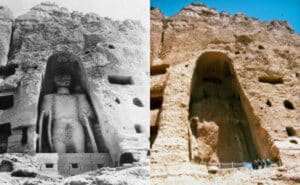
3. Chil Zena (Fourty Steps of Kandahar)
Chil Zena, also known as Chilzina or Chehel Zina, translates as “fourty steps”. It is a mountainous outcrop in the West of Kandahar city with fourty stone steps leading to the top, where a chamber is cut out of the rock. The top of the rock opens to a spectacular view on the city.
Formerly, the site was a part of the old citadel of Old Kandahar, which was destroyed in 1738.
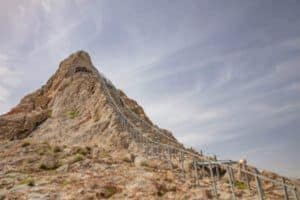
4. Band-e Amir National Park and Lakes
This incredible site in the middle of Afghanistan is famous for its six deep blue lakes, which appear out of nowhere from the grey lunar landscape. Travertine walls have been building up for centuries and formed natural reservoirs for the rainwater. The water has high mineral content, hence the deep blue colour that creates the “infinity pool” effect.
The name Band-e Amir means “Commander’s Dam”, referring to Ali, the son-in-law of the Prophet Mohammed. According to the legend, Ali performed a series of miracles and, as the result, the lakes appeared on the otherwise plain rocky land.
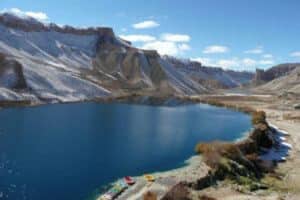
5. Minaret of Jam
This UNESCO Heritage Site, built in the late 12th century by the Ghurid dynasty, is the only monument that remained from the lost city of the Turquoise Mountain, one of the greatest civilisations of the Middle Ages. The mosque that it used to be attached to was washed away during the flood in the 13th century.
Its intactness is not the only striking thing about this minaret. Extending 62 metres into the air, it’s the loftiest brick minaret in the world. Its surface is beautifully carved with Koranic inscriptions in various colours.
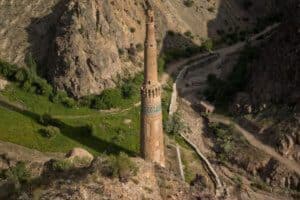
Herat is the third largest city of Afghanistan, near the Iranian border. Long ago, it was the residence of Timurid dynasty. With a mix of Turk, Persian and Mongol cultural influence, it’s home to a great historical and architectural heritage. The must-visit sites here are: The Friday Mosque, decorated with splendid turquoise mosaics; the Herat Citadel; and the Mausoleum of Sufi Poets.
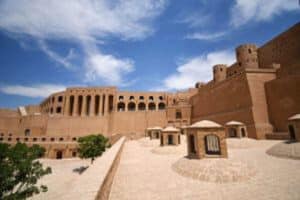
7. Panjshir Valley
The valley is located in north-central Afghanistan, 150 kilometres north of Kabul, surrounded by the Hindu Kush mountain range and divided by the Panjshir River.
Panjshir Valley has it all for a unique experience of Afghanistan. Not only has it become an emerging industrial center after construction of multiple hydroelectric dams and emerald mining facilities. Visitors are rather attracted by the unmatched beauty of its nature – vast green fields and serpentine rivers, all among snow-capped mountain peaks.
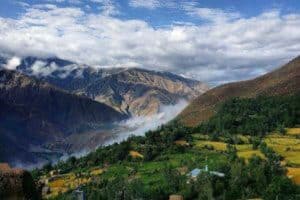
8. Faiz-a Bad (Fayzabad)
Another gem hidden between the Hindu Kush mountains. Even though it’s the capital and the largest city of Badakhshan Province, it has preserved its rural and peaceful atmosphere. Visiting Fayzabad will be an authentic experience of an Afghan town, with its settlements and farms, bustling bazaars and the most hospitable local people.
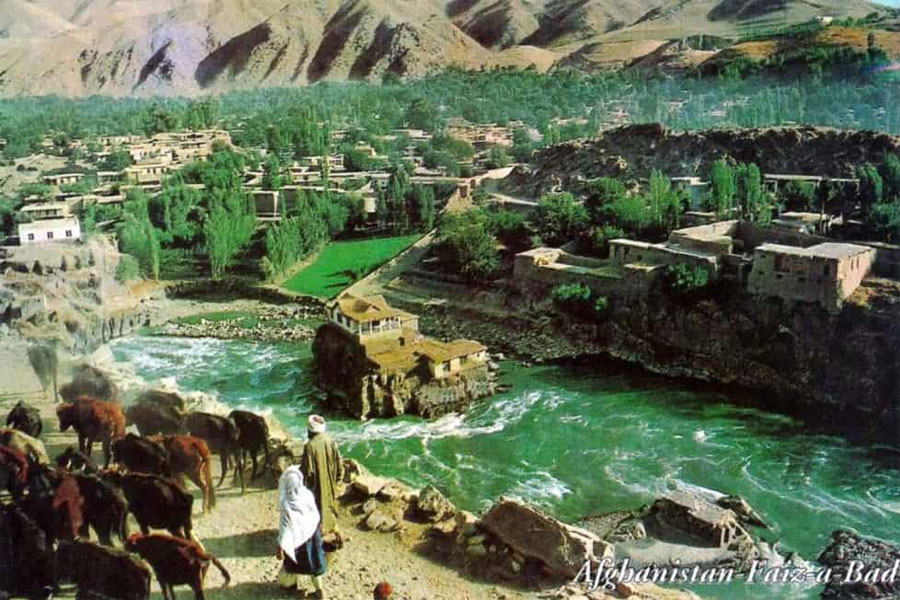
Balkh is a town in the Balkh Province of Afghanistan, near the border of Uzbekistan. During its long history, the area has been a centre of Buddhism, and Zoroastrianism and Islam.
After the Islamic victory, Balkh witnessed the coming and going of several dynasties, and was further destroyed by Genghis Khan. In the 14th century it was re-established, and finally, taken over by Afghans in the 18th.
Balkh is home to some amazing sites of historic heritage. Among these are ruins of Greek settlements, mausoleum, a mosque and Buddhist shrines. The latter is probably the most striking: the Buddhist stupa Takhte-Rostam was built underground, reaching 8 metres in depth.
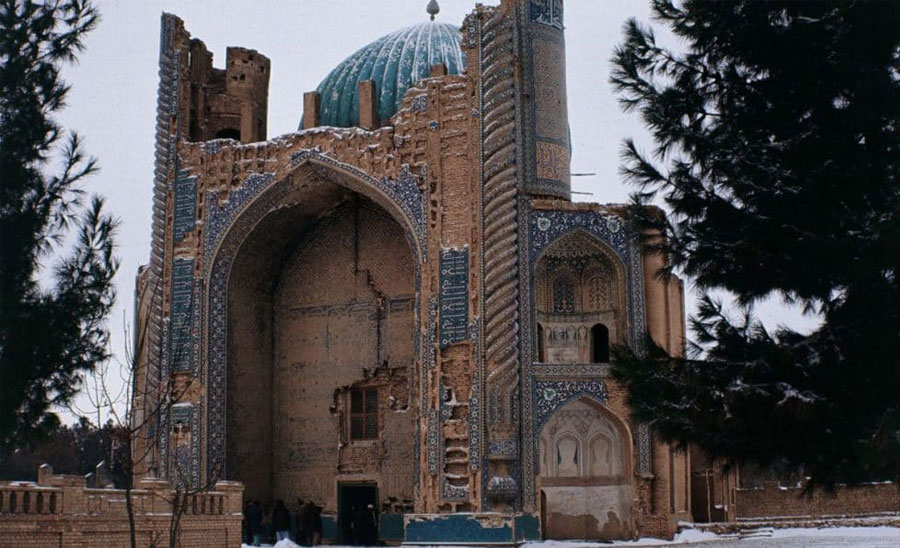
10. Samangan
A significant archaeological site in Afghanistan is located in Samangan. Originated in the 4th – 5th centuries, the Takth i Rostam, like Bamyan, brings us back to the pre-Islamic times of history of Afghanistan.
Takht-i Rustam means “the throne of Rustam”, referring to the king in Persian mythology.
The site has preserved a stupa-monastery complex which is fully hewn out the mountain rock and used to be inhabited by Buddhists. The large complex consists of multiple chambers, caves, halls and a stupa. Some of the decorative elements have been preserved, such as lotus leaf ornaments on the sanctuary ceiling.
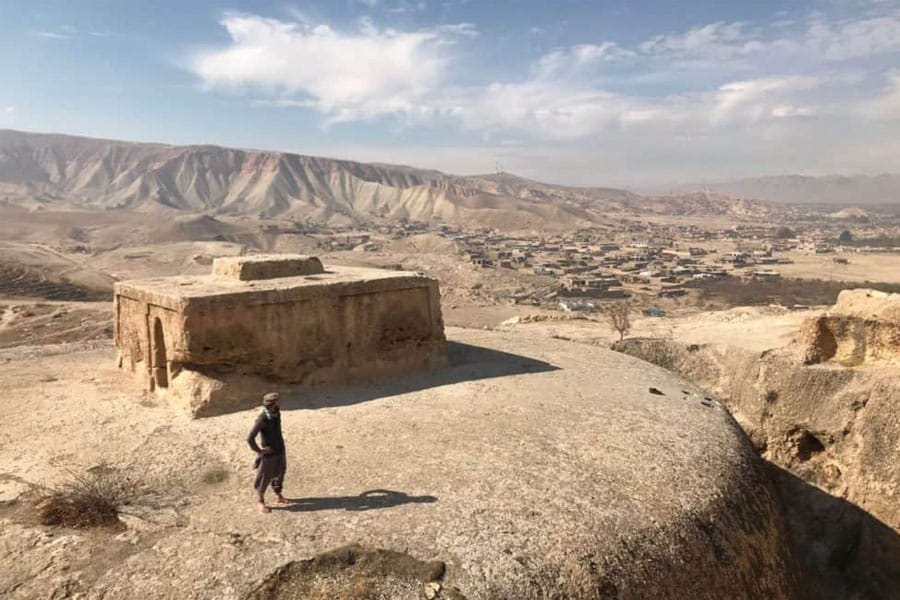
Related Posts

A day in the life of a Research Intern
Navigating australia’s multicultural landscape: a call to inclusive communication.
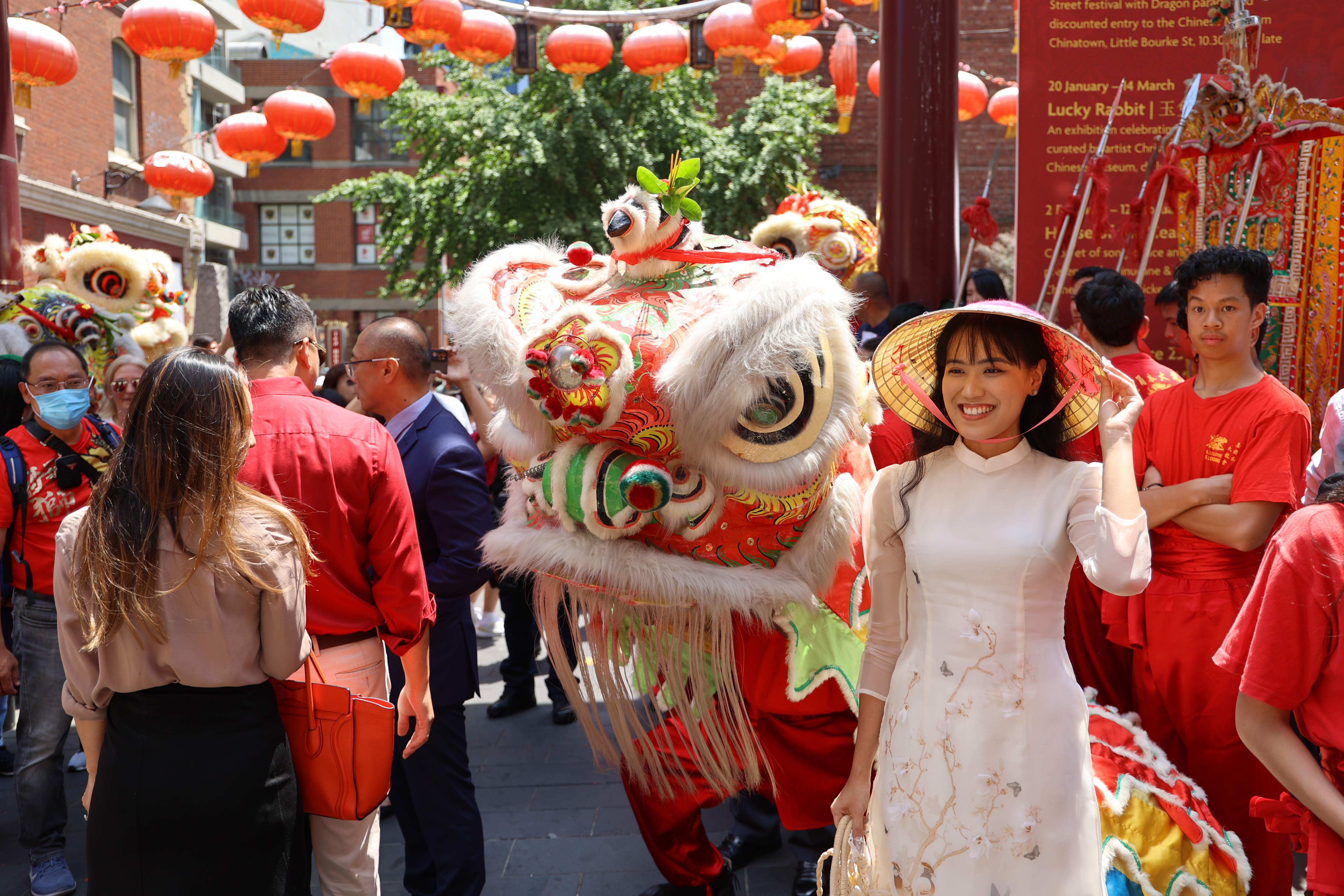
Exploring Lunar New Year across Australia

Travelholicq
Travel & Adventure Blog
Top 7 Best Places To Visit In Afghanistan
Share this post for good karma 😊
Nature has endowed Afghanistan with implausible beauty which is really a “Heaven on Earth”.
Afghanistan is definitely the place for the most breathtaking mountains, preserved nature, and endless outdoor beauty where in fact, certain regions are so untouched that there are literally places that no human being has ever been to.
Hidden lakes, unclimbed mountains, Afghanistan will one day turn into “El Dorado” for nature lovers. Picture perfect landscapes where every corner of the valley is filled with great beauty.
Each place is like a postcard waiting to be shown to the world.
So don’t forget to explore its verdant valleys, charming lakes, winter wonderland, adventure hub, fabulous food, and to meet warm and friendly locals when you plan to visit Afghanistan.
Now. I am gonna list out some of the spectacular places to visit in Afghanistan.
Here are the Top 7 Best Places To Visit In Afghanistan.
1. Broghil Pass
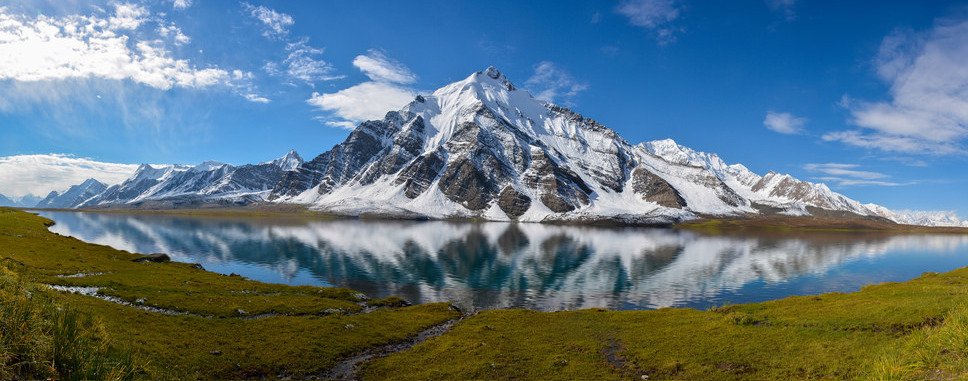
Broghil also spelled Broghol, is a high mountain pass along the Durand Line border that crosses the Hindu Kush mountain range and connects Wakhan District of Badakhshan Province, Afghanistan with Chitral District of Khyber Pakhtunkhwa, Pakistan.
Broghil is a relatively low pass that has unique and distinctive that one of the four major mountain passes enter Chitral.
From lush green plains to gigantic lakes to snow-capped passes, Broghil has some of the most unique and varied landscapes which you will get to see once you visit there.
Even the weather changes frequently from snowfall to dust storms. Broghil Pass is a must-visit place when you are in Afghanistan.
2. Band-e Amir
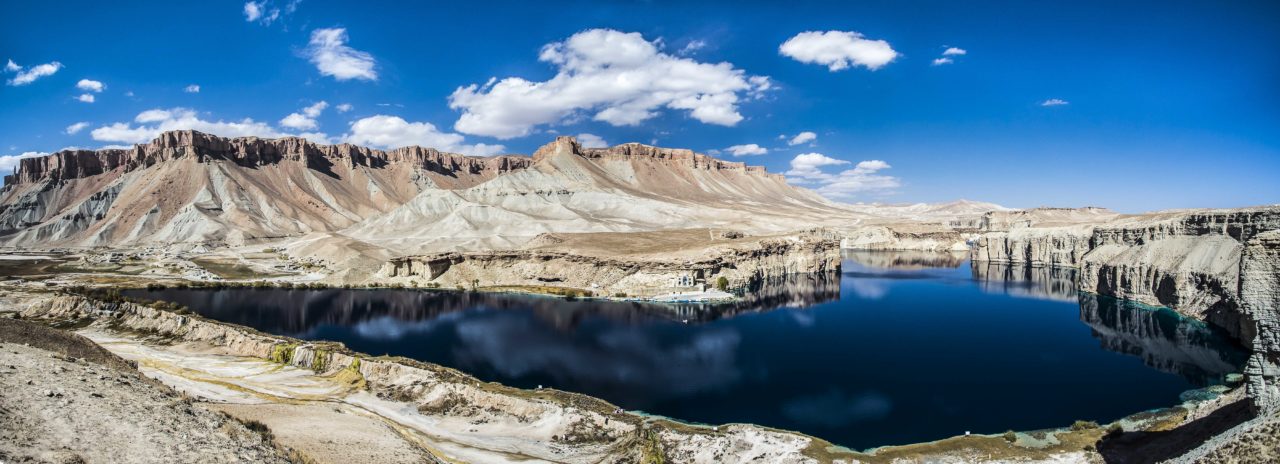
Band-e Amir is Afghanistan’s first national park which is located in the Bamyan Province which is a chain of 6 incredible deep blue lakes nestled amidst pink limestone canyons in the mountainous desert of central Afghanistan and it is the second-highest mountain range in the world.
It’s an incredibly stunning sight where 6 deep blue lakes suddenly appear like sparkling jewels in the middle of the barren grey wasteland of Central Afghanistan that stretches as far the eye can see.
Being the heart of Afghanistan’s tourism Band-e Amir attracts a few thousands of tourists every year from all over the world.
If you are planning to visit Afghanistan anytime then do not forget to add Band-e Amir to your bucket list.
Noshaq is the second-highest point in the whole of the Hindu Kush Ranges and has an elevation of 24,580 feet.
Until recently, the mountain was off-limits, but it is now open for climbers and trekkers. It’s possible to trek to the base camp at 4,450 m from where there are spectacular views to several 7,000+ m peaks.
The view is magnificent where you can see the cloudless sky. Its name means ‘nine valleys’ in the Dari language of Afghanistan.
Noshaq is surrounded by great beauty where its white peaks point high into the blue sky.
If you love mountaineering then Noshaq is heaven for you as it is one of the world’s most isolated and beautiful mountain landscapes, and one of the few peaceful and secure places in Afghanistan.
4. Wakhan Corridor
The Wakhan Corridor is a narrow strip of territory in northeastern Afghanistan that extends to China and separates Tajikistan from Pakistan.
Known locally as the Bam-e-Duniya or ‘roof of the world’, the area is where three mountain ranges — the Pamir, the Hindukush, and the Karakoram — converge to form the Pamir Knot.
As the origin of the Oxus, which runs along the corridor separating Tajikistan from Afghanistan, it drew travelers, adventurers, and explorers trying to discover the origin of the mighty river, which runs 2,500km into the Aral Sea.
So breathe in the glorious natural beauty , go for walks which is perfectly safe but with the help of local guides, and meet the friendly locals, drink endless cups of tea with naan.
Also, visit the shrines dotting the landscape, walk along the Oxus river with the locals, climb mountains, go trekking and hiking on foot or using animals or both. Wakhan Corridor has everything to offer what a traveler wishes for.
Click to know about Top 5 Best Places to Explore in Kazakhstan.
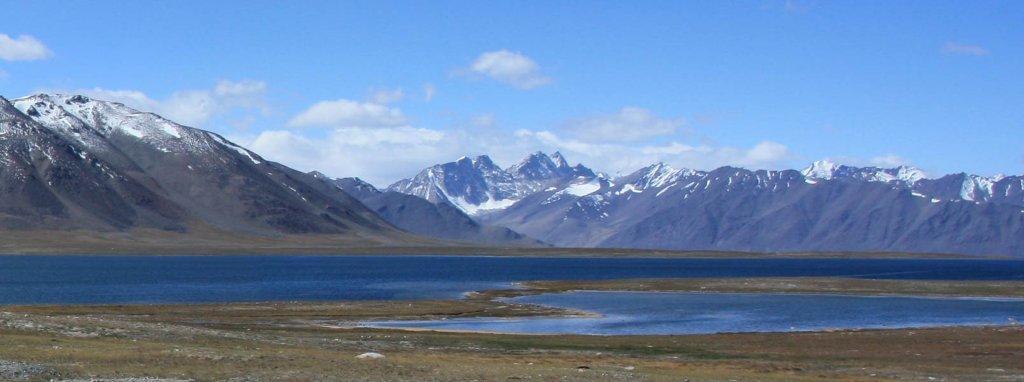
Once named Lake Victoria by the British, Zorkul is a lake in the Pamir Mountains that run along the border between Afghanistan and Tajikistan and it is also the starting point of the mighty Amu Darya (previously Oxus) river, fed by the glaciers coming from the mountains above.
To make it to Zorkul you will need permission from the Border Guard at Khorog. Once there, you can rejoice in mountain hiking, horse riding, and milk tasting with the shepherds in summer.
You should definitely visit Zorkul, I am sure Zorkul will not disappoint you at all.

Widely known for the giant, ancient Buddha statues that were carved into the side of a cliff, Bamyan is located in the central highlands and is one of the oldest cities in Afghanistan.
The imposing Buddha statues, which used to be the prime attraction in Bamyan, are long gone but the beautiful ruins tell many fascinating stories.
Constructed in the 6th century, these statues were a target of cultural vandalism over the centuries but still, the ruins of Buddha are the major attraction in Bamyan valley that enthralls visitors.
With a rich history dating back to 2000 years, Bamyan province has been the center of some great civilizations.
So don’t miss a chance to visit this amazing place as Bamyan is an abode of peace and tranquility where you can wander freely.
7. Ajar Valley
Beyond a crack in the Afghan mountains lies a lost world, the hunting grounds of King Mohammed Zahir Shah called Ajar Valley .
If you drive into the western range of the Hindu Kush and pass beyond the district of Kahmard, you come across a forgotten cut called the Ajar Valley where the peaks around Ajar are lower than those of the eastern Hindu Kush but they appear to fall deeper.
It was the hunting reserve of King Mohammed Zahir Shah from 1952 until 1973 when he was deposed and went into exile in Italy. Ajar seems like a play on words.
So don’t miss to explore the Valley Of The King – Ajar when you are in beautiful Afghanistan.
You might also enjoy:
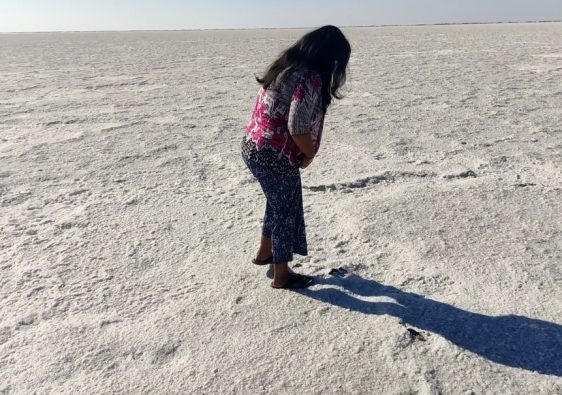
India’s Most Thrilling Places to Visit in Your Lifetime

Top 6 Best Places To Visit In Liechtenstein

5 Beautiful Places To Visit In Leh (Ladakh)
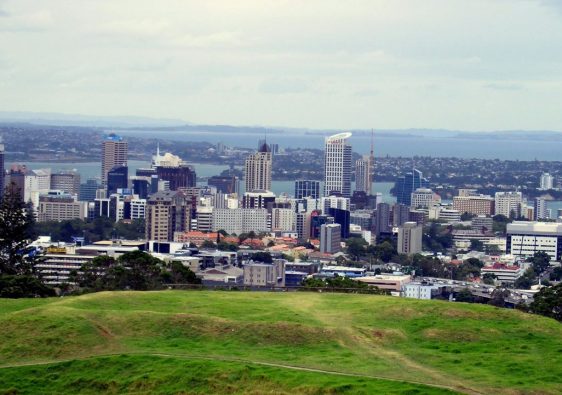
5 Stunning Places To Visit In Auckland
Privacy Policy
Work With Me
Afghanistan
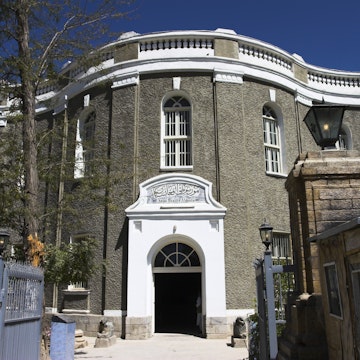

Tourist Places
- Spoken English
Verbal Ability
- Interview Q
- Send your Feedback to [email protected]
Help Others, Please Share

Learn Latest Tutorials
Transact-SQL
Reinforcement Learning
R Programming
React Native
Python Design Patterns
Python Pillow
Python Turtle
Preparation

Interview Questions

Company Questions
Trending Technologies
Artificial Intelligence
Cloud Computing
Data Science
Machine Learning
B.Tech / MCA
Data Structures
Operating System
Computer Network
Compiler Design
Computer Organization
Discrete Mathematics
Ethical Hacking
Computer Graphics
Software Engineering
Web Technology
Cyber Security
C Programming
Control System
Data Mining
Data Warehouse


Taliban's quest for tourists to see the wonders of Afghanistan
H olidaying in a country torn apart by warfare and ruled by fundamentalists won't be top of everyone's bucket list but the number of foreign tourists visiting Afghanistan rose 120% in 2023, reaching nearly 5,200.
Travel officials want Afghanistan to become a "tourism powerhouse", said AP , an ambition backed by the Taliban's top leaders, who assured The Times that "attention has been paid to peace and order in the areas where tourists go."
But why are visitors returning to Afghanistan and how safe is it?
'Bragging rights'
During the 1960s and 1970s, Afghanistan was part of the overland "hippy trail" route across Asia, with "hundreds of thousands of Western tourists" passing through, said Sky News , although as its "complicated modern history unfolded", the "steady stream of travellers stopped". But now, foreigners are visiting the country again, encouraged by the "sharp drop in violence", increased flight connections with hubs like Dubai, and the "bragging rights that come with vacationing in an unusual destination", said AP. Although the numbers aren't huge, they "never were" and there's still "a buzz around Afghan tourism".
The visitor revival is thanks to efforts by the nation's tourist officials, who are working hard to overcome numerous obstacles. There are problems with the road network, which is "half-paved or non-existent in some parts of the country", said the outlet, and the fact that airlines "largely avoid Afghan airspace".
"Decades of conflict" have made tourists in Afghanistan "extremely rare" in recent times, said Al Jazeera , and although most violence has now abated, visitors are "still confronted with extreme poverty, dilapidated cultural sites" and "scant hospitality infrastructure".
Tourists who visit will "holiday under the austere control of the Taliban authorities", without consular support, and they must also comply with a strict dress code and submit to searches at checkpoints.
The Taliban has an infamous track record of oppressing women and has even banned women from a national park, ruling that "going sightseeing is not a must for women". Untamed Borders, which runs mixed-gender tours to Afghanistan, told Sky News that although women travellers can "spend time with women in homes", there "are other things that women are not allowed to do and certain places they're not allowed to visit".
Stefanie Meier, a 53-year-old US citizen who spent a month travelling from Kabul to Kandahar via Bamiyan and Herat in the west, told Al Jazeera she did not face any issues as a woman on her own.
The country's only five-star hotel, the Serena, has reopened its women's spa and salon for foreign females after a closure of several months, but foreigners must show their passport to access services and women with "born in Afghanistan" on their ID are barred.
The biggest foreign-visitor market is China, thanks to its proximity and large population. Afghanistan and neighbouring Pakistan are both "attempting to convince Beijing" that their countries are "safe enough and stable enough to be part of, or remain part of, its global infrastructure embrace", said The Times.
'Unique experiences'
Although the UK Foreign Office currently advises against all travel to Afghanistan, highlighting its "volatile" security situation and an "ongoing and high threat of terrorist attacks", some "adventurous tourists aren't letting this stop them", said Sky News.
There are hoops to jump through. Just a "handful" of embassies around the world are able to issue visas and at all but one, you must apply in person, said Sky News. You will need specialist insurance, as regular providers do not cover travel to countries on the Foreign Office's red list.
"Unique sights, history and cultural experiences await" those willing to take the risk, said the broadcaster. Tourists can visit Bamiyan, an ancient route between India and China, the famous minaret of Jam, the cities of Herat, Kabul and Mazar-e-Sharif, and the site where two gigantic sixth-century Buddhas stood until the Taliban destroyed them in 2001.

- Election 2024
- Entertainment
- Newsletters
- Photography
- Personal Finance
- AP Investigations
- AP Buyline Personal Finance
- AP Buyline Shopping
- Press Releases
- Israel-Hamas War
- Russia-Ukraine War
- Global elections
- Asia Pacific
- Latin America
- Middle East
- Election Results
- Delegate Tracker
- AP & Elections
- Auto Racing
- 2024 Paris Olympic Games
- Movie reviews
- Book reviews
- Personal finance
- Financial Markets
- Business Highlights
- Financial wellness
- Artificial Intelligence
- Social Media
The Taliban are working to woo tourists to Afghanistan
Afghans work in the garden of the renovated Darul Aman Palace in Kabul, Afghanistan, Wednesday, April 24, 2024. (AP Photo/Siddiqullah Alizai)
Afghans take selfies at the renovated Darul Aman Palace in Kabul, Afghanistan, Wednesday, April 24, 2024. (AP Photo/Siddiqullah Alizai)
Afghans walk outside Hazara’s Sakhi Shrine in Kabul, Afghanistan, Friday, April 19, 2024. (AP Photo/Siddiqullah Alizai)
A general view of Kabul, Afghanistan, on Tuesday, April 23, 2024. (AP Photo/Siddiqullah Alizai)
An Afghan works in the garden of the renovated Darul Aman Palace in Kabul, Afghanistan, Wednesday, April 24, 2024. (AP Photo/Siddiqullah Alizai)
Taliban fighters take selfies by the tomb of Afghan Kind Nadir Shah in Kabul, Afghanistan, Wednesday, April 24, 2024. (AP Photo/Siddiqullah Alizai)
- Copy Link copied
KABUL, Afghanistan (AP) — Around 30 men are crammed into a Kabul classroom, part of the debut student cohort at a Taliban-run institute training tourism and hospitality professionals.
It’s a motley crew. One student is a model. Another is 17 and has no job history.
The students vary in age, education level and professional experience. They’re all men — Afghan women are banned from studying beyond sixth grade — and they don’t know anything about tourism or hospitality. But they are all eager to promote a different side of Afghanistan. And the Taliban are happy to help.
Afghanistan’s rulers are pariahs on the global stage, largely because of their restrictions on women and girls . The economy is struggling, infrastructure is poor, and poverty is rife .
And yet, foreigners are visiting the country, encouraged by the sharp drop in violence, increased flight connections with hubs like Dubai , and the bragging rights that come with vacationing in an unusual destination. The numbers aren’t huge — they never were — but there’s a buzz around Afghan tourism.
In 2021, there were 691 foreign tourists. In 2022, that figure rose to 2,300. Last year, there were 7,000.
Mohammad Saeed, the head of the Tourism Directorate in Kabul, said the biggest foreign visitor market is China because of its proximity and large population. Afghanistan also has advantages over some of its neighbors.
“They’ve told me they don’t want to go to Pakistan because it’s dangerous and they get attacked . The Japanese have said this to me also,” Saeed said. “This is good for us.”
But there are disadvantages, too.
Visas are difficult and expensive to access. Many countries severed ties with Afghanistan after the Taliban returned to power , and no country recognizes them as the legitimate rulers of the country.
Afghan embassies either closed or suspended their operations. There’s an ongoing power struggle between Afghanistan’s embassies and consulates staffed by people from the former Western-backed administration, and those under the Taliban administration’s full control .
Saeed concedes there are obstacles for Afghan tourism to develop but said he was working with ministries to overcome them.
His ultimate aim is to have a visa on arrival for tourists, but that could be years away. There are problems with the road network, which is half-paved or non-existent in some parts of the country, and airlines largely avoid Afghan airspace .
The capital Kabul has the most international flights, but no Afghan airport has direct routes with major tourist markets like China, Europe, or India.
Despite the challenges, Saeed wants Afghanistan to become a tourism powerhouse, an ambition that appears to be backed by the Taliban’s top leaders.
“I have been sent to this department on the instructions of the elders (ministers). They must trust me because they’ve sent me to this important place.”
The students also have aspirations. The model, Ahmed Massoud Talash, wants to learn about Afghanistan’s picturesque spots for Instagram posts and its history for media appearances.
Business school graduate Samir Ahmadzai wants to open a hotel but thinks he should know more about tourism and hospitality first.
“They hear that Afghanistan is backwards, poverty and all about war,” said Ahmadzai. “We have 5,000 years of history. There should be a new page of Afghanistan.”
Classes include Afghan handicrafts and anthropology basics.
An unofficial subject is how to interact with foreign women and how their behavior or habits could clash with local customs and edicts. Examples might be women smoking or eating in public, to mixing freely with men who are not related to them by blood or marriage.
The Taliban have imposed a dress code for women and requirements for them to have a male guardian, or mahram, when they travel. Dining alone, traveling alone, and socializing with other women in public have become harder. With gyms closed to women and beauty salons banned , there are fewer places where they can meet outside the home.
In a sign that the country is preparing for more overseas visitors, the country’s only five-star hotel, the Serena, has reopened its women’s spa and salon for foreign females after a monthslong closure.
Foreigners must show their passport to access services. Women with “born in Afghanistan” on their ID are barred.
The restrictions on Afghan women and girls weigh on overseas travel companies, who say they try to focus on the positive aspect of cultural interactions by making donations, supporting local projects or only visiting family-run businesses.
Shane Horan, the founder of Rocky Road Travel, said visiting Afghanistan should not be seen as an endorsement of any particular government or political regime.
“Ultimately, the goal should be to support responsible tourism practices that contribute positively to the local economy and foster mutual respect and understanding, while also remaining cognizant of the broader political context in Afghanistan.”
He said there was no input from authorities about what tour groups saw or did, and that the company worked closely with a women’s rights organization in Afghanistan. A percentage of the tour cost went into supporting this organization’s programs, Horan added.
There are no women at the Institute of Tourism & Hotel Management. The students don’t mention it. But an official at the Tourism Directorate does.
“It’s a heartbreaking situation,” said the official, who wished to remain anonymous for fear of reprisals. “Even female family members ask if they can study here. But there was a change in policy with the change in government. The women who were studying before (the takeover) never came back. They never graduated.”

IMAGES
VIDEO
COMMENTS
Lets explore the best places to visit in Afghanistan: 1. Kandahar. Source: beautifulmosque. Mosque of the Sacred Cloak. The revered home of the Mosque of the Sacred Cloak and a city steeped in history, Kandahar sits at the crossroads where southern Afghanistan meets the mountains of the country's heartland.
3. Band-e Amir National Park. Amidst the rugged terrains of Afghanistan lies a gem that sparkles with nature's splendor: Band-e Amir National Park. This natural wonder, with its series of six deep blue lakes, is a sight to behold and easily ranks among the prettiest places in Afghanistan.
The shrine of Prophet Ali is located in Balkh province, and people have particular beliefs in the shrine.... 6. Panjshir Mountains. 13. Mountains. By omidarsh. The most beautiful and safest place in Afghanistan is Panjshir, where there's beauty of nature, hospitality and... 7. Friday Mosque.
Minaret of Jam. Afghanistan. Reaching a dizzying height of 65m, the Minaret of Jam stands as a lonely sentinel at the confluence of the Hari Rud and Jam Rud rivers, the greatest….
9. Parks. By benmignardi. Especially given the hustle and bustle in the rest of Kabul. It's simply a wonderful destination to find tranquility... 14. National Museum of Afghanistan. 19. Art Museums • History Museums.
Discover 17 hidden attractions, cool sights, and unusual things to do in Afghanistan from Afghanistan's Blue Mosque to Tajbeg Palace.
Afghanistan. Asia. Throughout its history, Afghanistan has been a country united against invaders but divided against itself. Its allure, spread by Great Game romantics and travel literature alike, has only been heightened by its inaccessibility over the last 30 years. 01 / Attractions.
Because of this, travel in Afghanistan tends to cost anywhere from $40 to $70 per day. Here are some sample costs: Accommodation - $15-25 per day for a single or double room is the standard rate throughout Afghanistan. If you're looking for a place with a lot of security, costs can increase to a couple hundred a night.
Here are some of the top tourist destinations to consider when planning your visit to Afghanistan: Kabul: The capital city of Afghanistan, Kabul is a bustling metropolis where ancient traditions intertwine with modern developments. Visit the National Museum of Afghanistan to discover its collection of ancient artifacts, explore the historic ...
The breathtaking landmark place is one of the beautiful places of Afghanistan. Tourists favorite spot as 6 mountains and lake at the spot of Hindu Kush mountains makes it very attractive. 9. Panjshir. Blend of beauty, the valley is situated in the foothills of Hindu Kush mountains is a worthy place to visit.
5. Khwaja Abd Allah Ansari Shrine. 13. Points of Interest & Landmarks. By 430rezap. One the best historical and cultural site to visit Don't miss to take pic from mosque Women visit this site only in... 6. Christian Cemetery. 12.
Ghazi Stadium. Kabul. Kabul's main stadium hosts football matches most Friday afternoons. In the winter months and at Nauroz there are occasional buzkashi matches. Discover the best attractions in Kabul including Kabul Museum, Bala Hissar & City Walls, and Babur's Gardens.
Updated April 2024, The Afghanistan Travel Guide was originally written in September 2018. Afghanistan, the graveyard of empires and the epicenter of my curiosity for a few years. So much so that I've now visited the country several times in the past few years and as of this most recent update have visited now following the regime change in 2021.
Photo by Steven Green CC BY-ND 2.0. Take a ride through Salang Pass, the road that connects Kabul to Northern Afghanistan and let your eyes feast on the views of the snow-capped Hindu Kush Mountains before you enter the actual Salang Tunnel which is elevated at 3,400 meters. 7. Witness a round of Buzkashi.
Travel in Afghanistan is a bit of a challenge for a Western woman but Herat is safer than most areas so I was able to wander just a bit. The Mosque is stunning. If you are able to go, make sure to visit the ceramists who are working by hand to repair the 900 year old Mosque.
Some popular landscapes of Afghanistan, from left to right: 1. Band-e Amir National Park; 2. Salang Pass in Parwan Province; 3. Korangal Valley in Kunar Province; and 4. Kajaki Dam in the valley of Helmand Province Foreign tourists in Kabul, c. 1940. Tourism in Afghanistan is regulated by the Ministry of Information and Culture.There are at least 350 tourism companies operating in Afghanistan.
That's why, in this blog, we'd like to take a virtual trip and share our top 10 places to visit in Afghanistan! 1. Mazar-i-Sharif and the Blue Mosque. Mazar-i-Sharif, is the capital of the Balkh province and the fourth largest city of Afghanistan. The name Mazar-i-Sharif can be translated as "Noble Shrine" or "Tomb of the Exalted ...
Here are the Top 7 Best Places To Visit In Afghanistan. 1. Broghil Pass. Broghil also spelled Broghol, is a high mountain pass along the Durand Line border that crosses the Hindu Kush mountain range and connects Wakhan District of Badakhshan Province, Afghanistan with Chitral District of Khyber Pakhtunkhwa, Pakistan.
Česky. Where to go, best places to stay, travel tips and and best holiday destinations - inspiration from the experts at Lonely Planet.
#AfghanistanPlaces #PlacesInAfghanistanAfghanistan, officially the Islamic Emirate of Afghanistan, is a landlocked country located at the crossroads of Centr...
Afghanistan (Things to do - Places to Visit) - AFGHANISTAN Top Tourist PlacesCountry in South AsiaAfghanistan, officially the Islamic Republic of Afghanistan...
Top Tourist Places in Afghanistan 1. Bamiyan in Afghanistan. Bamiyan is a province in central Afghanistan, famous for its two towering Buddhas carved into the cliffs of the Bamiyan Valley. Unfortunately, these ancient statues, which once stood over 50 meters tall, were destroyed by the Taliban in 2001. However, the Bamiyan Valley is still worth ...
Holidaying in a country torn apart by warfare and ruled by fundamentalists won't be top of everyone's bucket list but the number of foreign tourists visiting Afghanistan rose 120% in 2023 ...
Despite the challenges, Saeed wants Afghanistan to become a tourism powerhouse, an ambition that appears to be backed by the Taliban's top leaders. "I have been sent to this department on the instructions of the elders (ministers). They must trust me because they've sent me to this important place." The students also have aspirations.